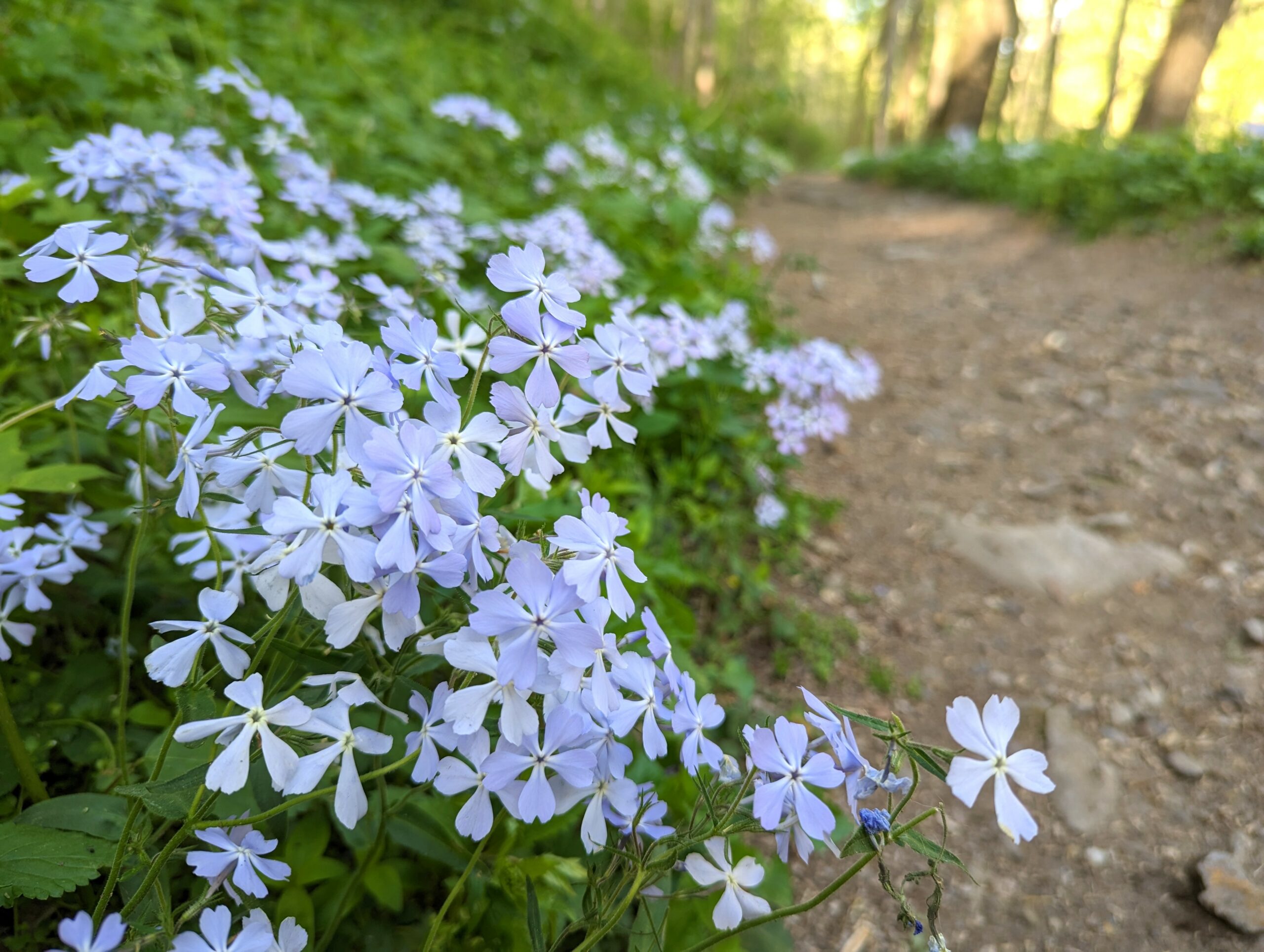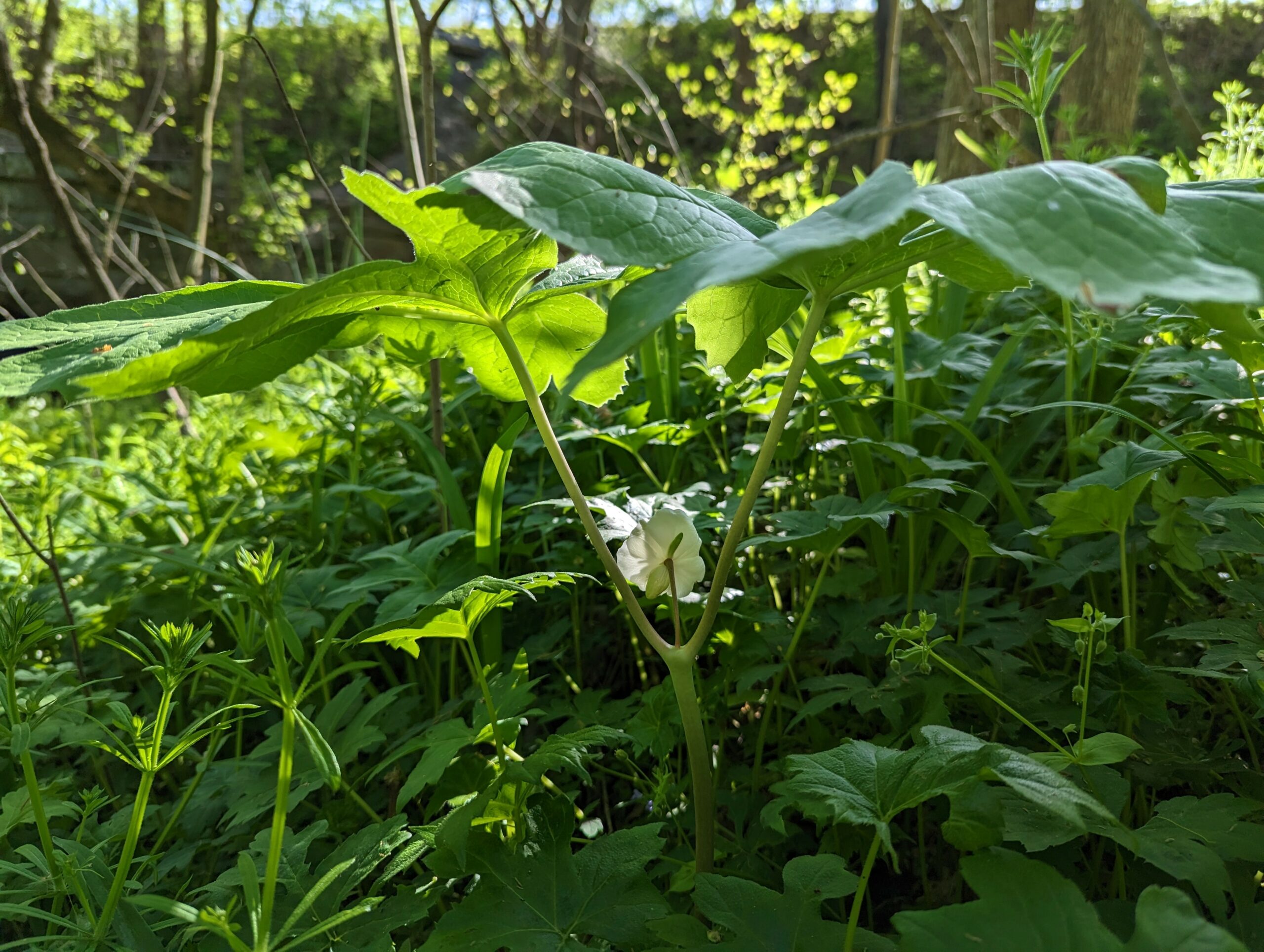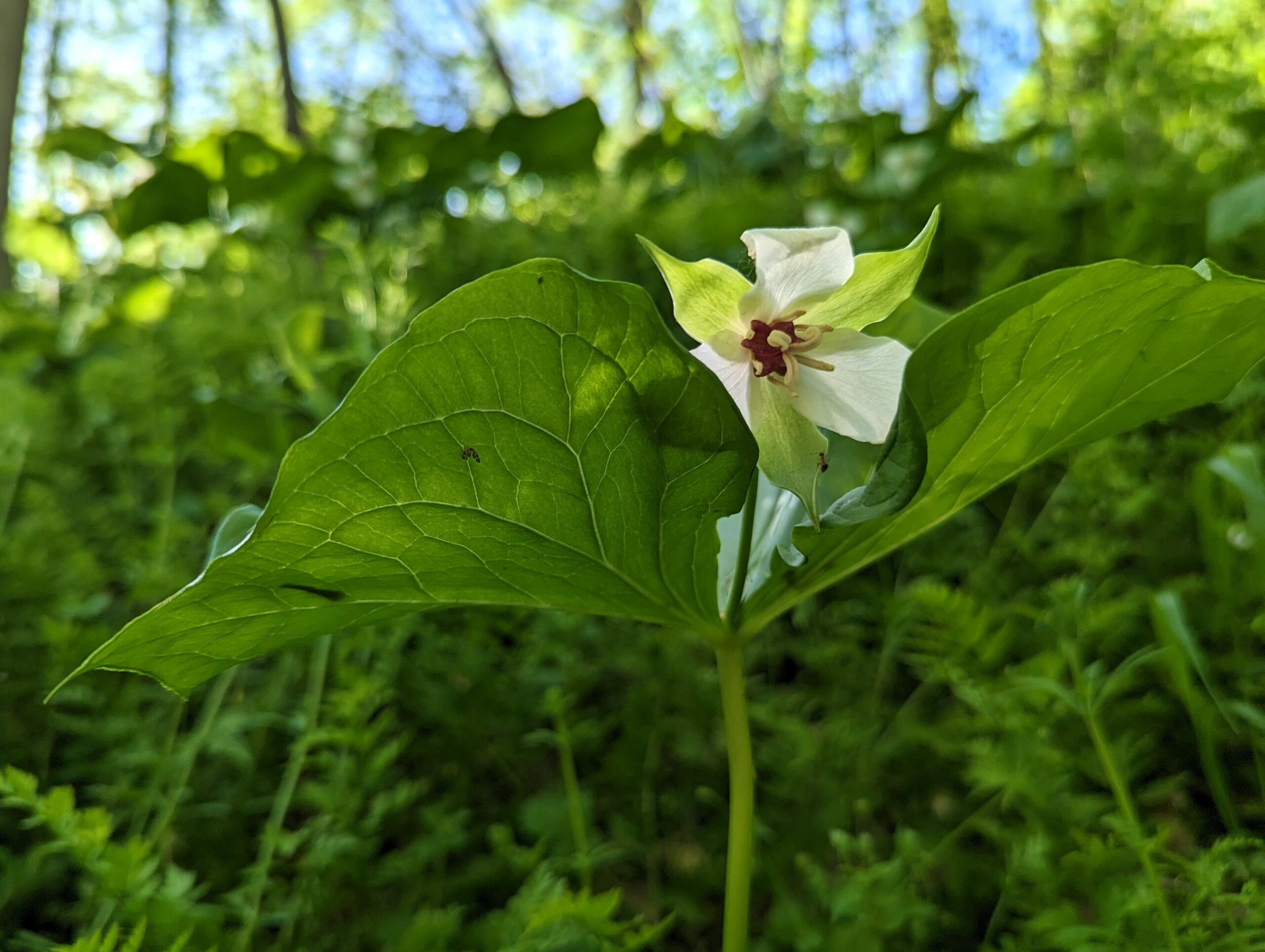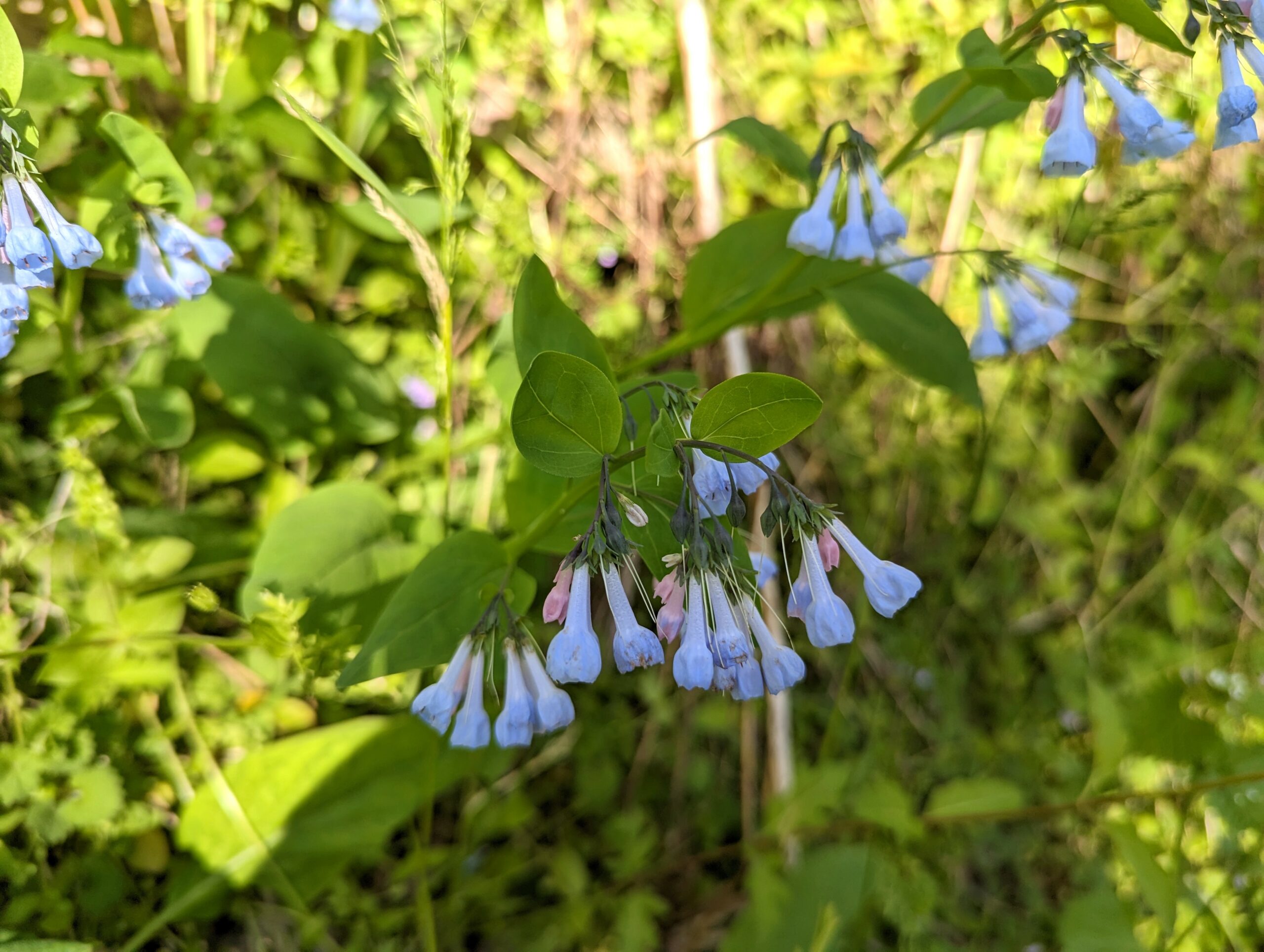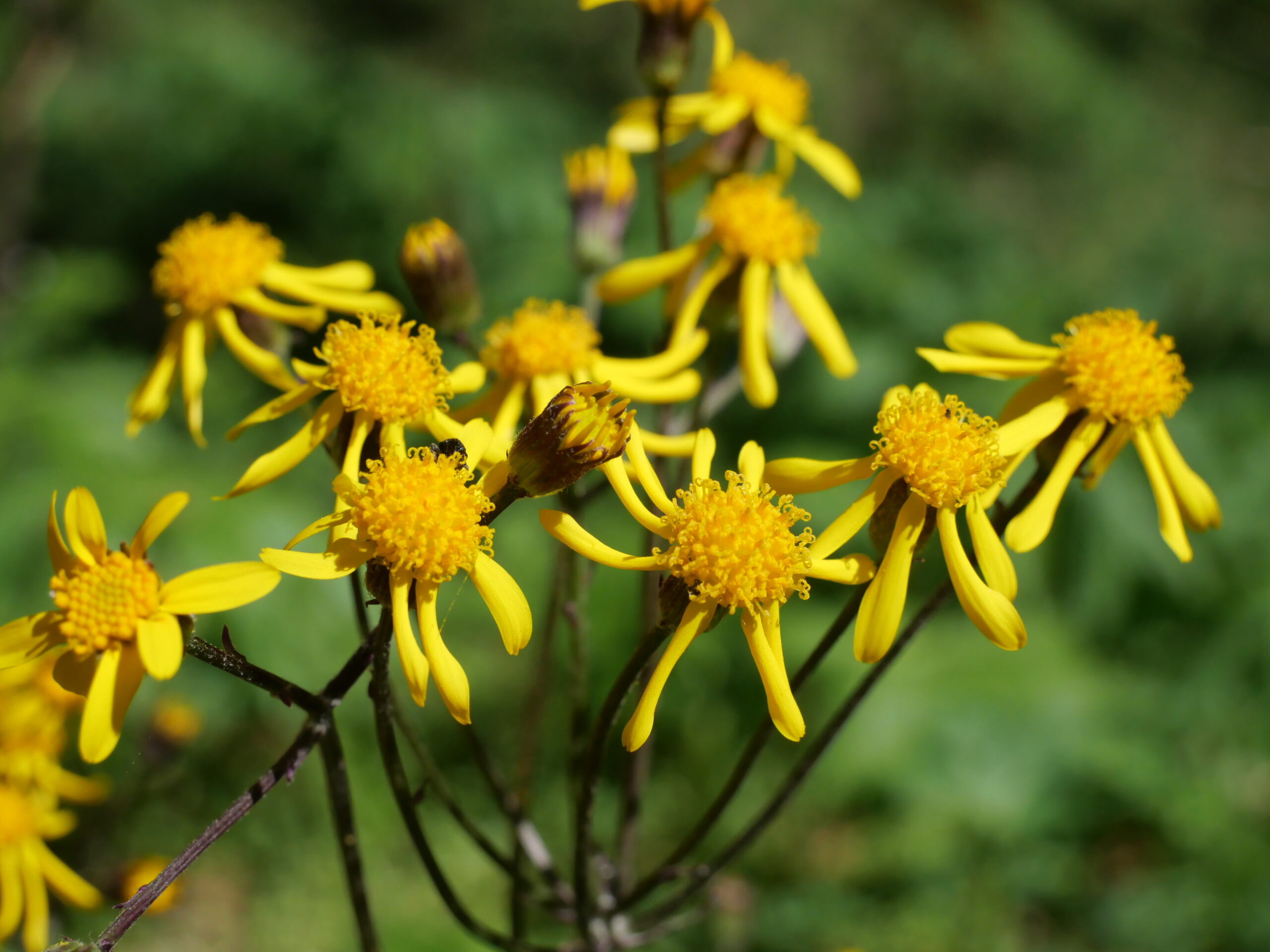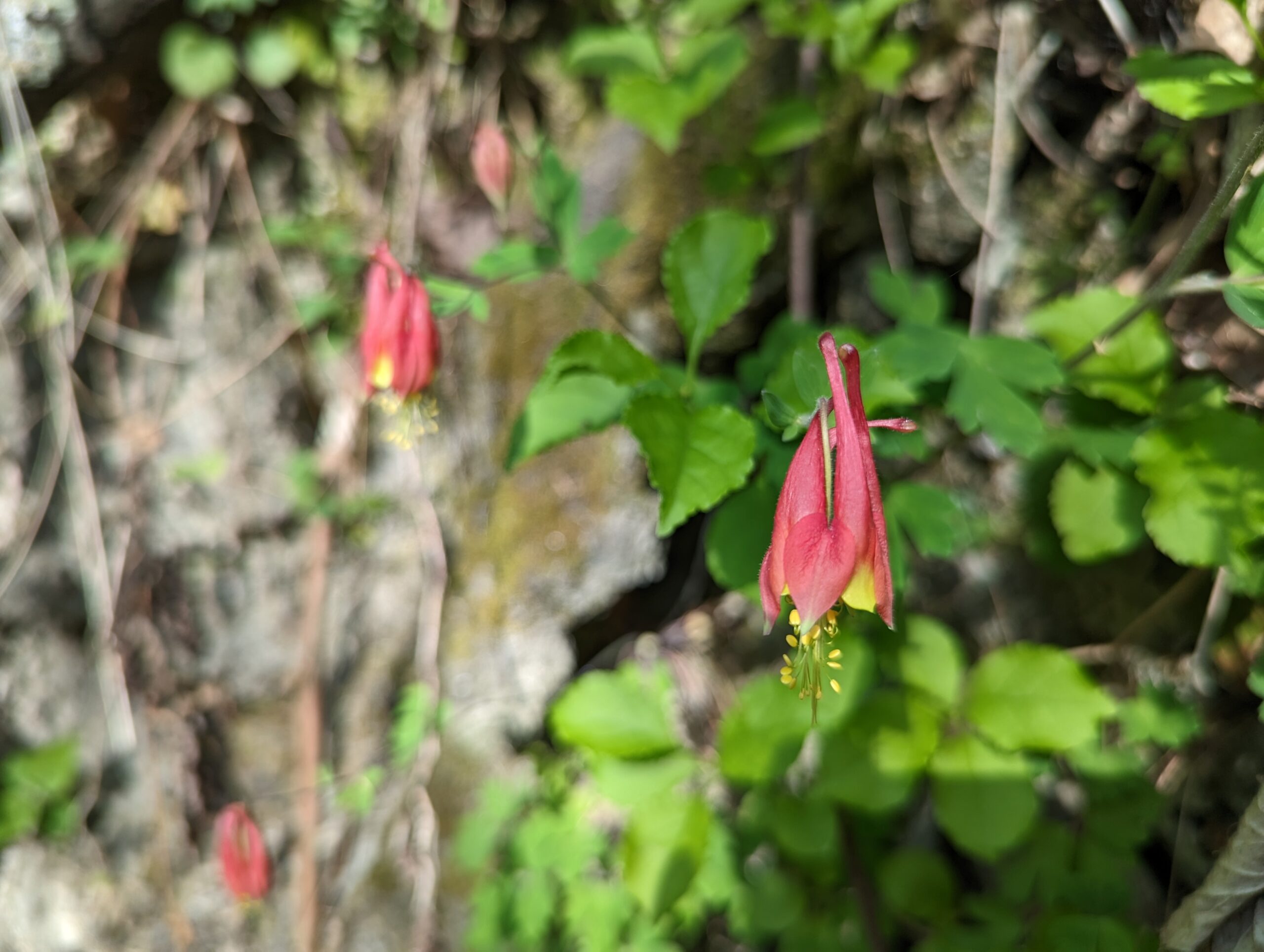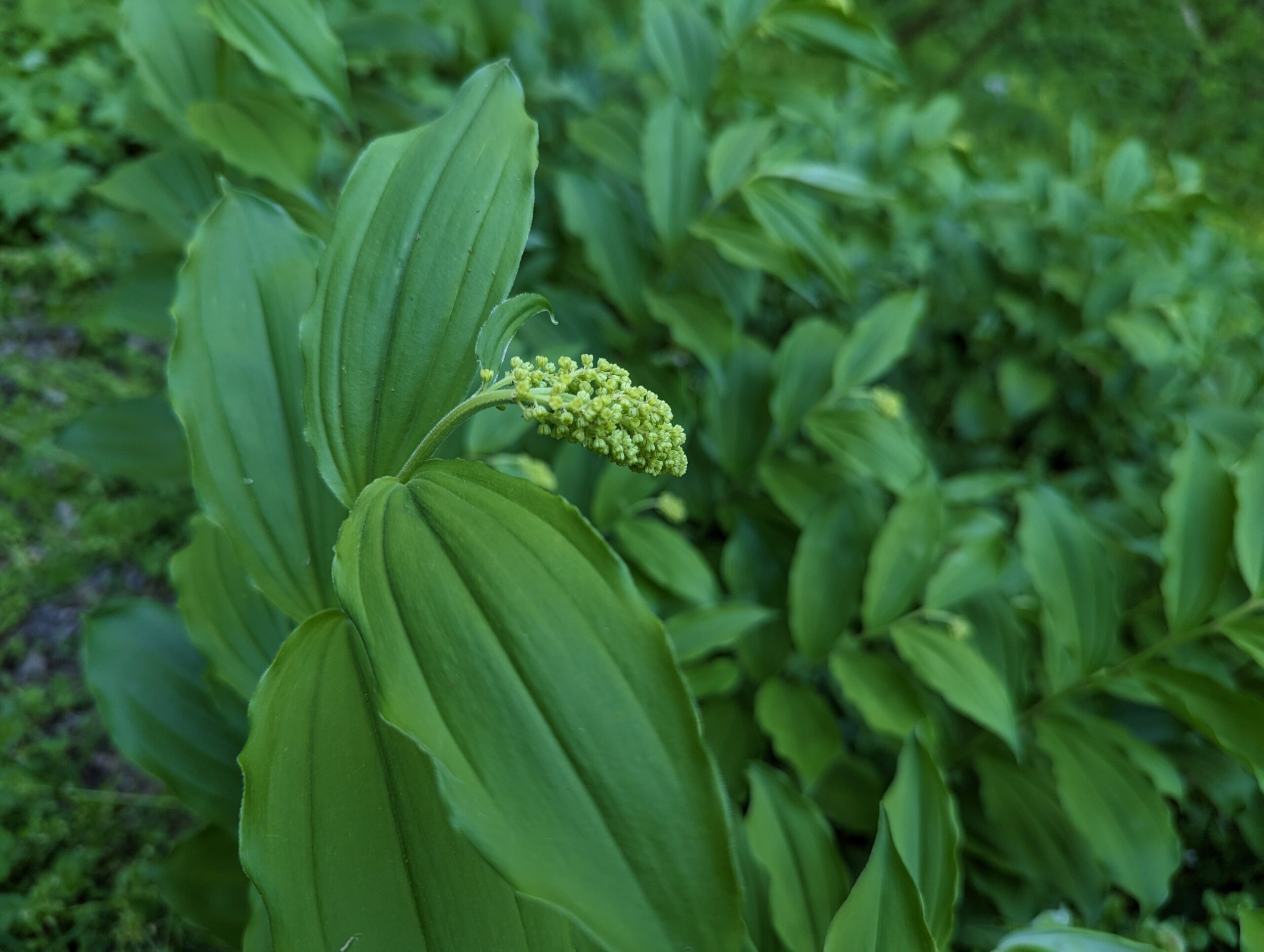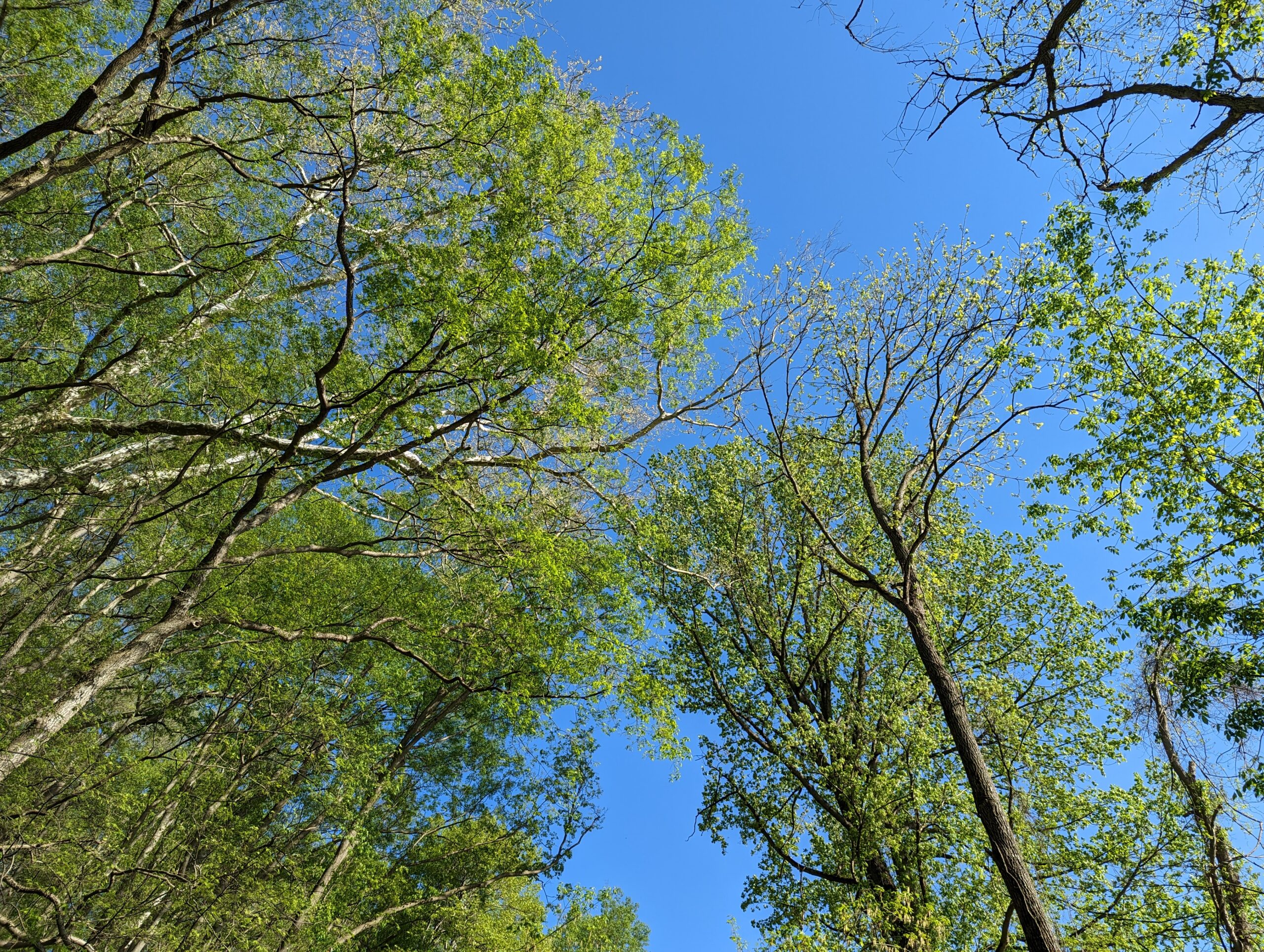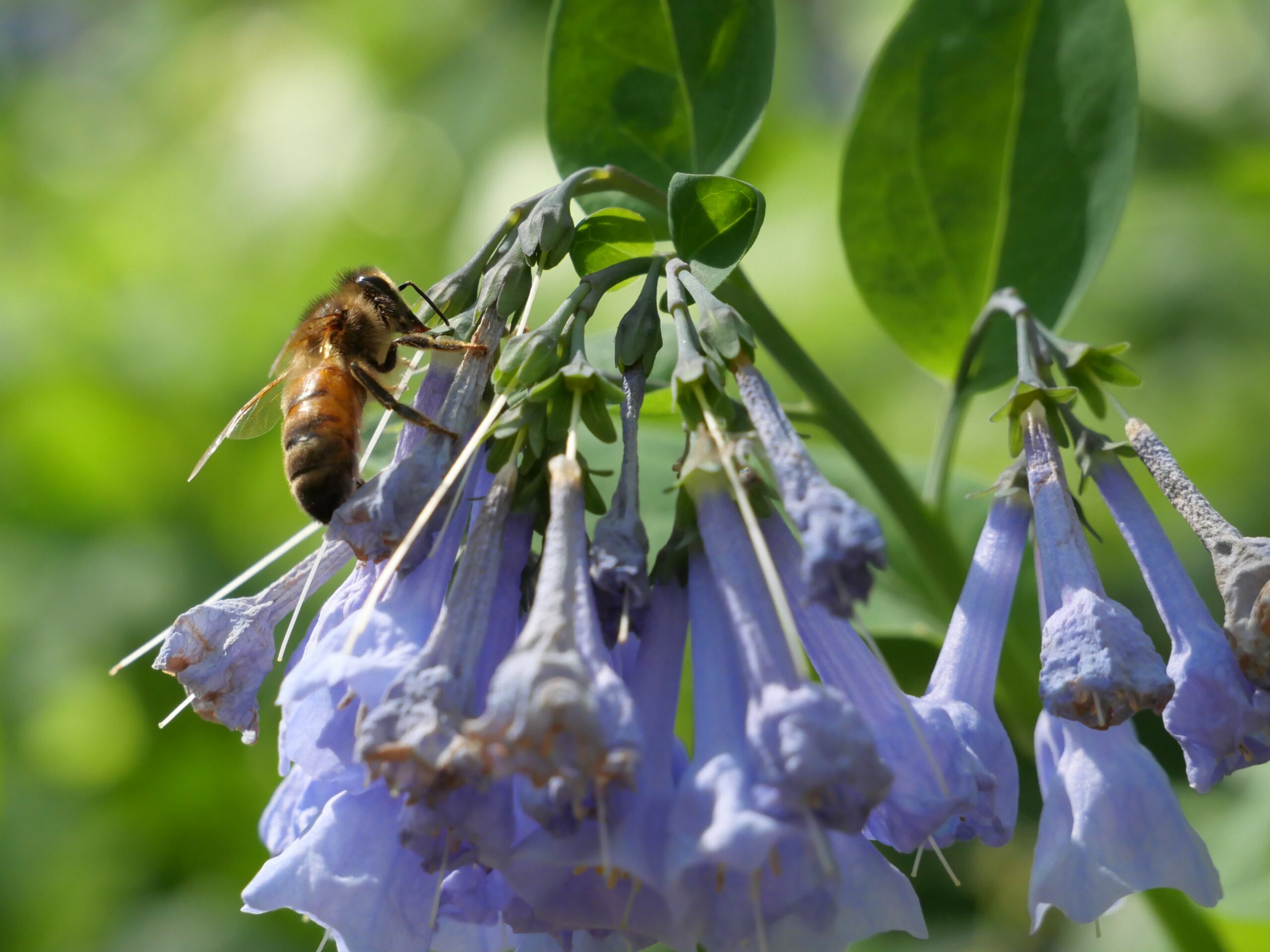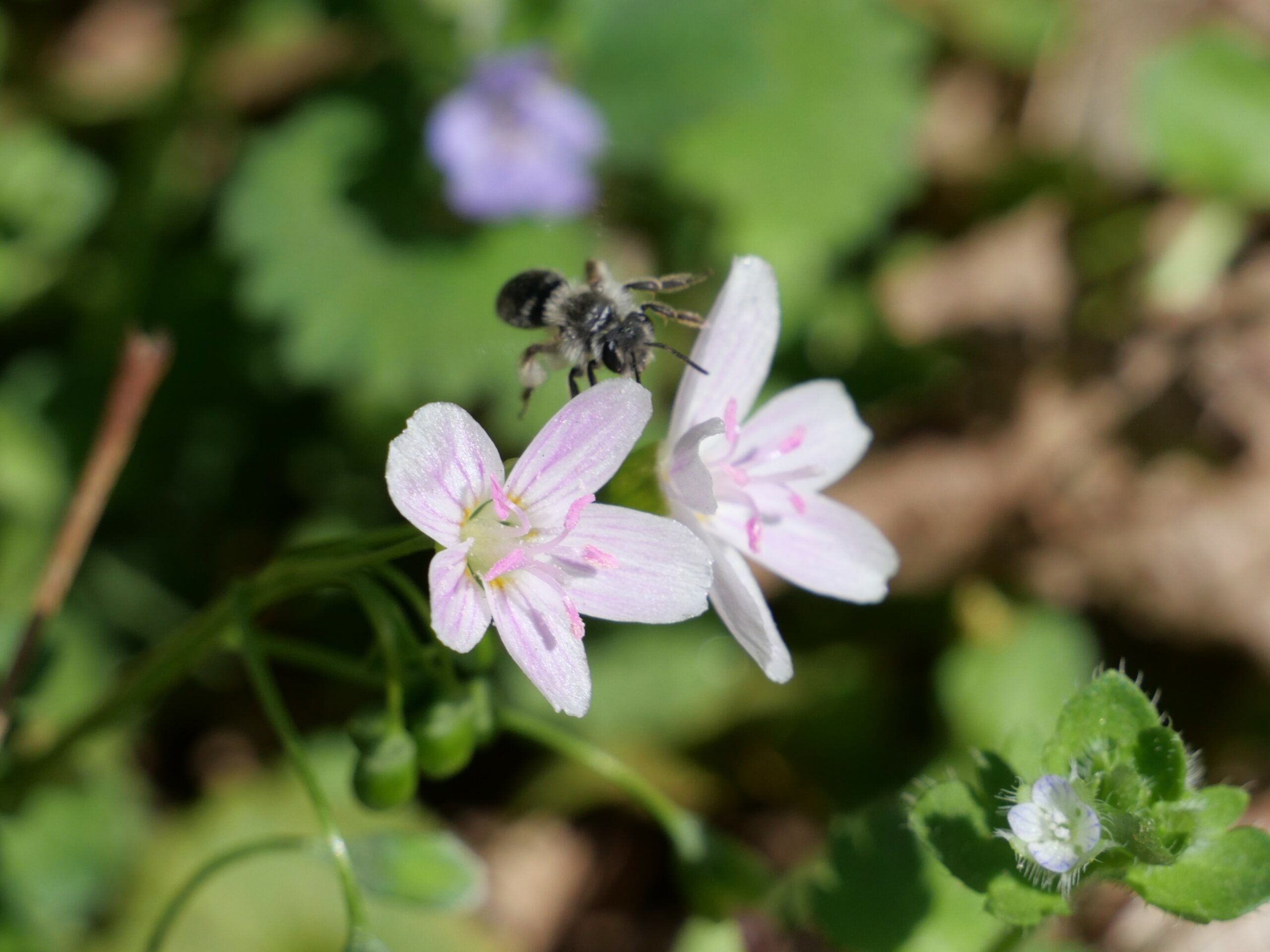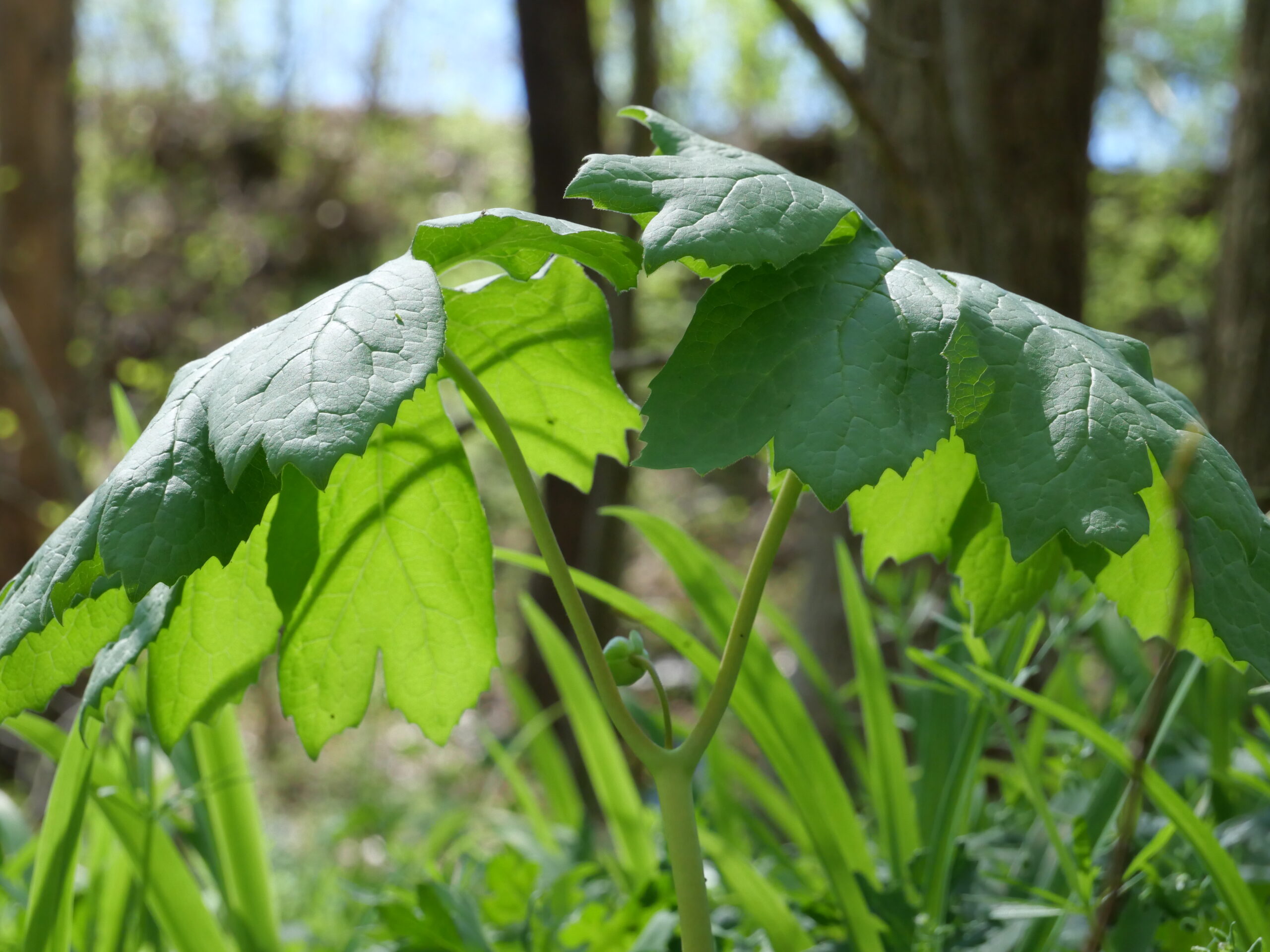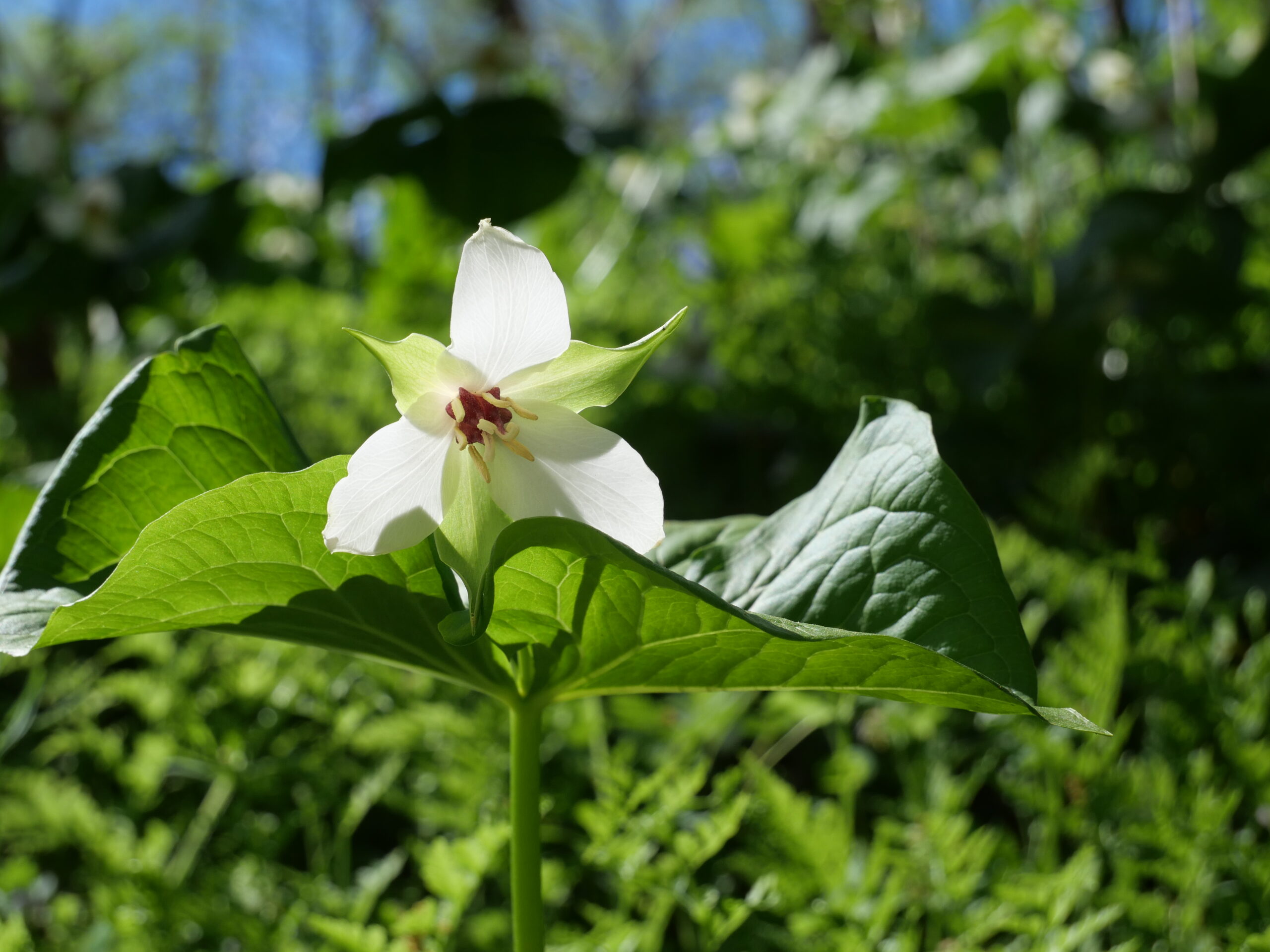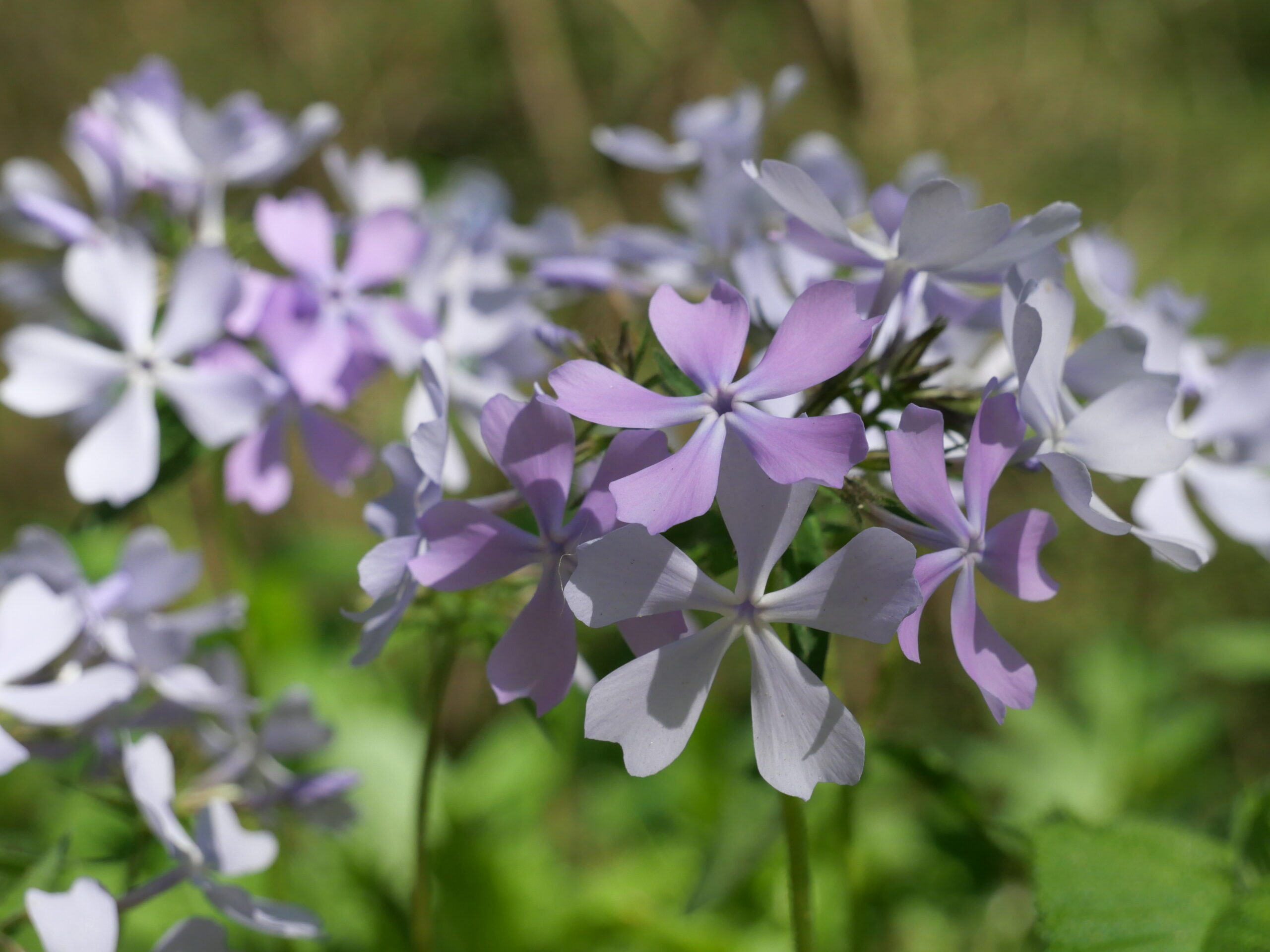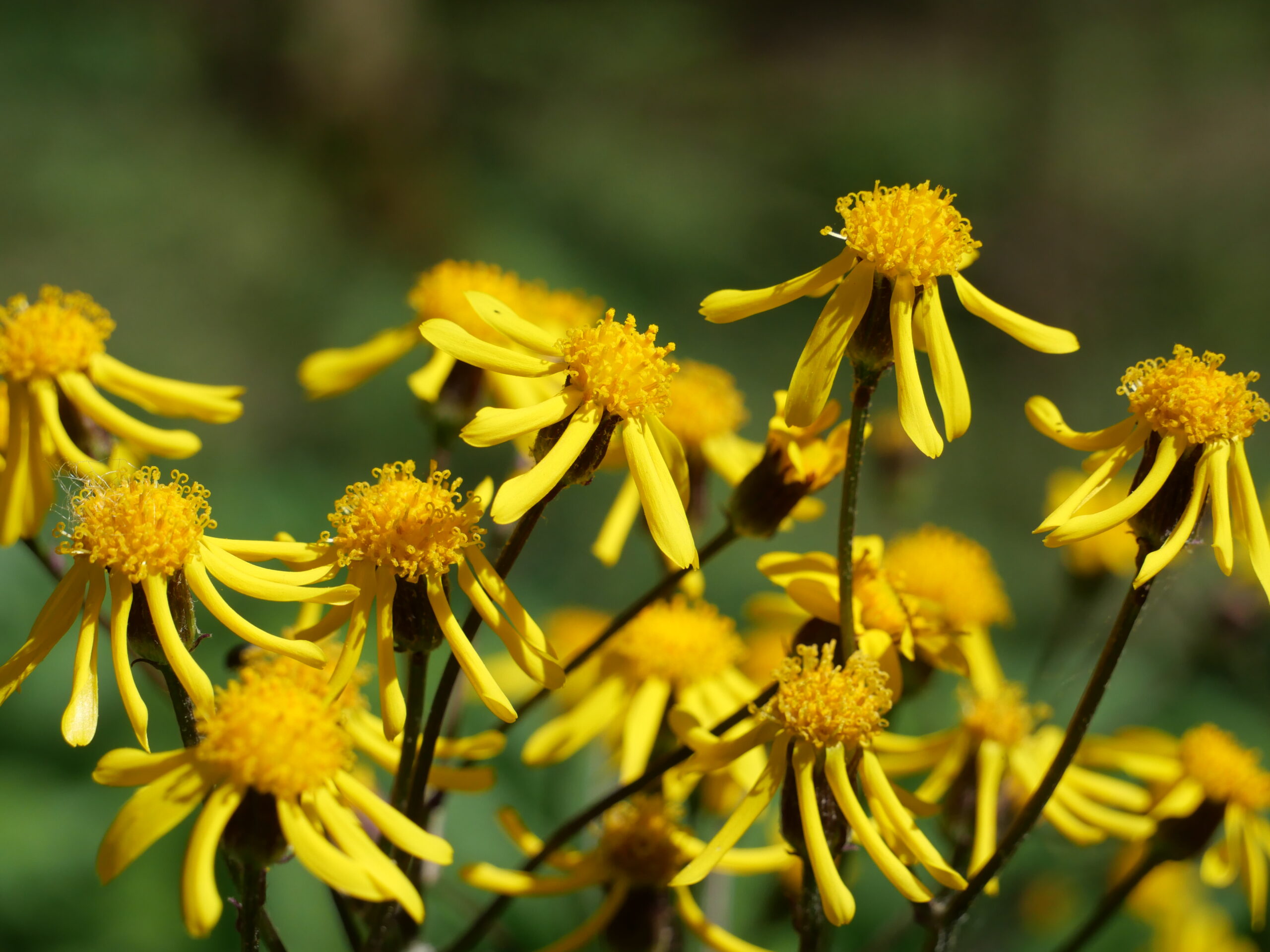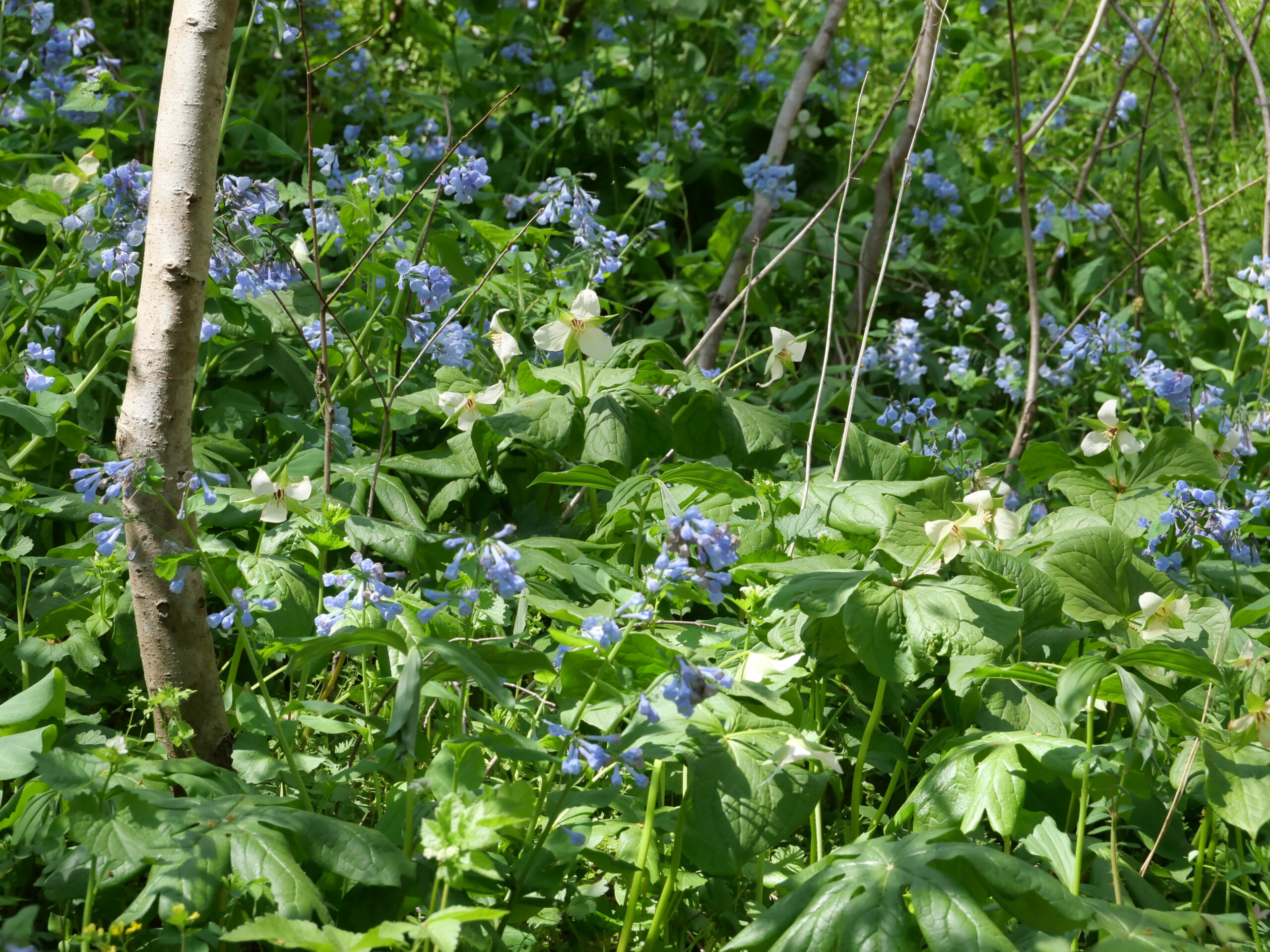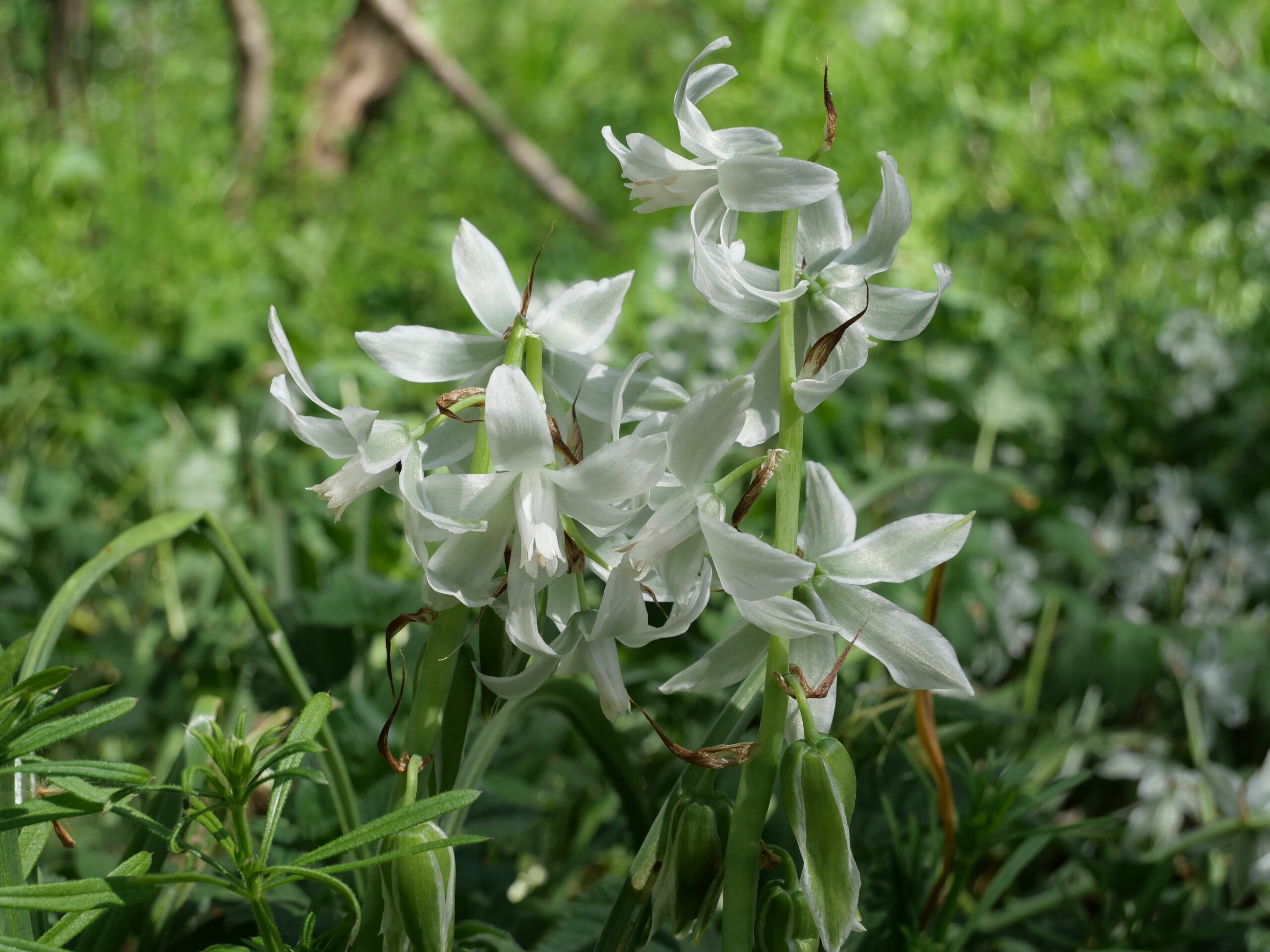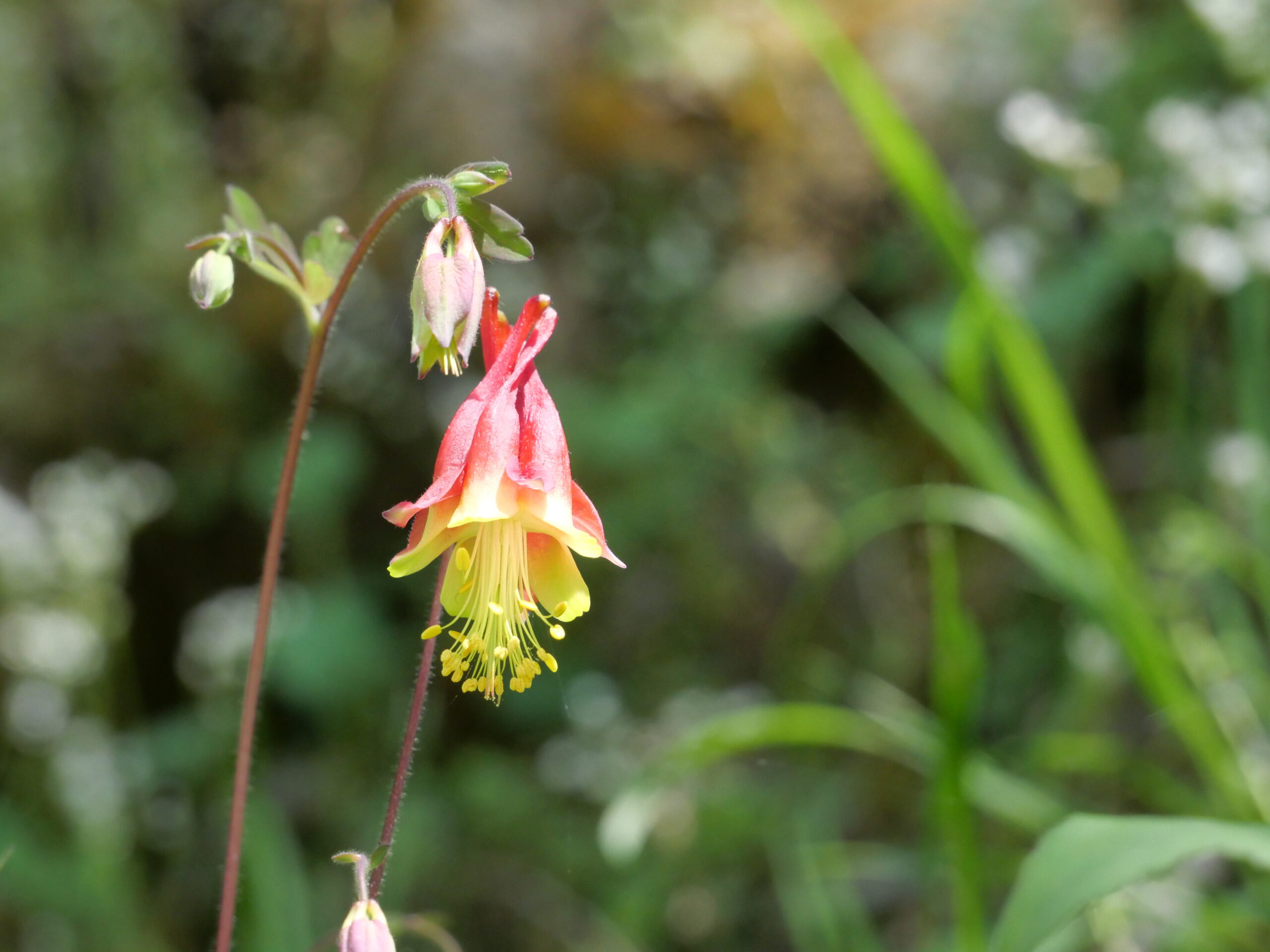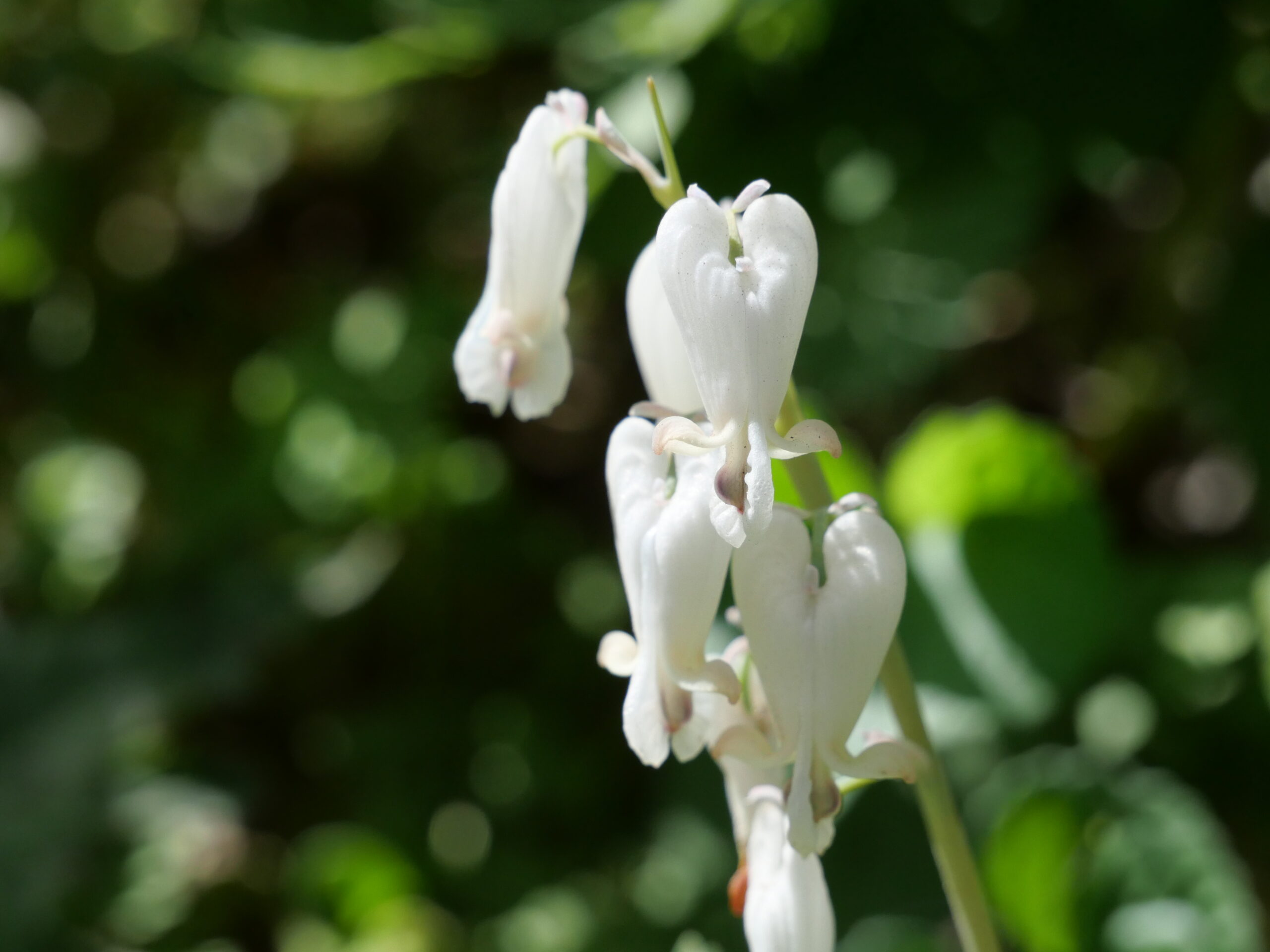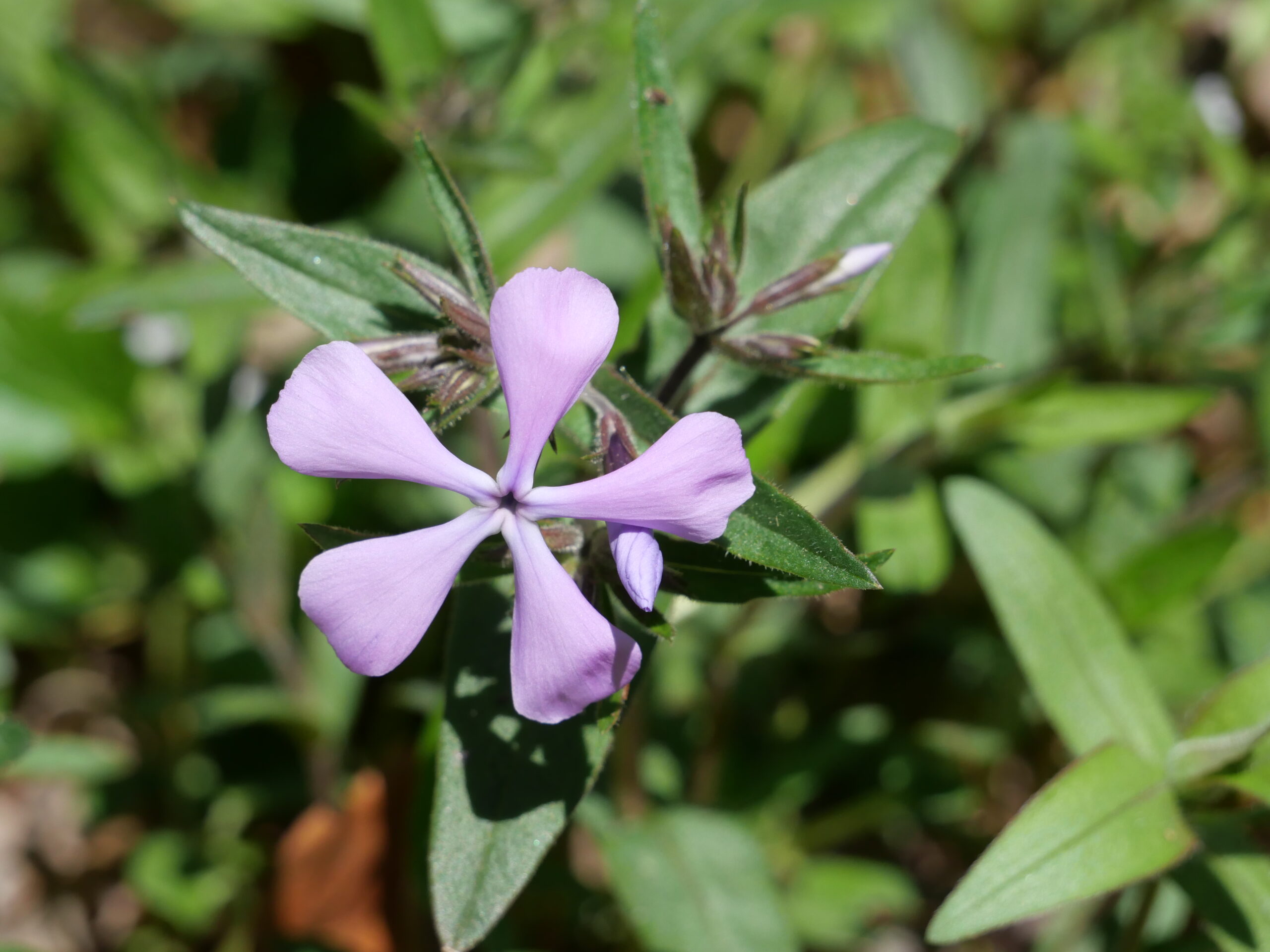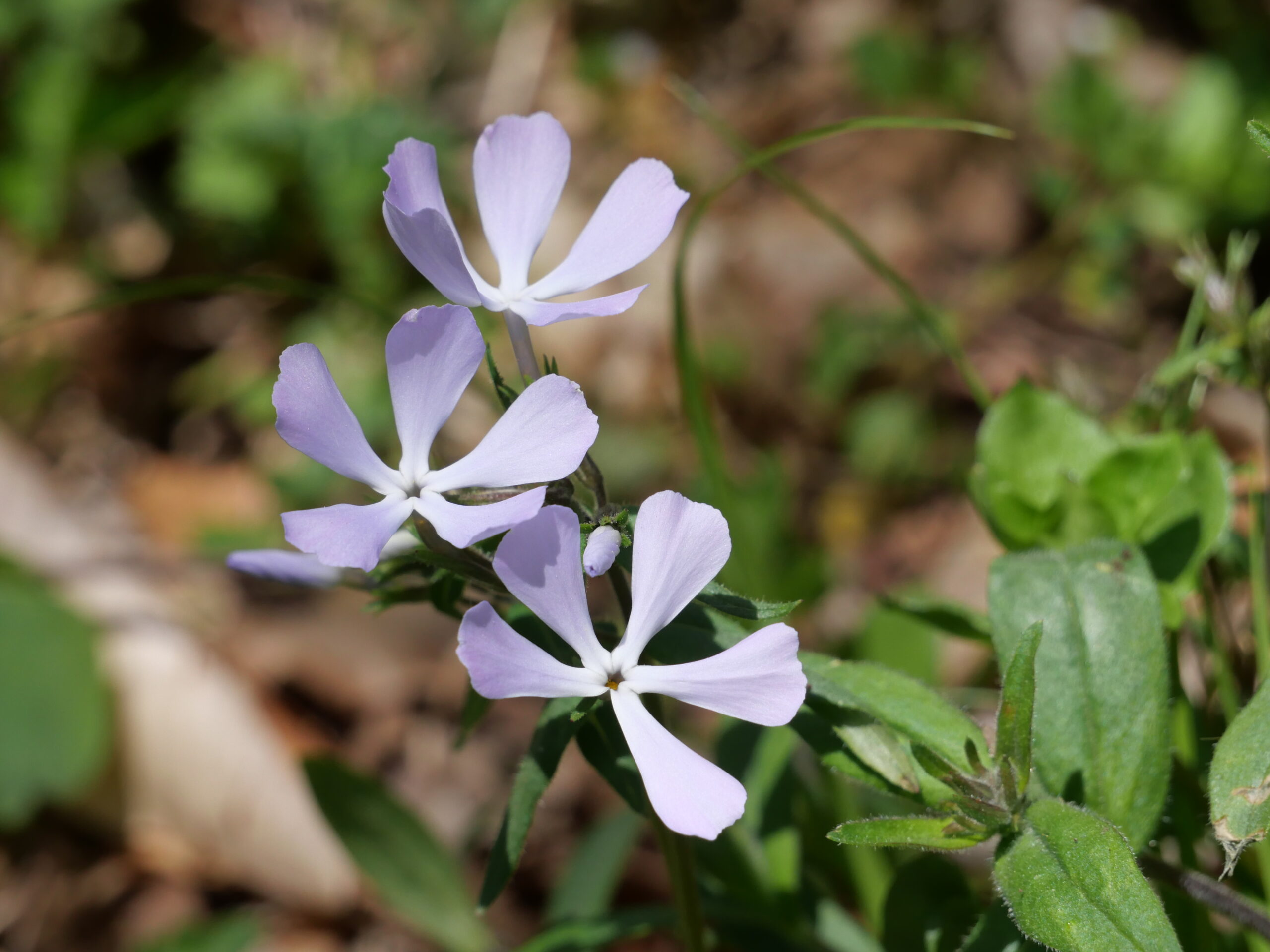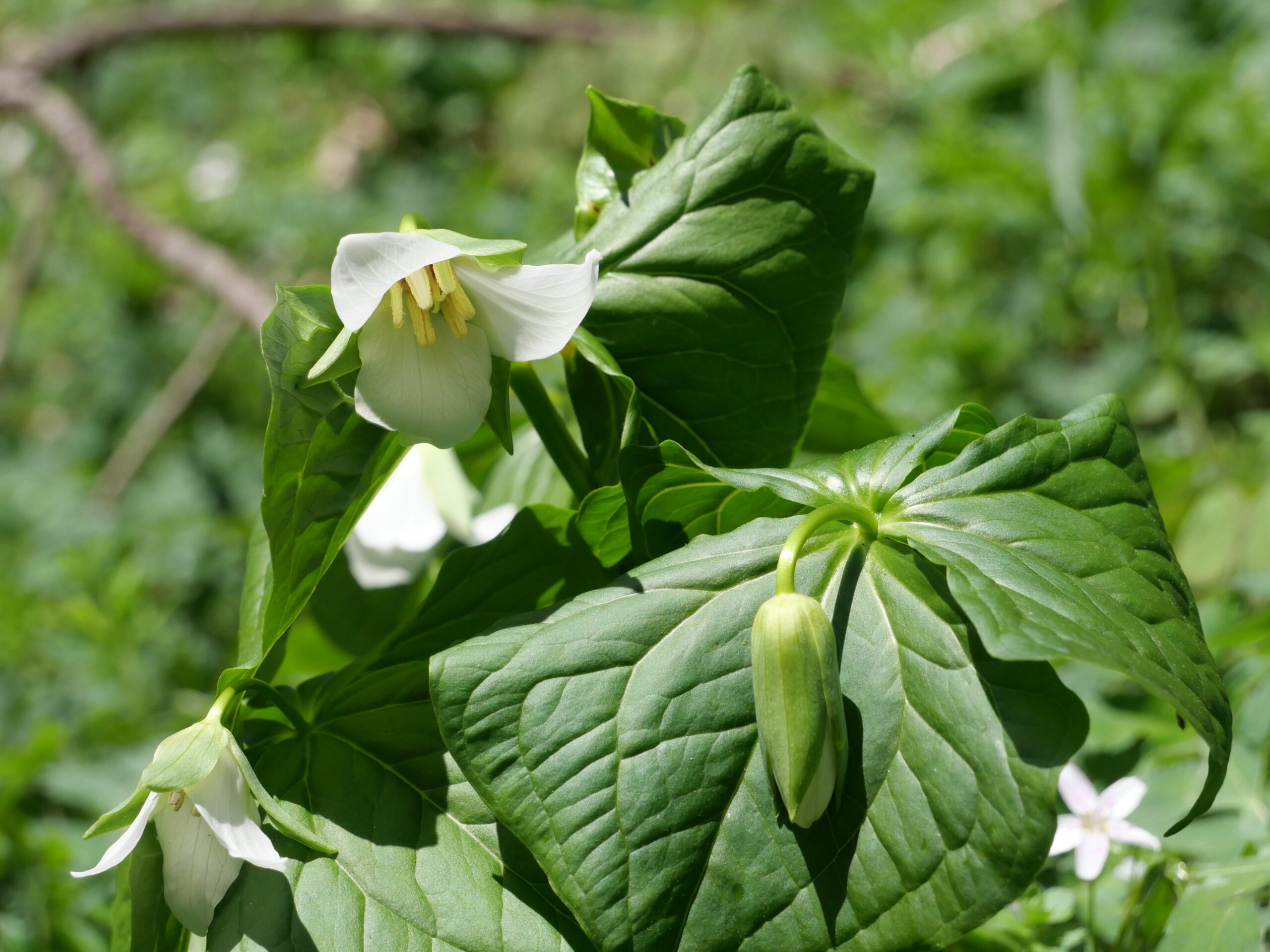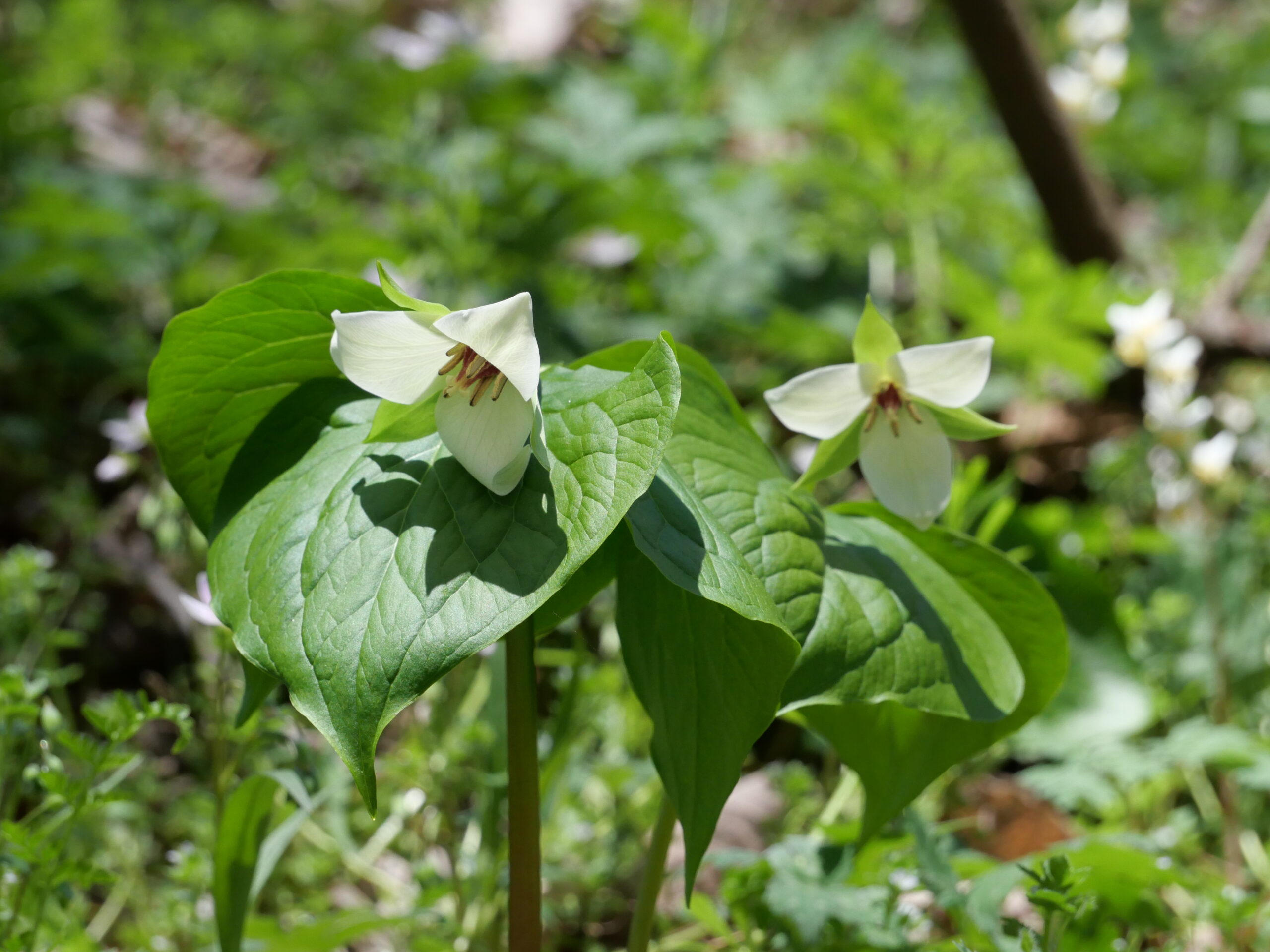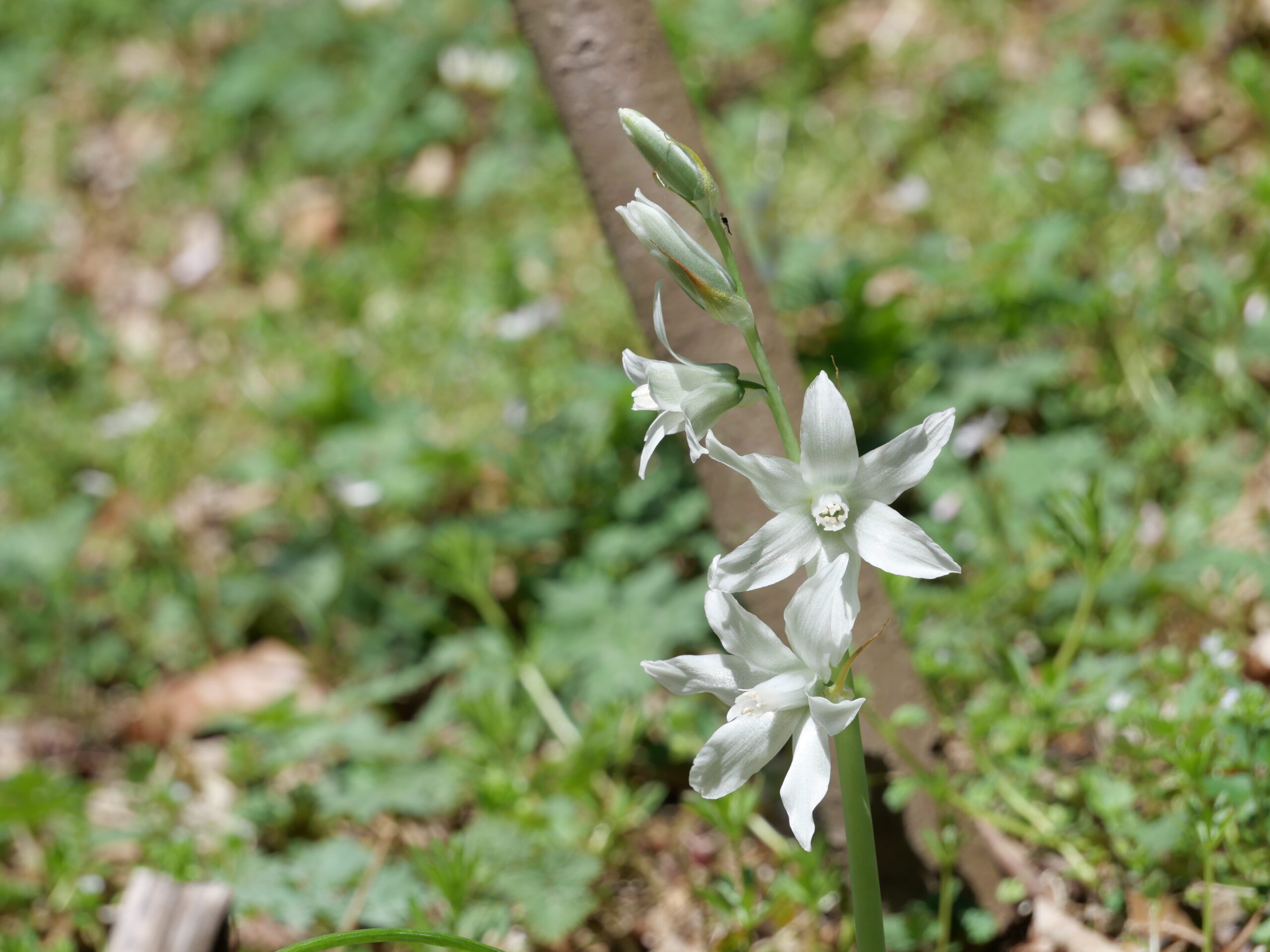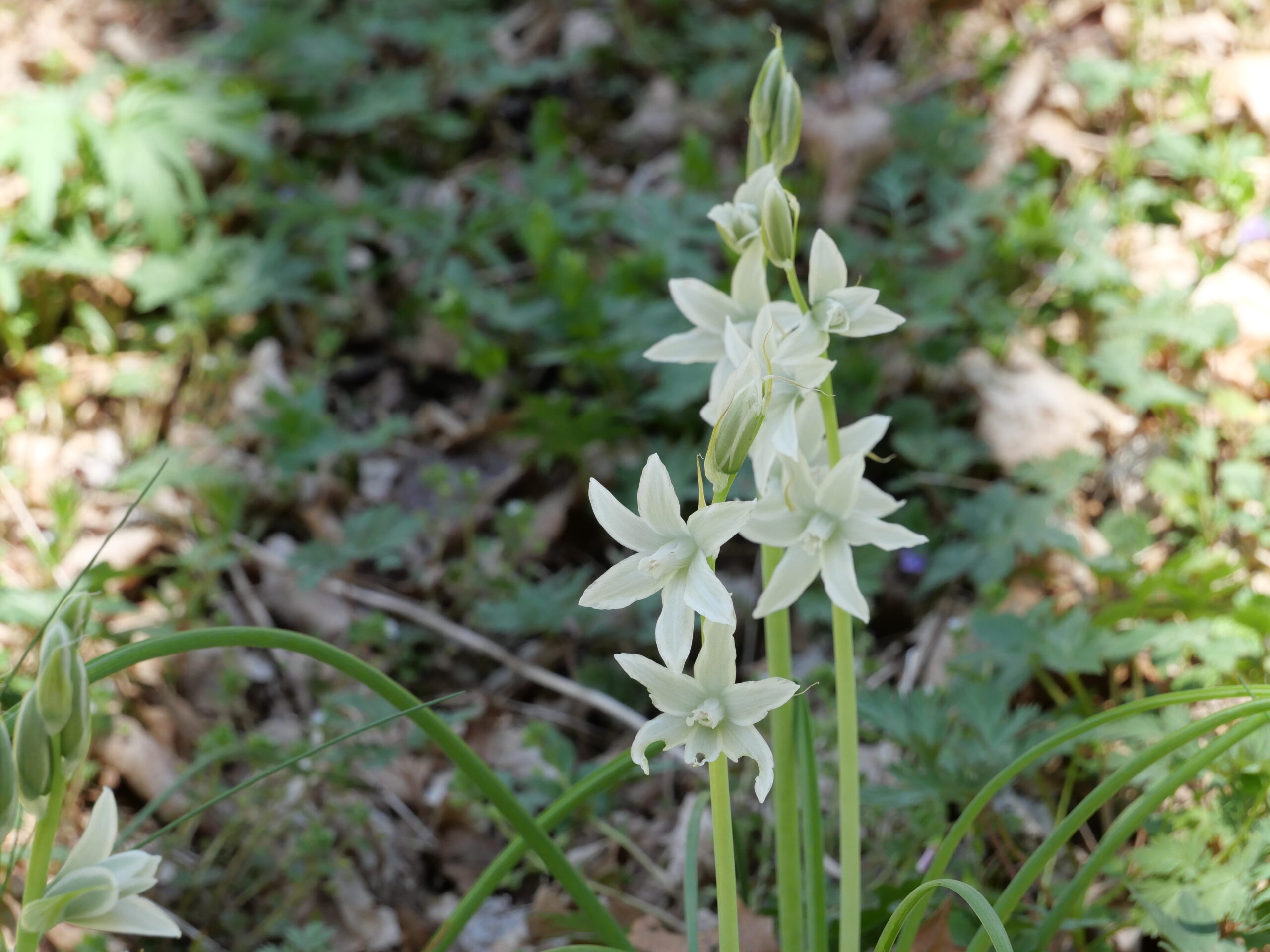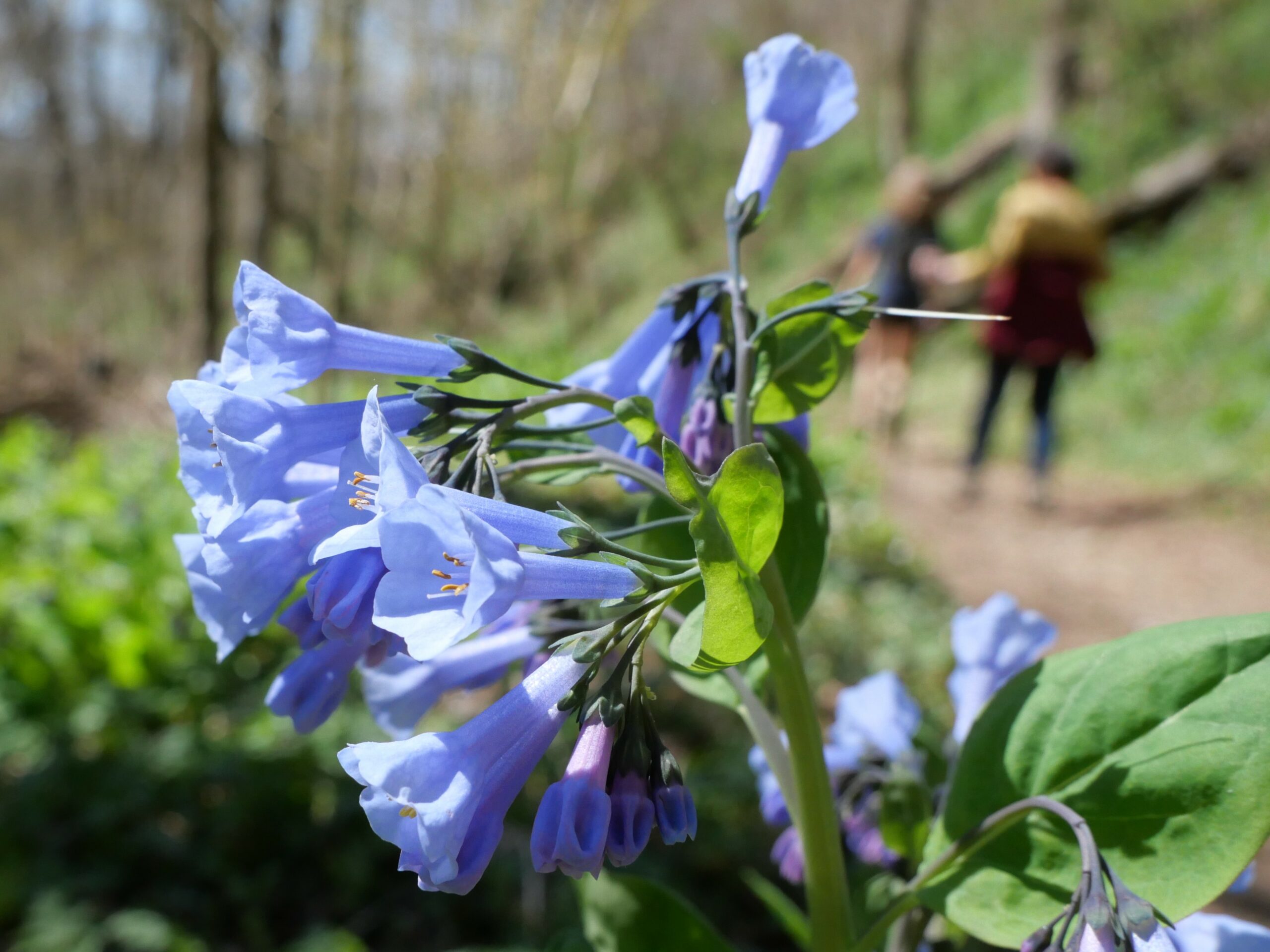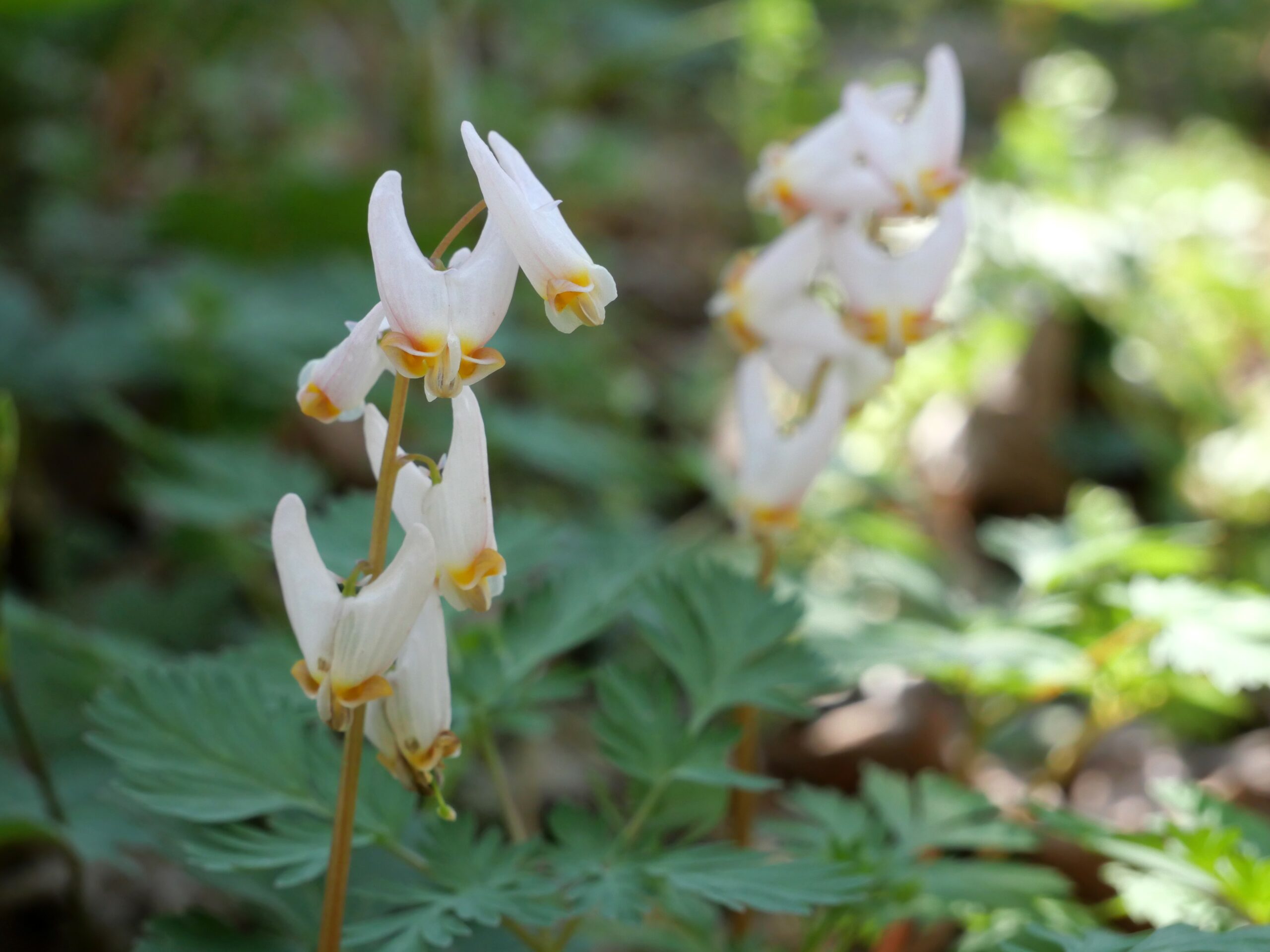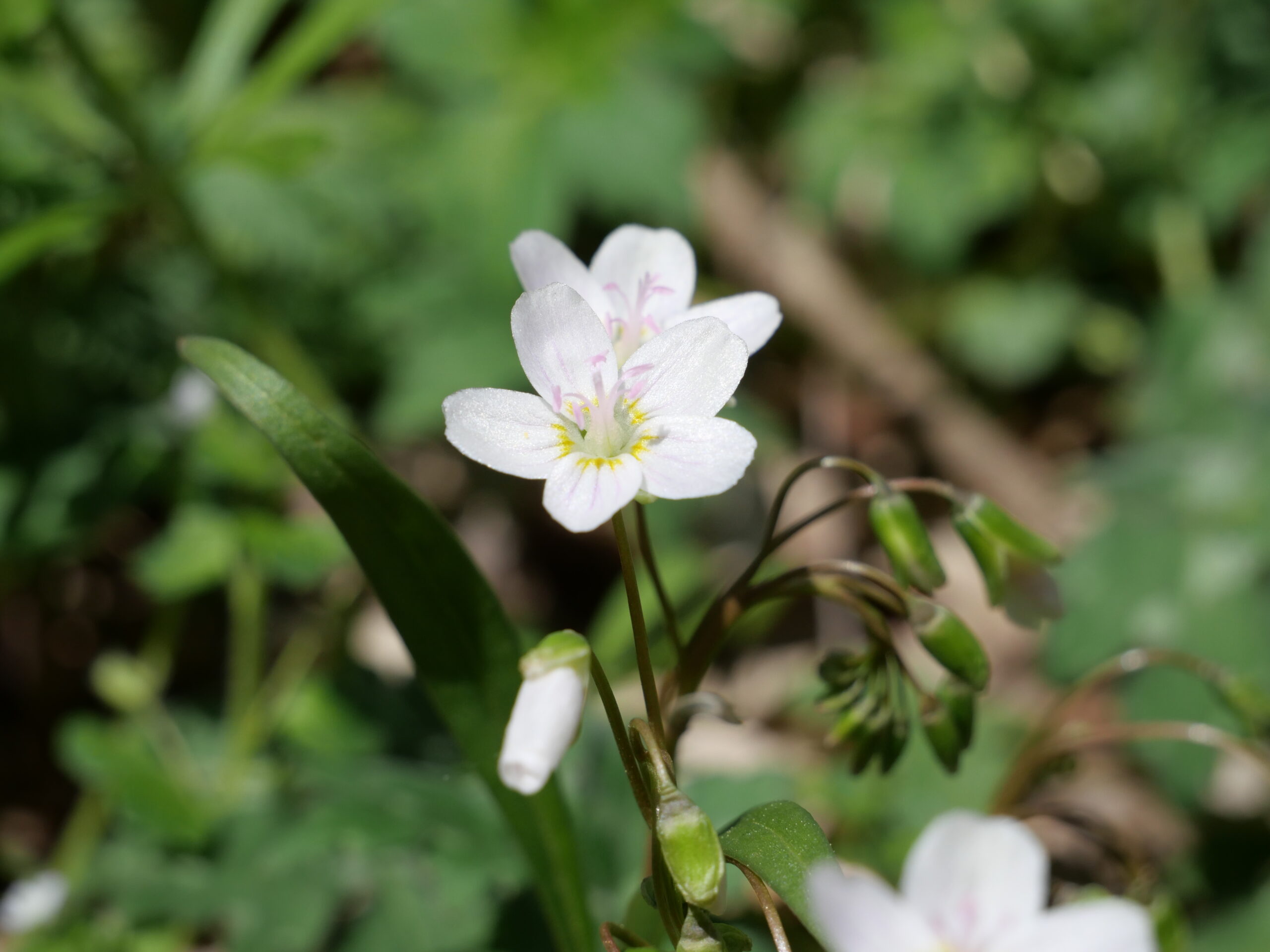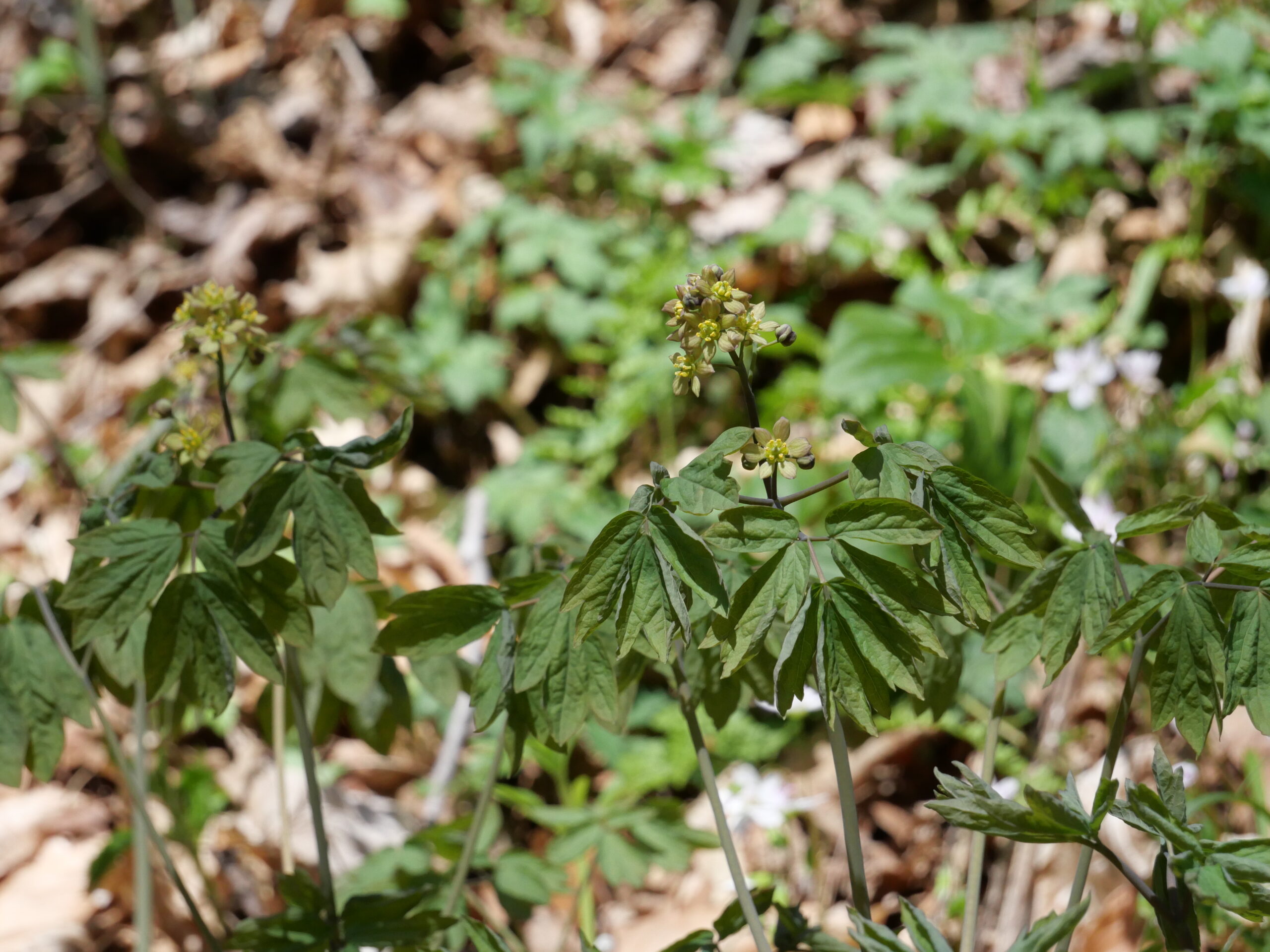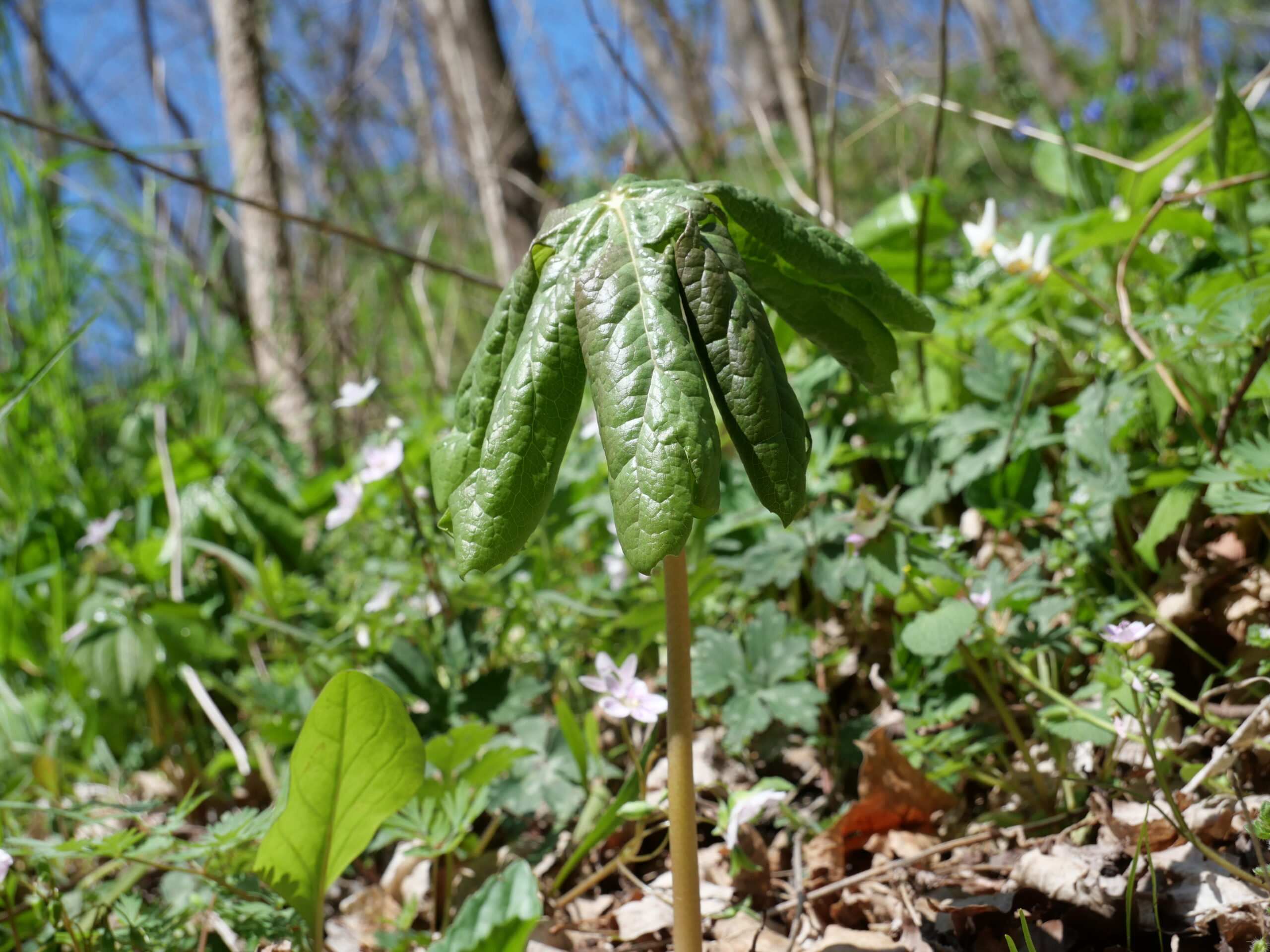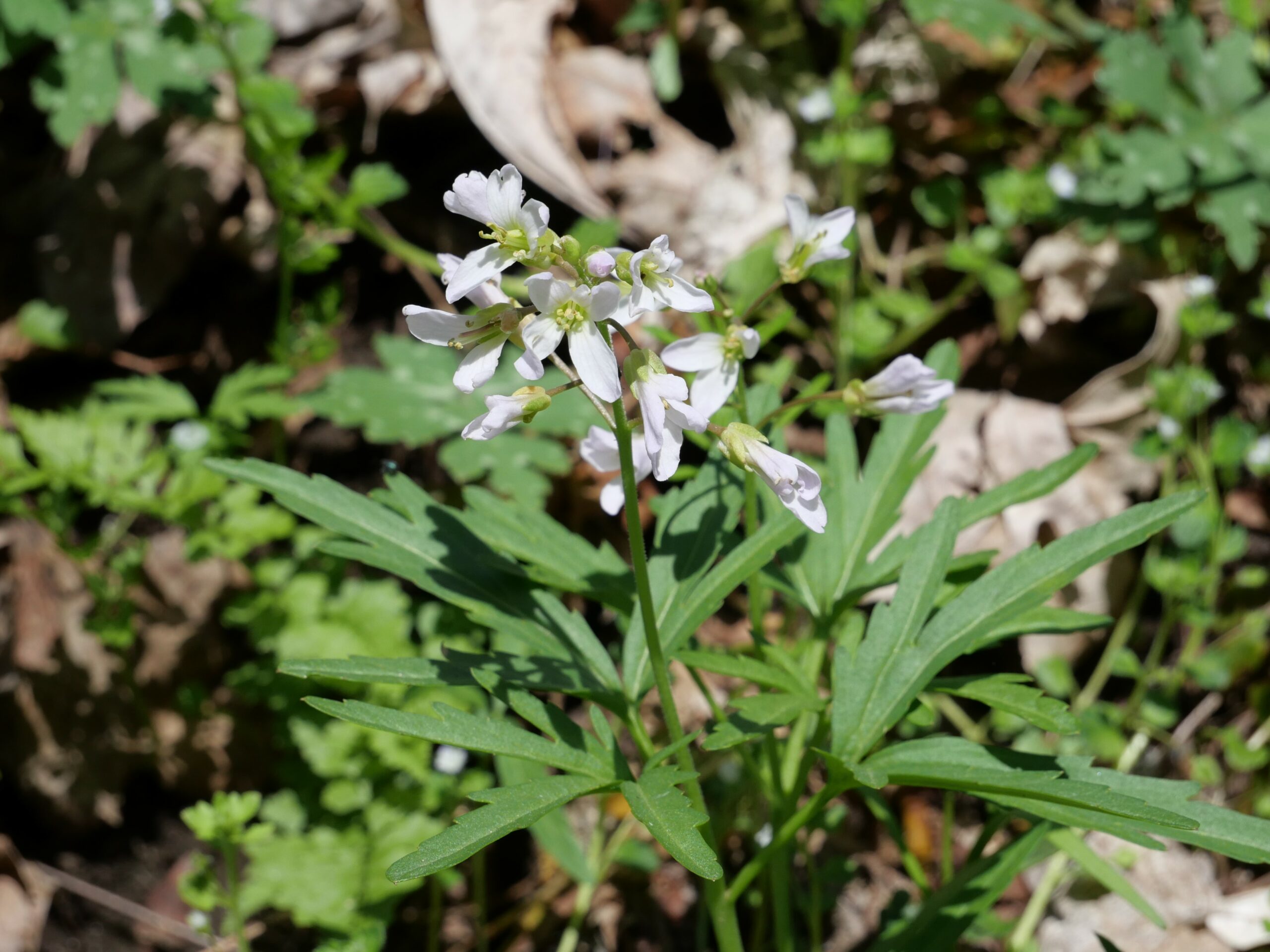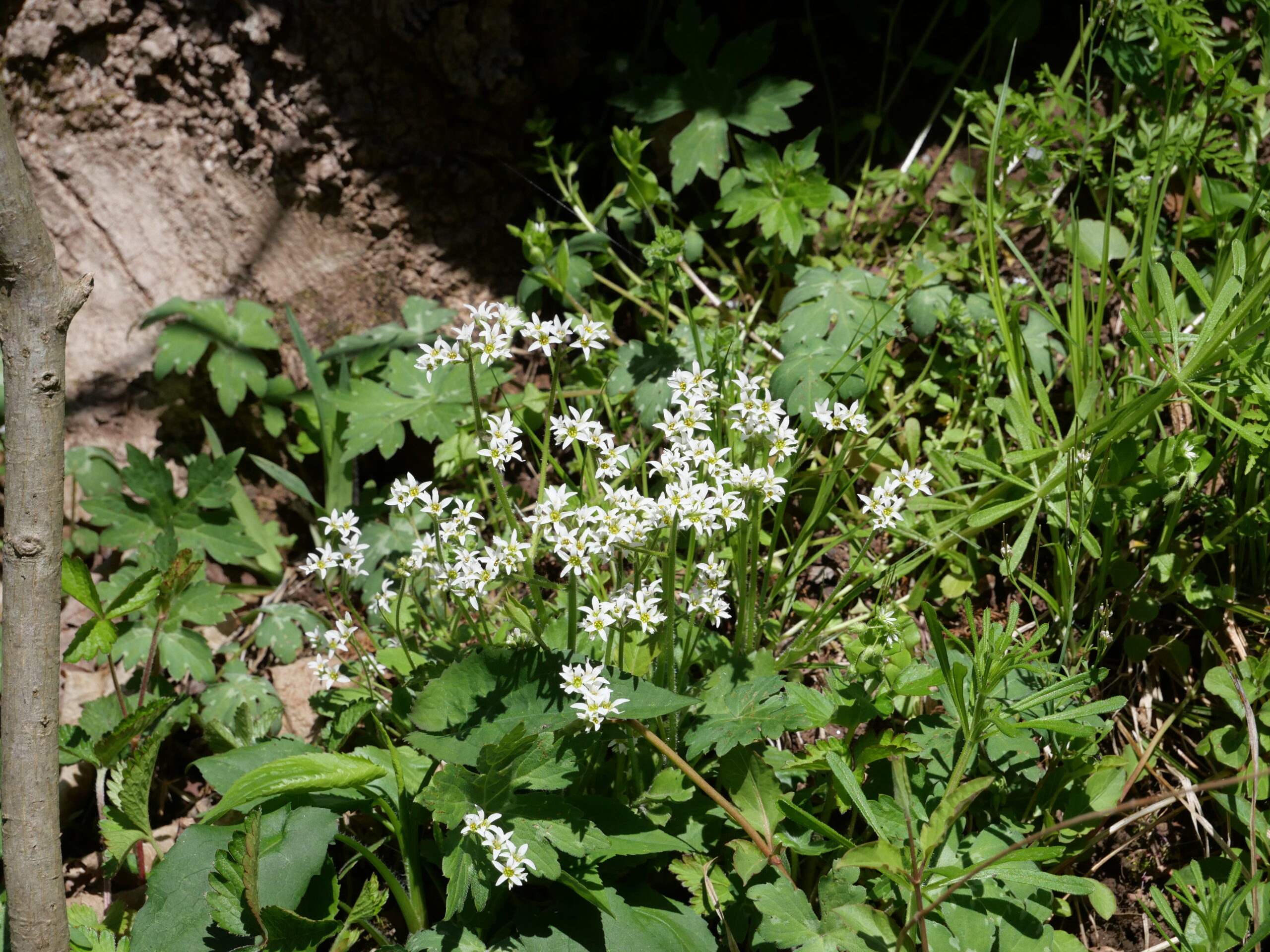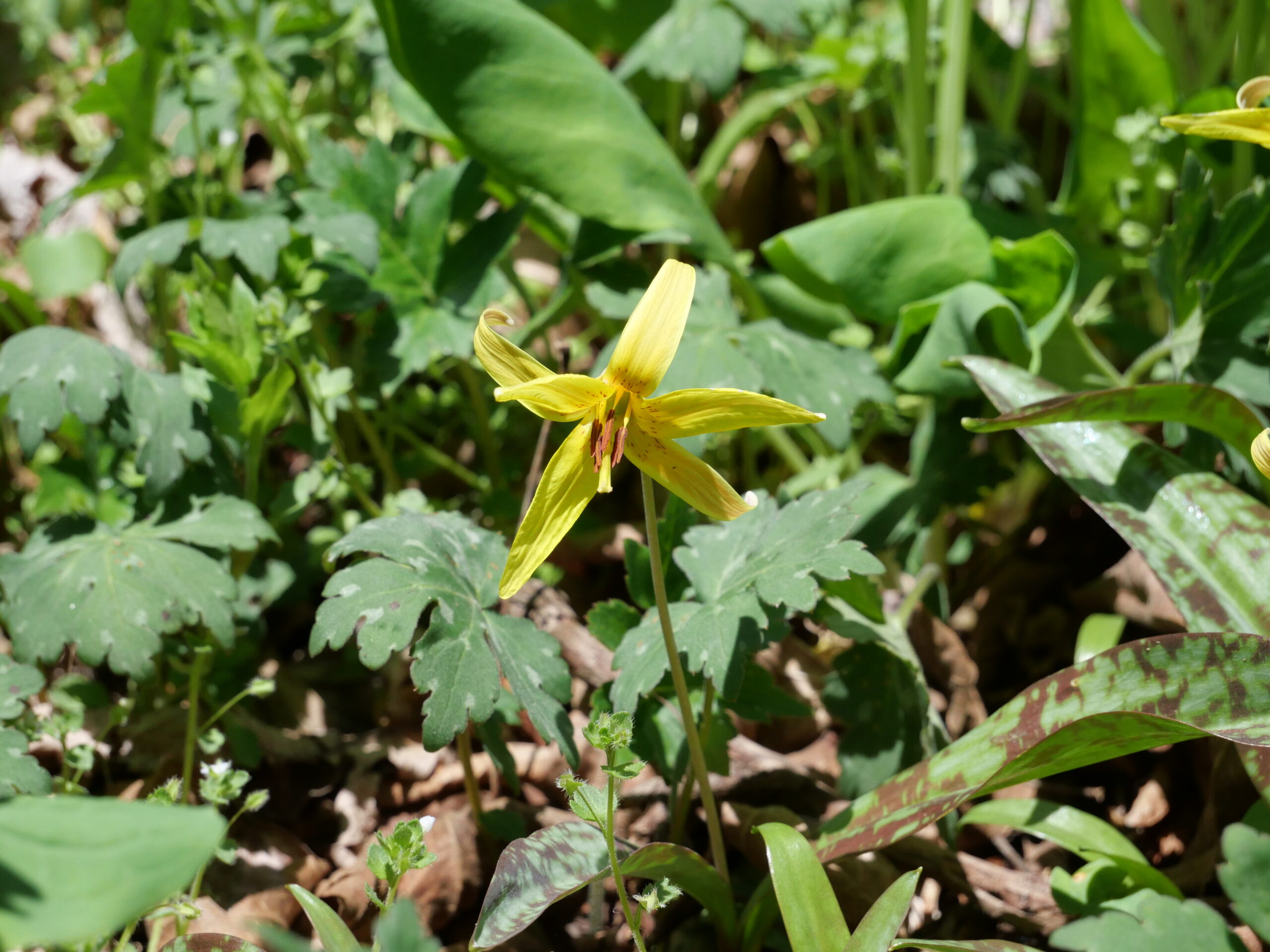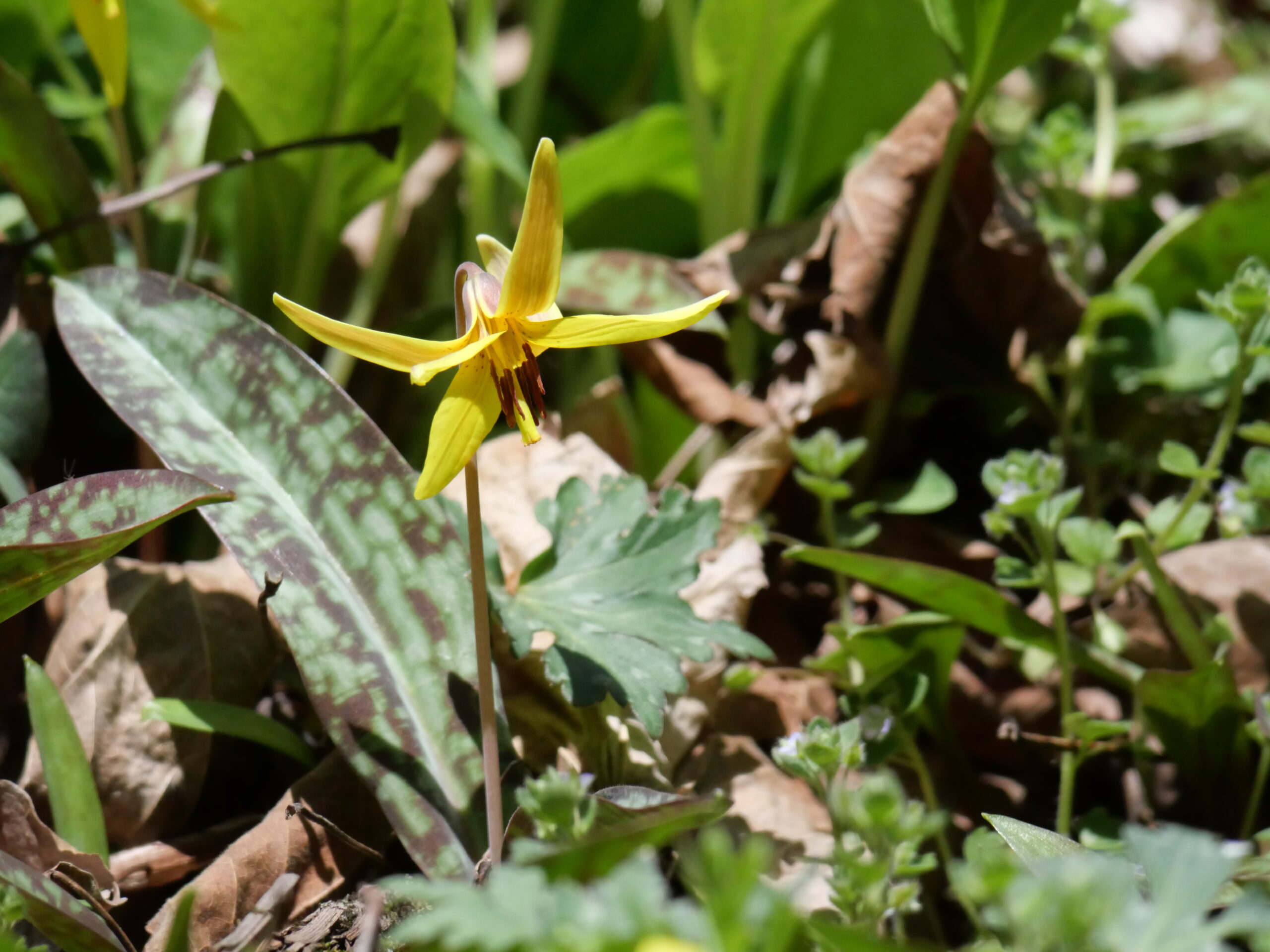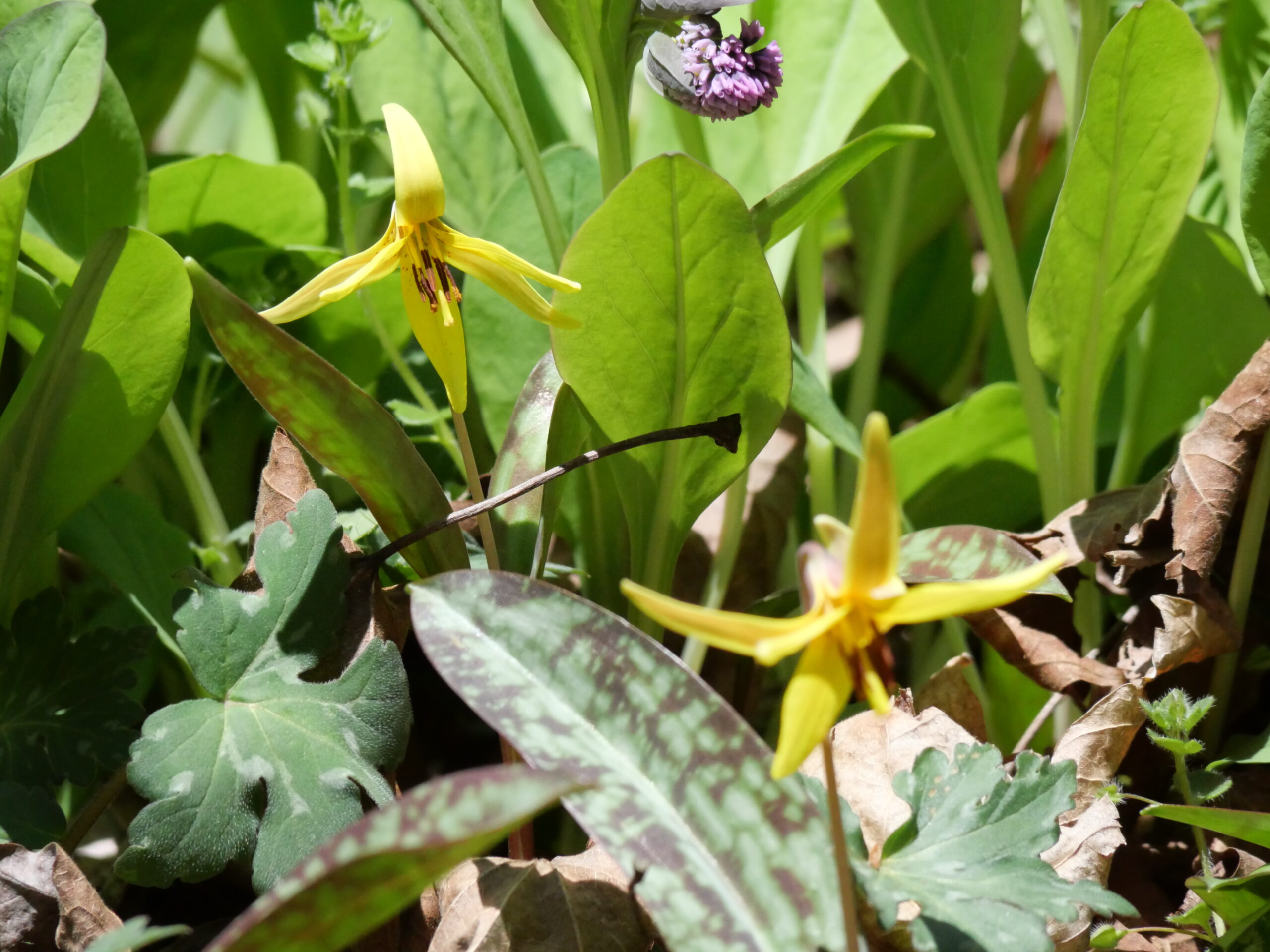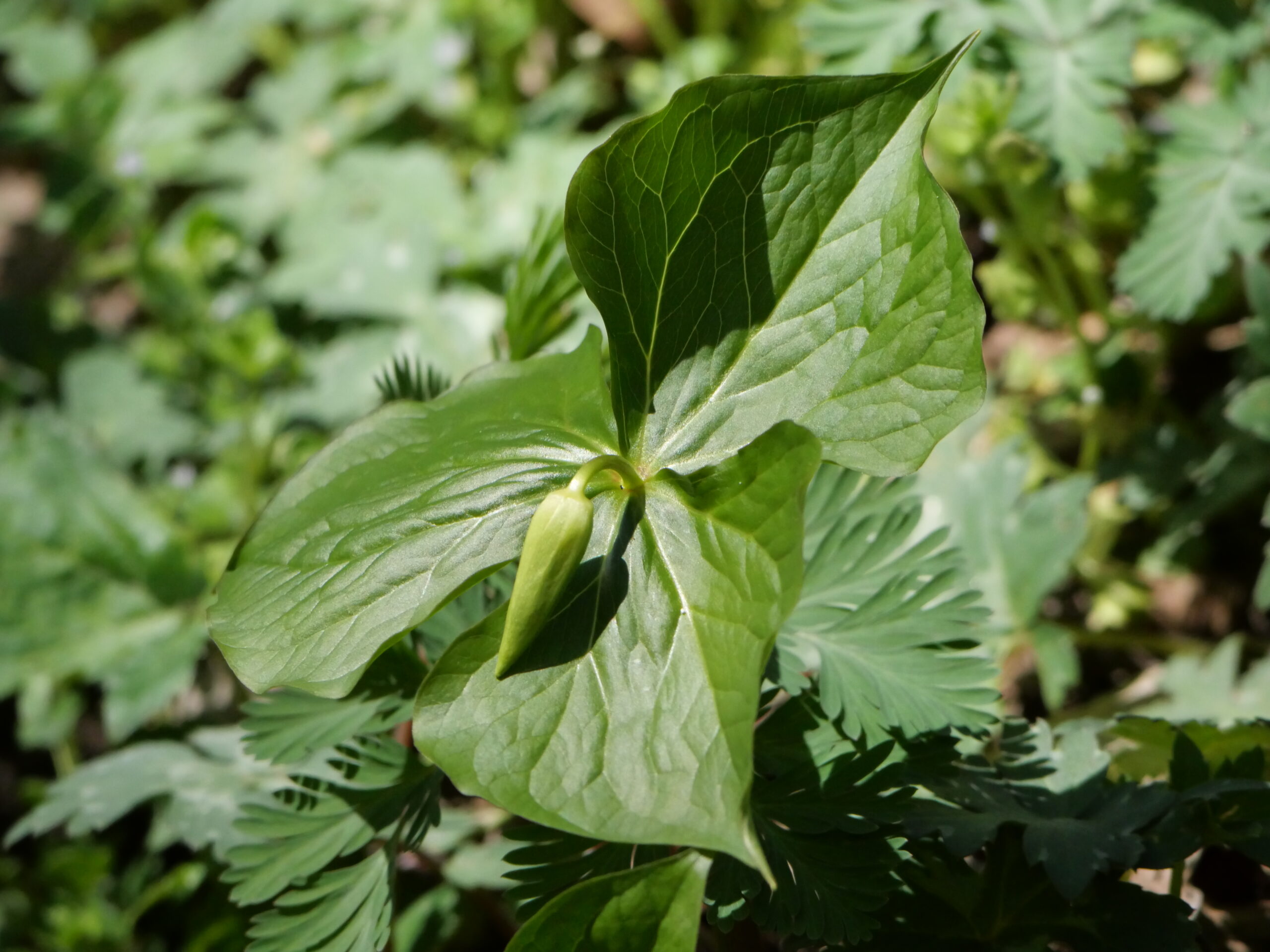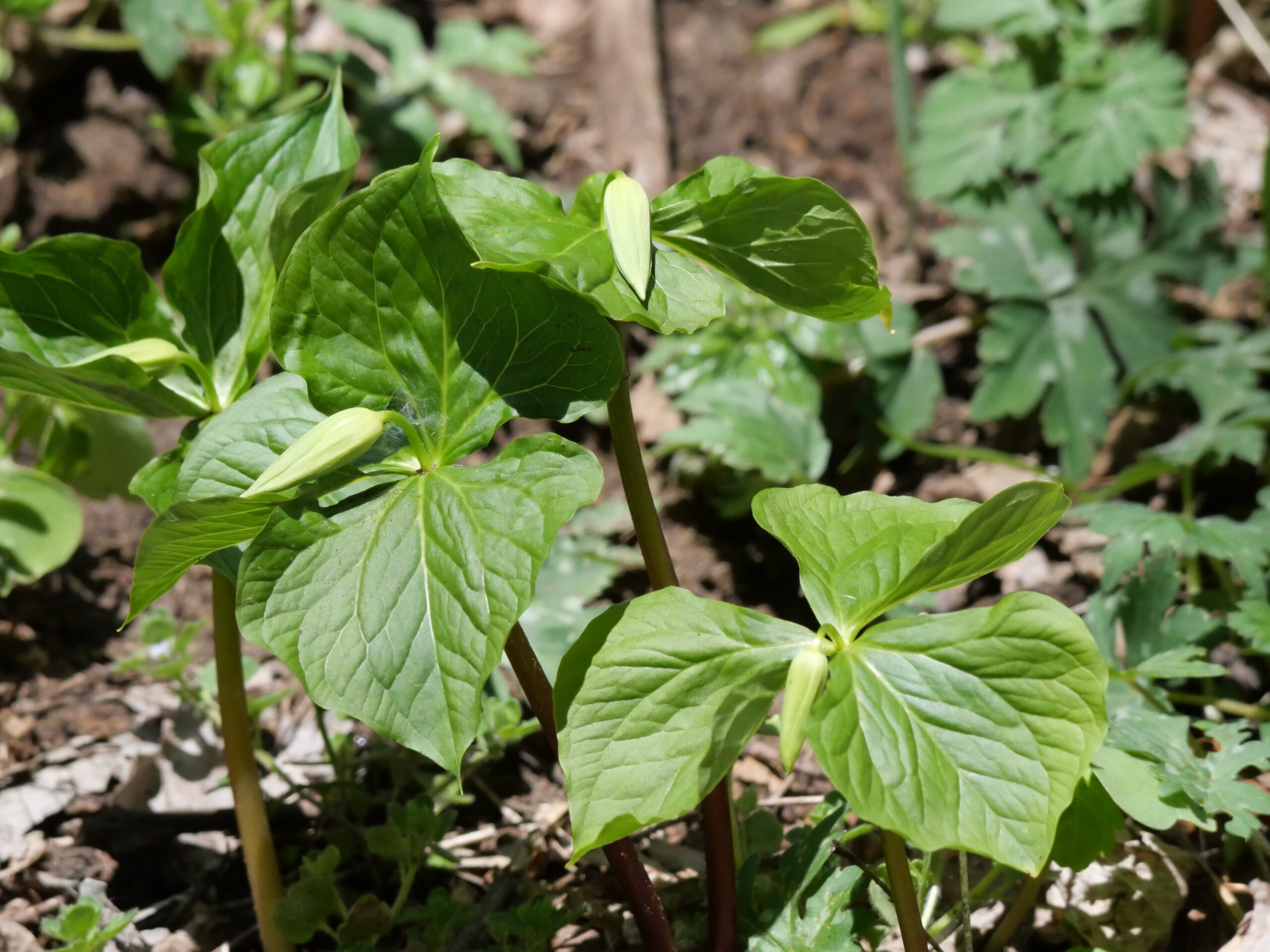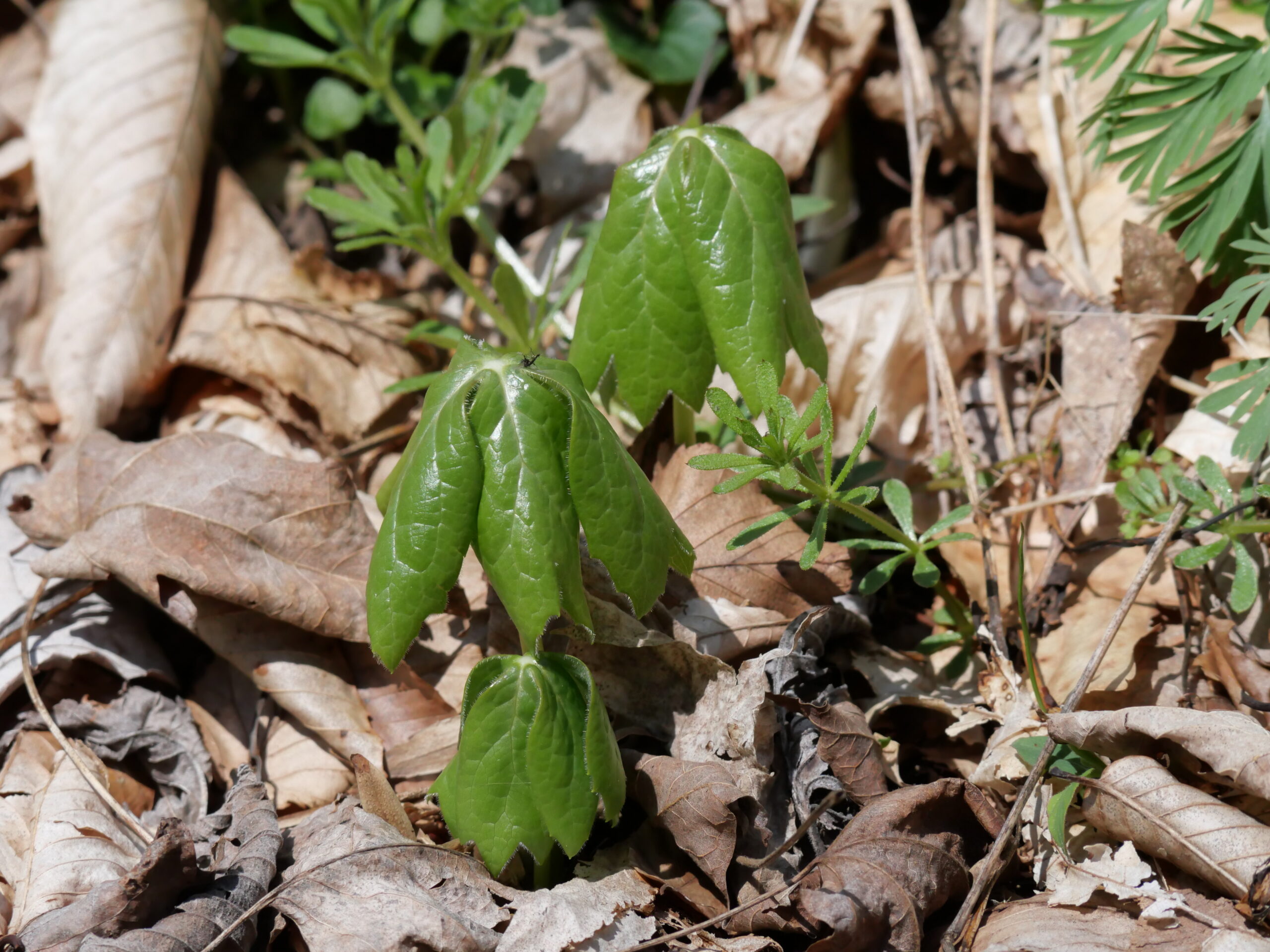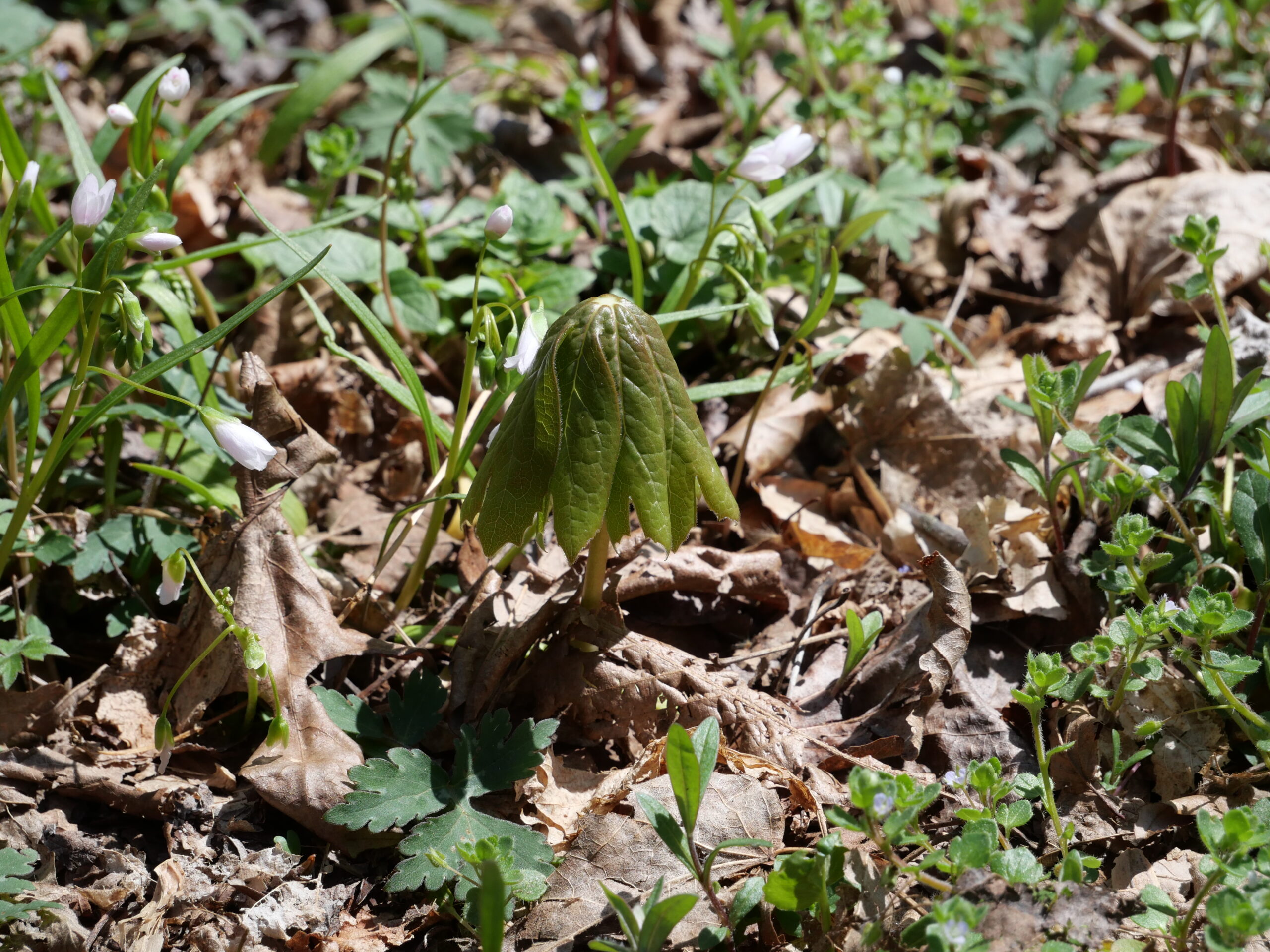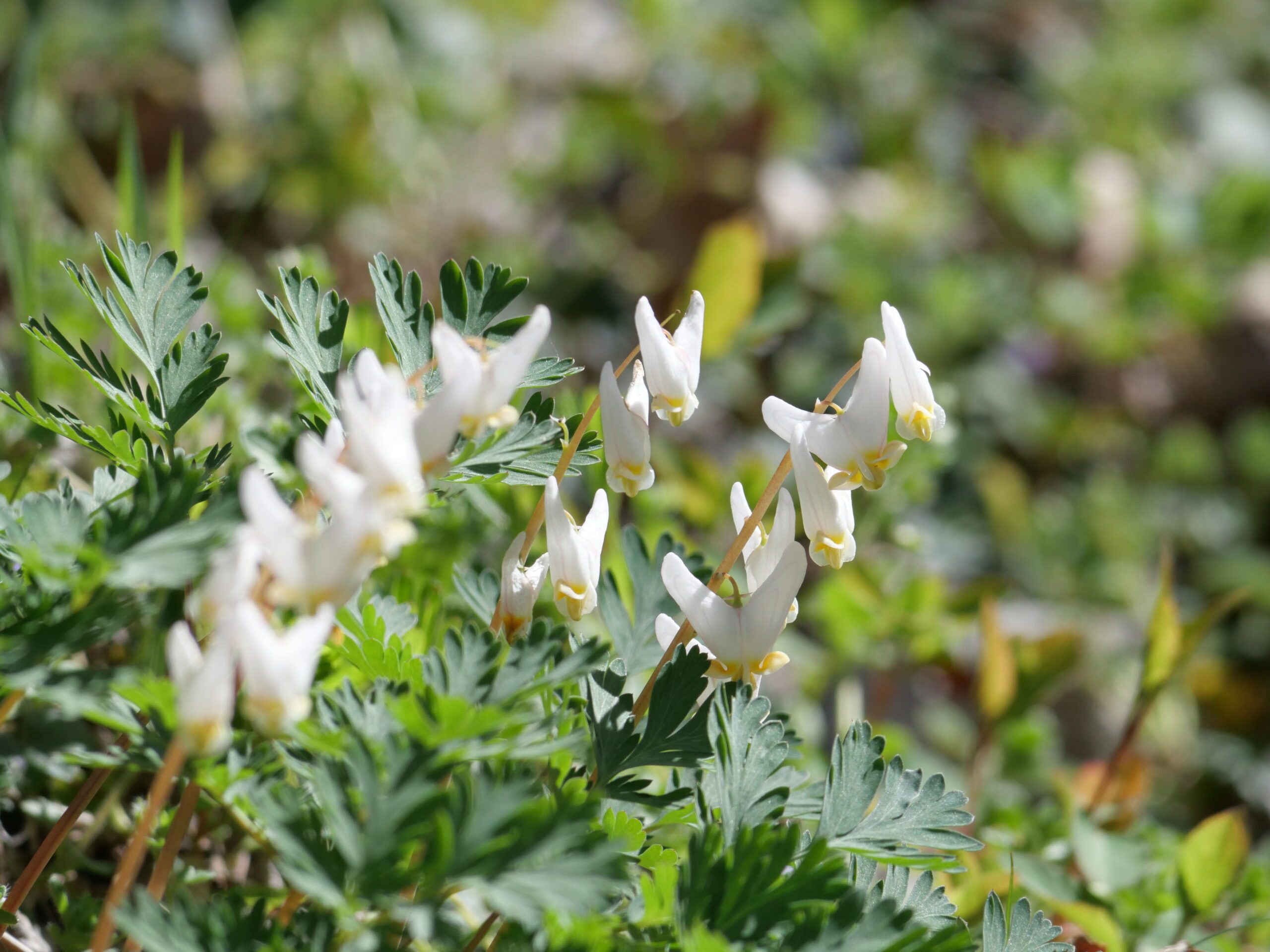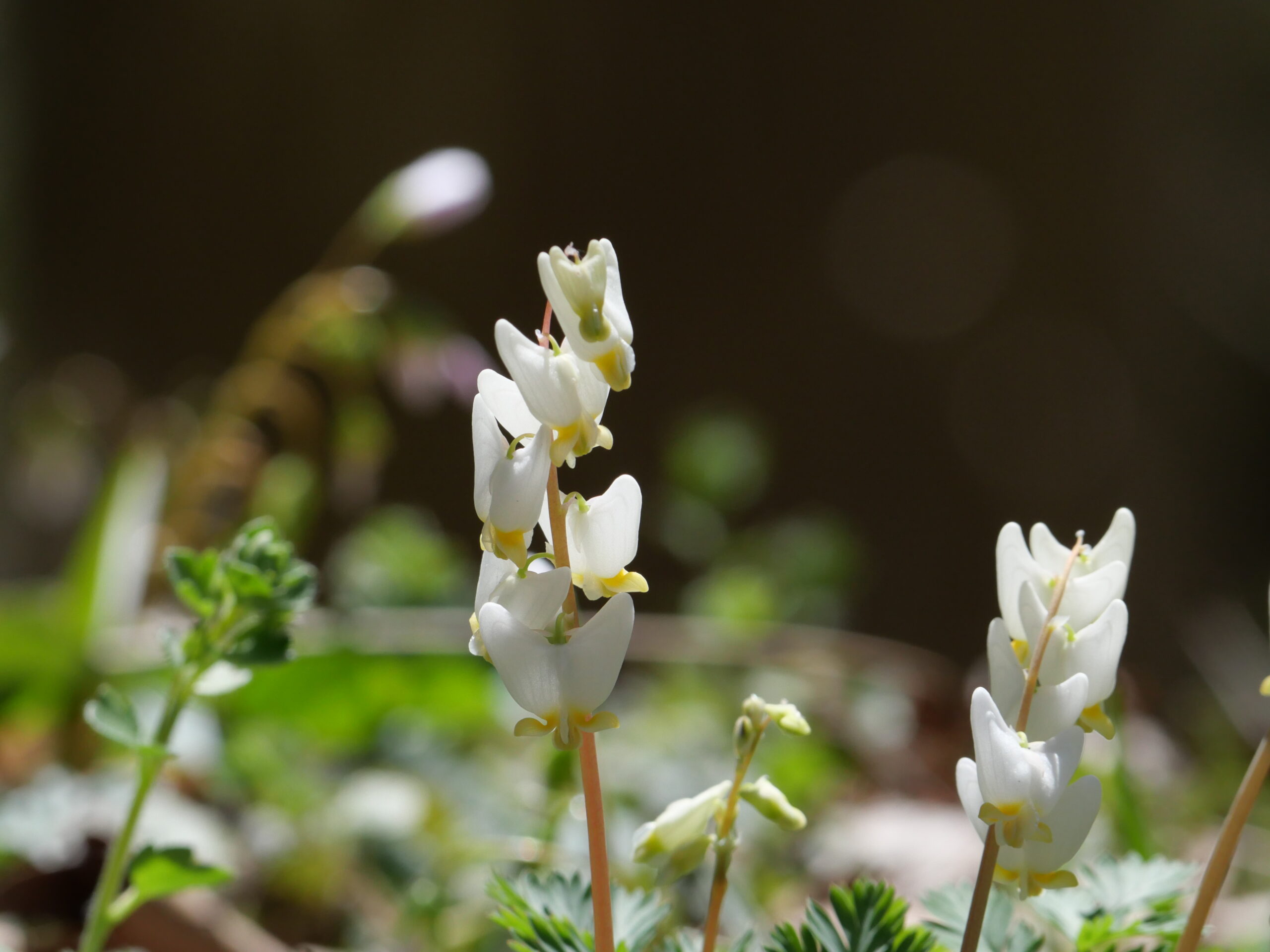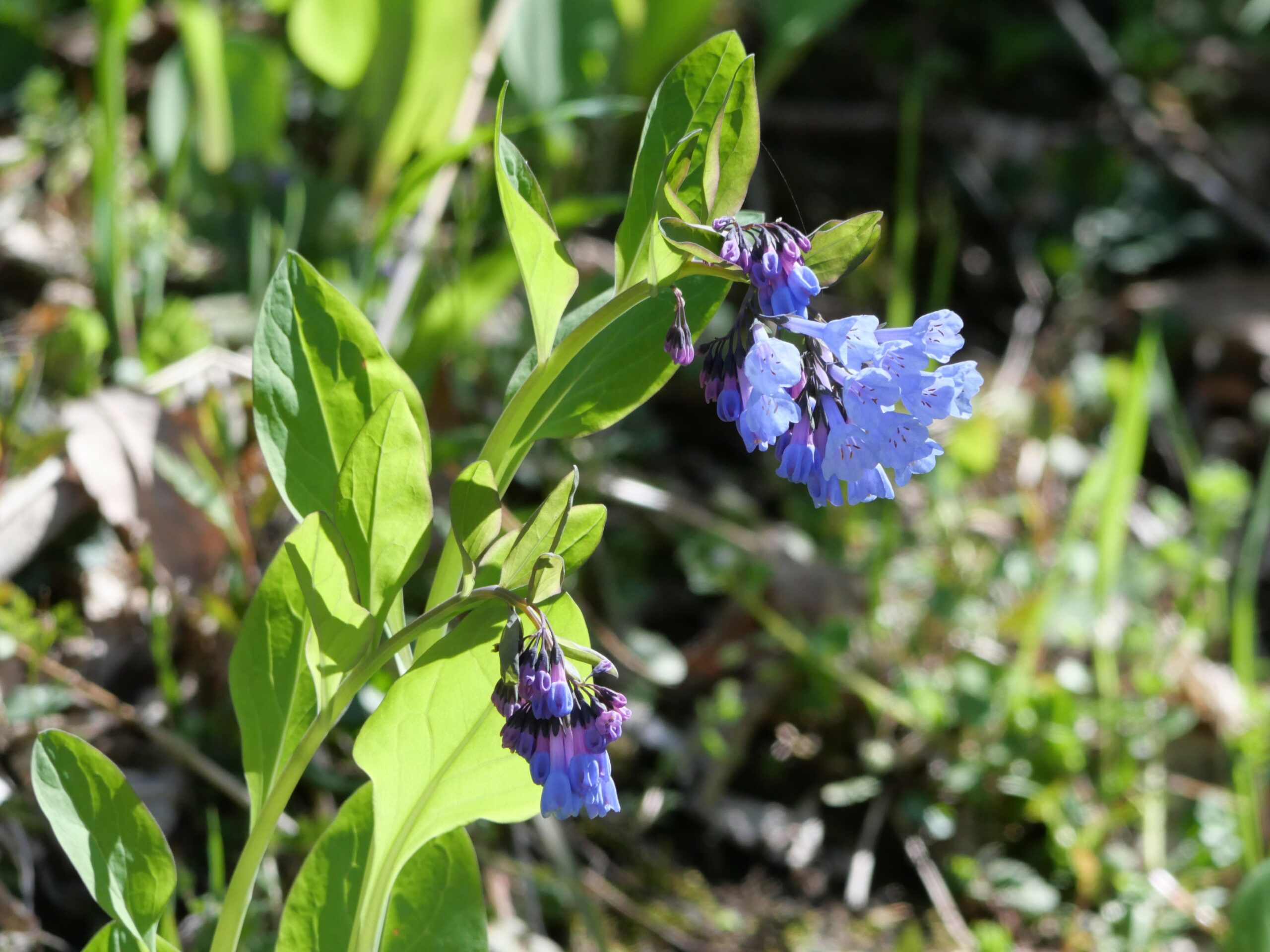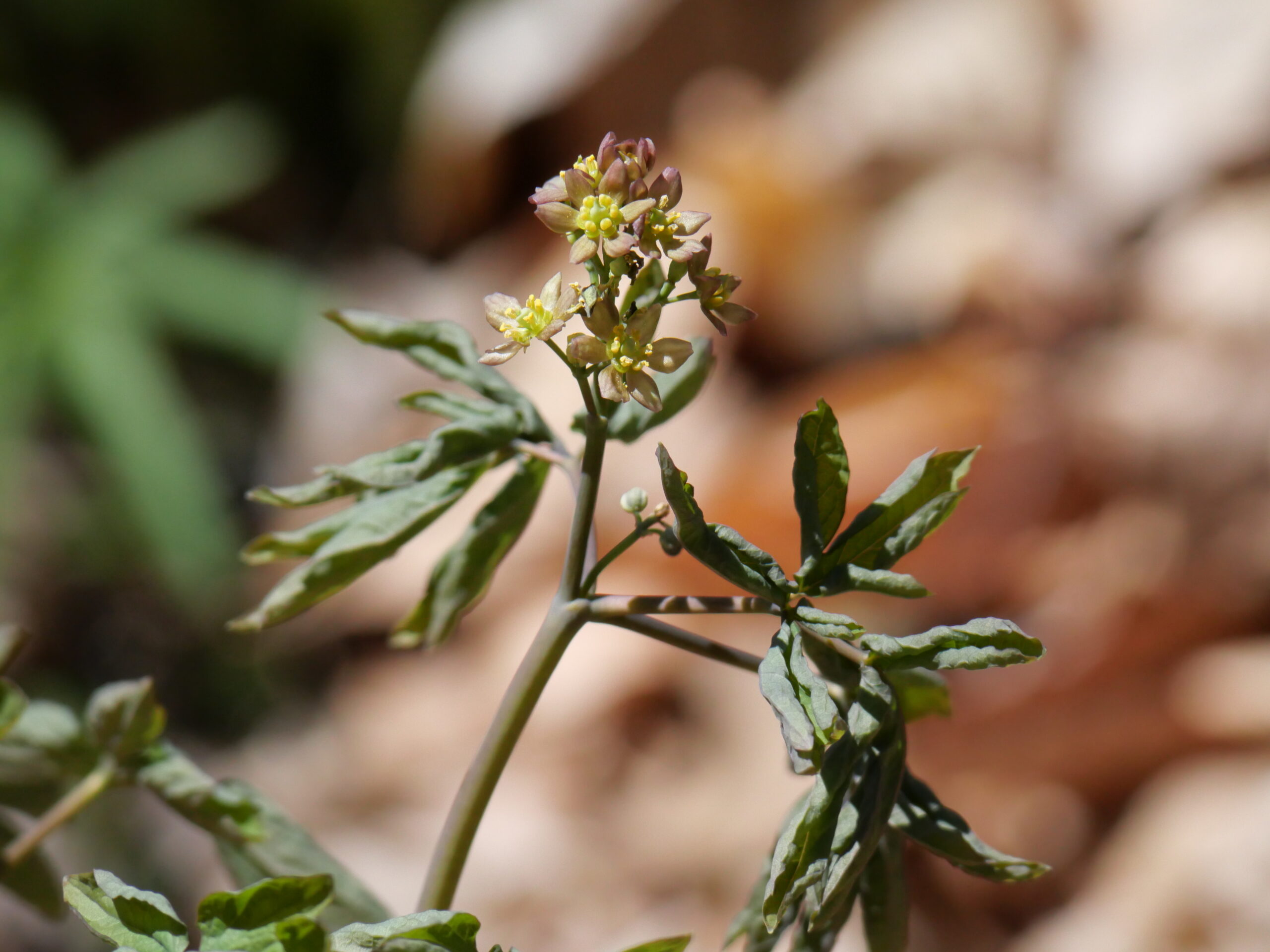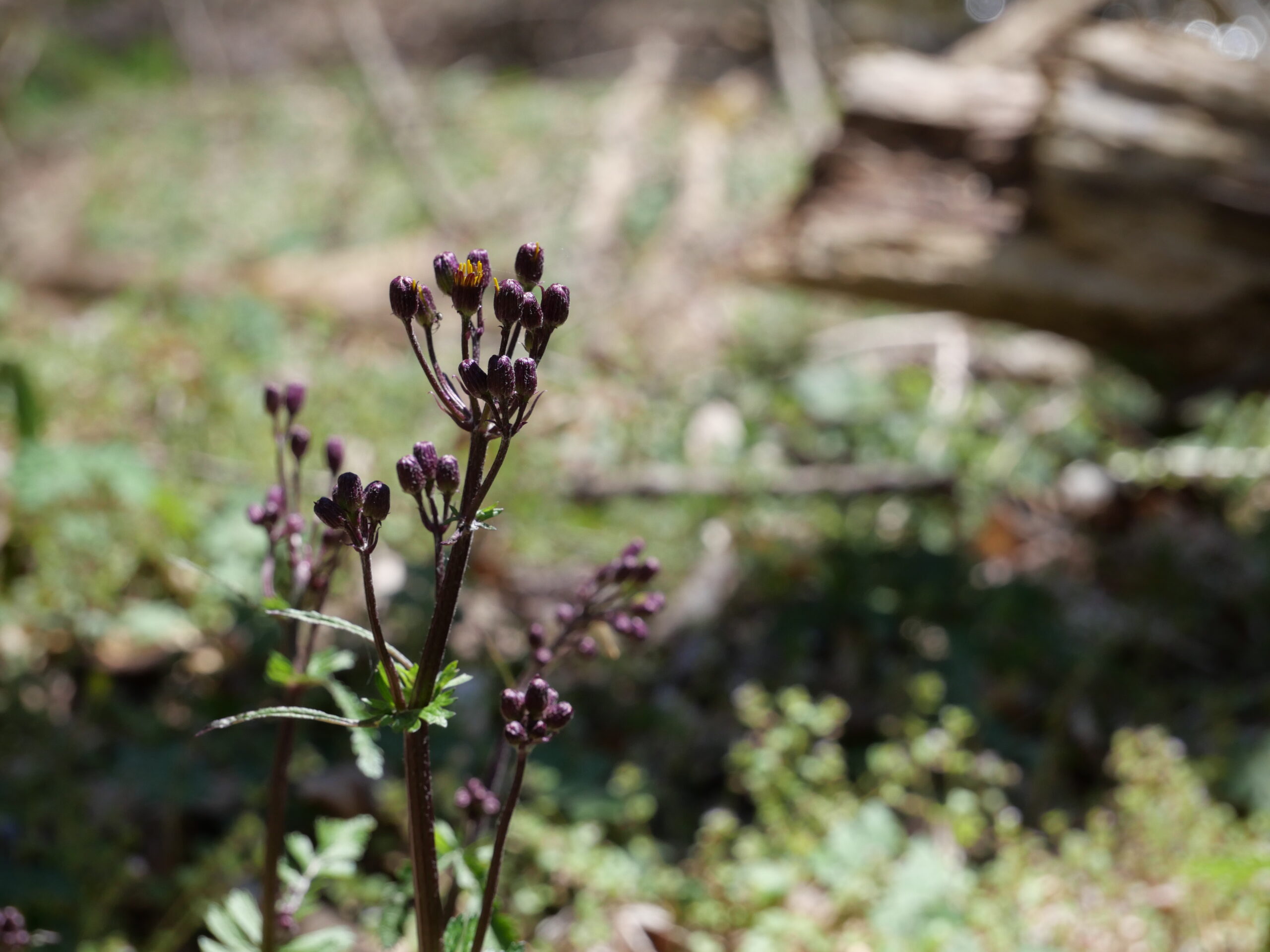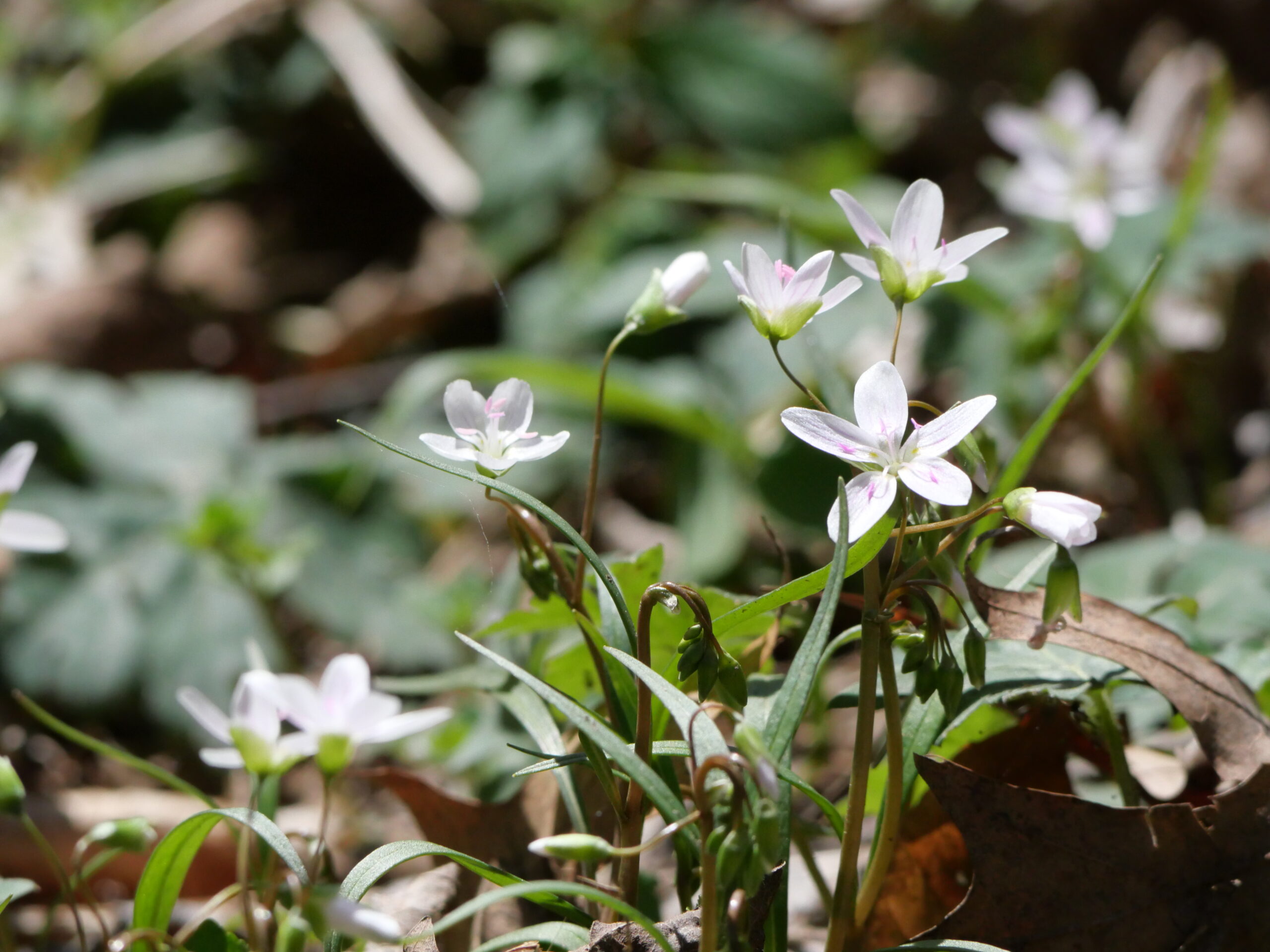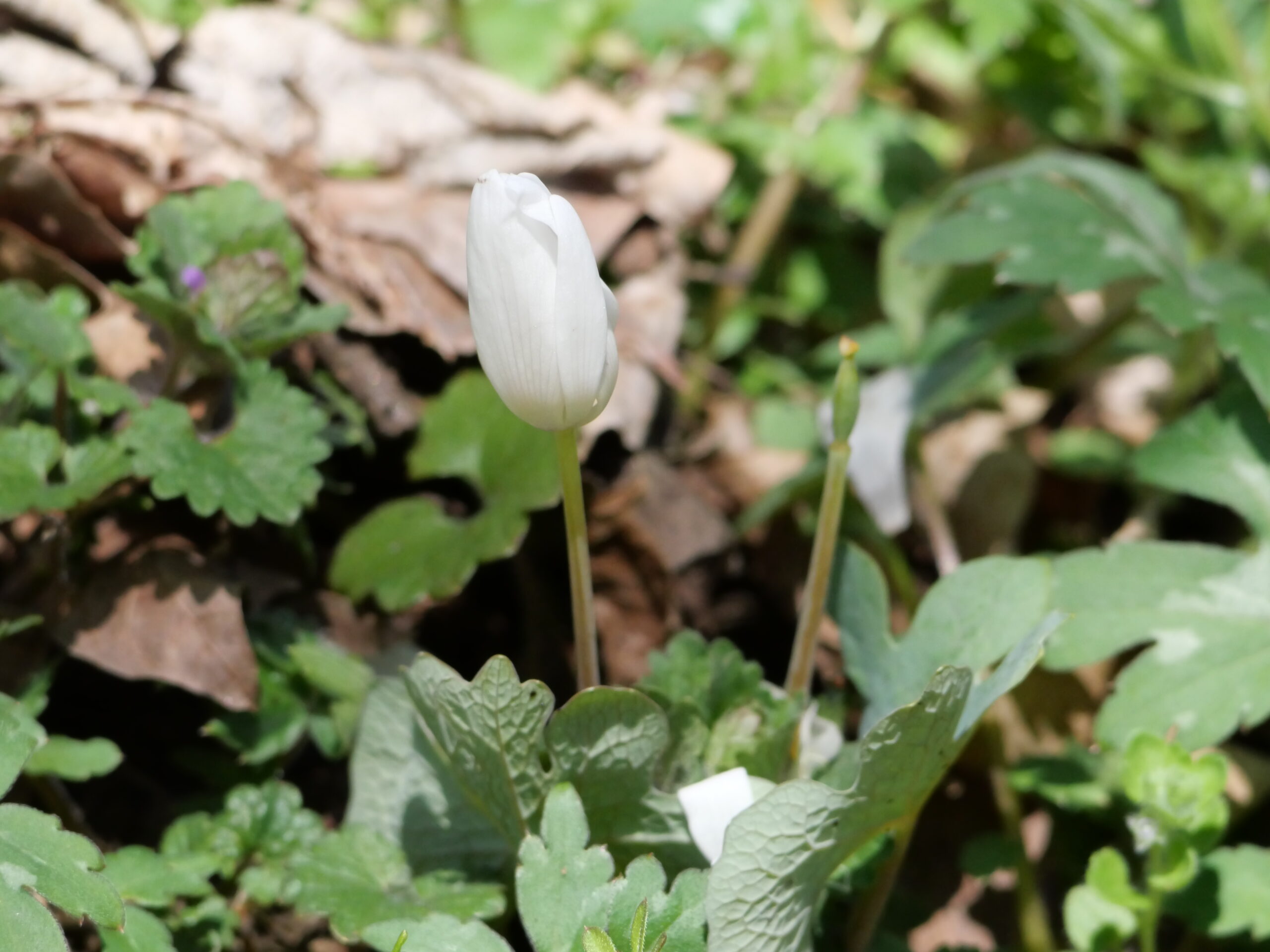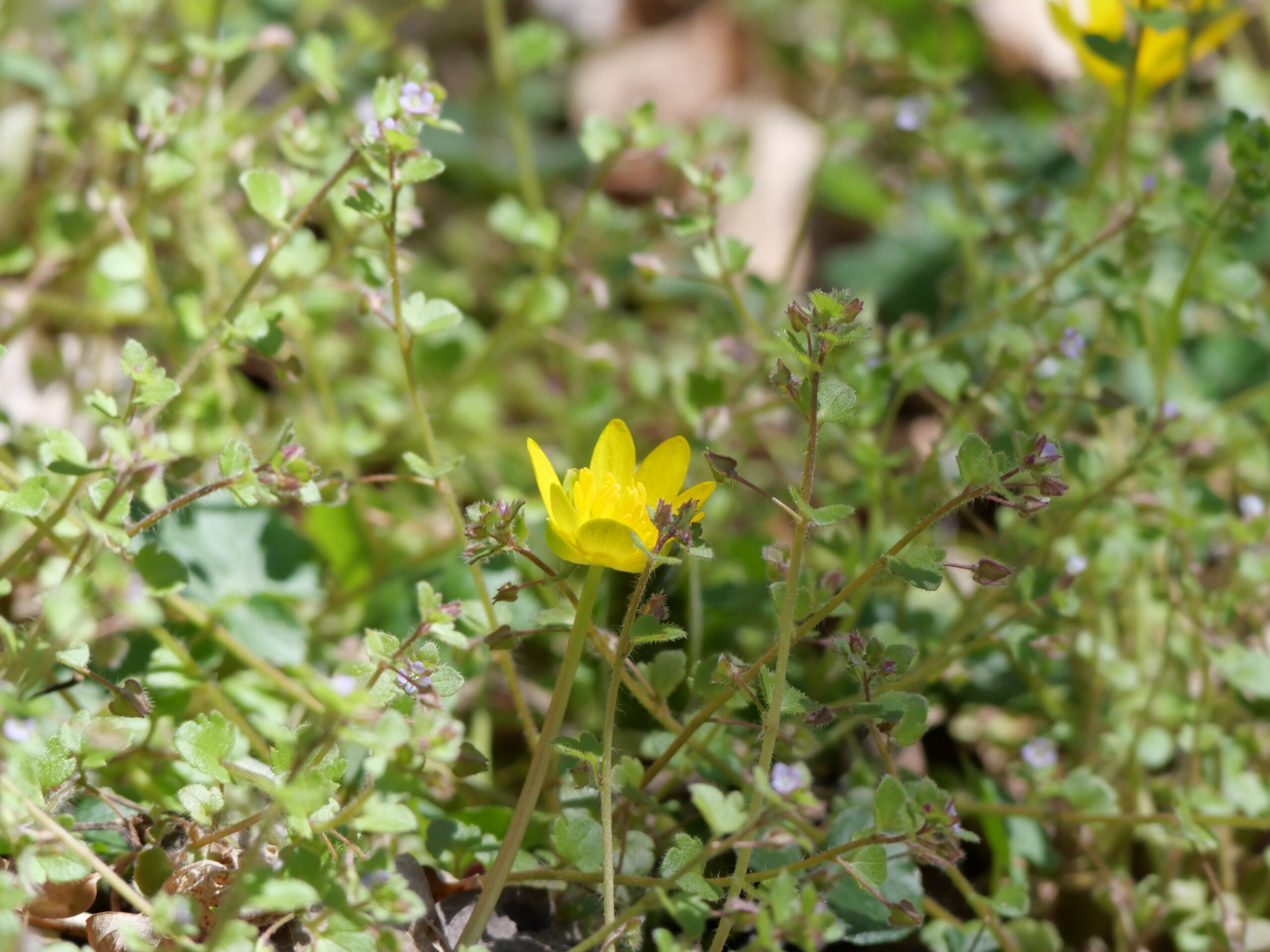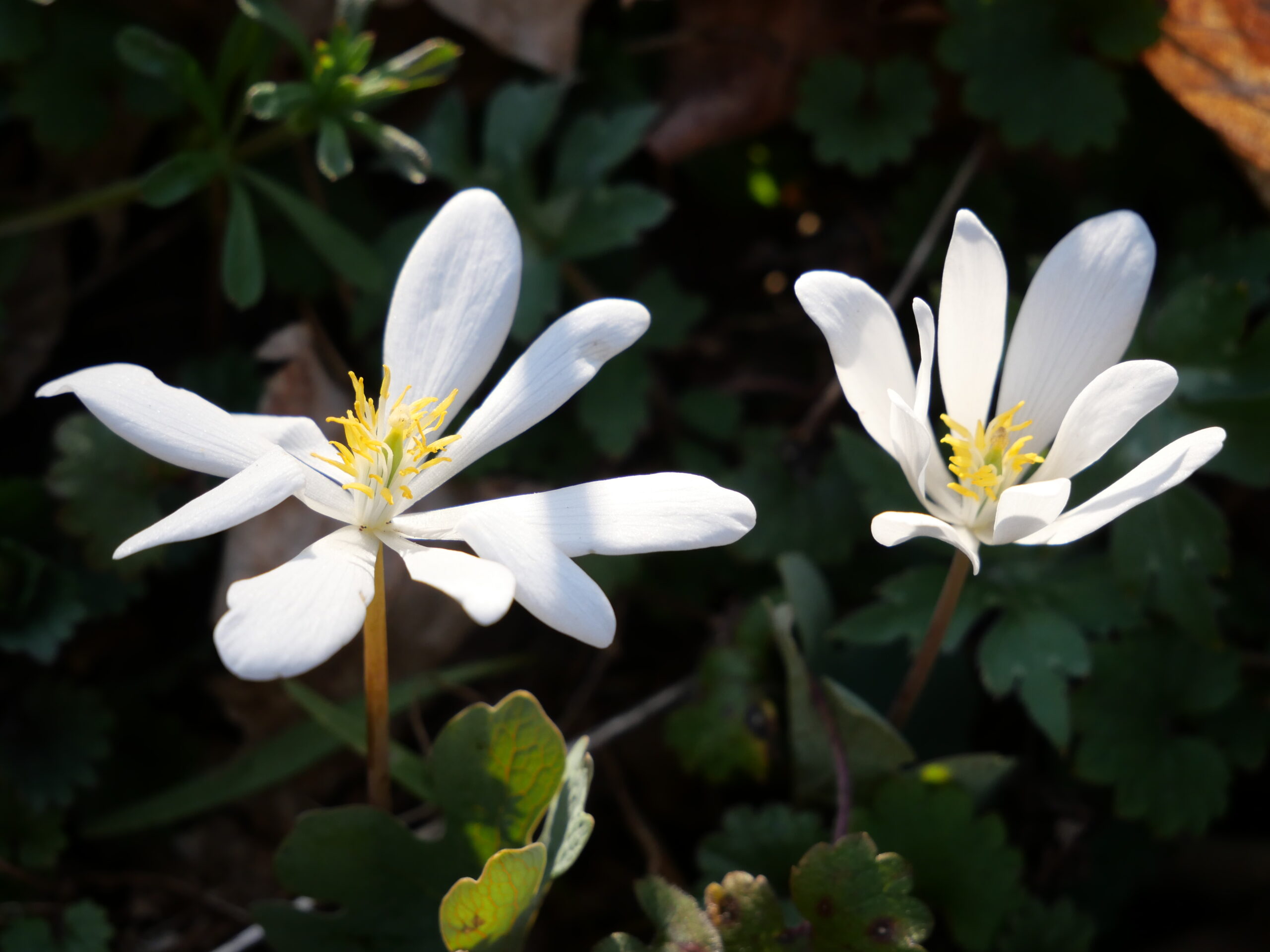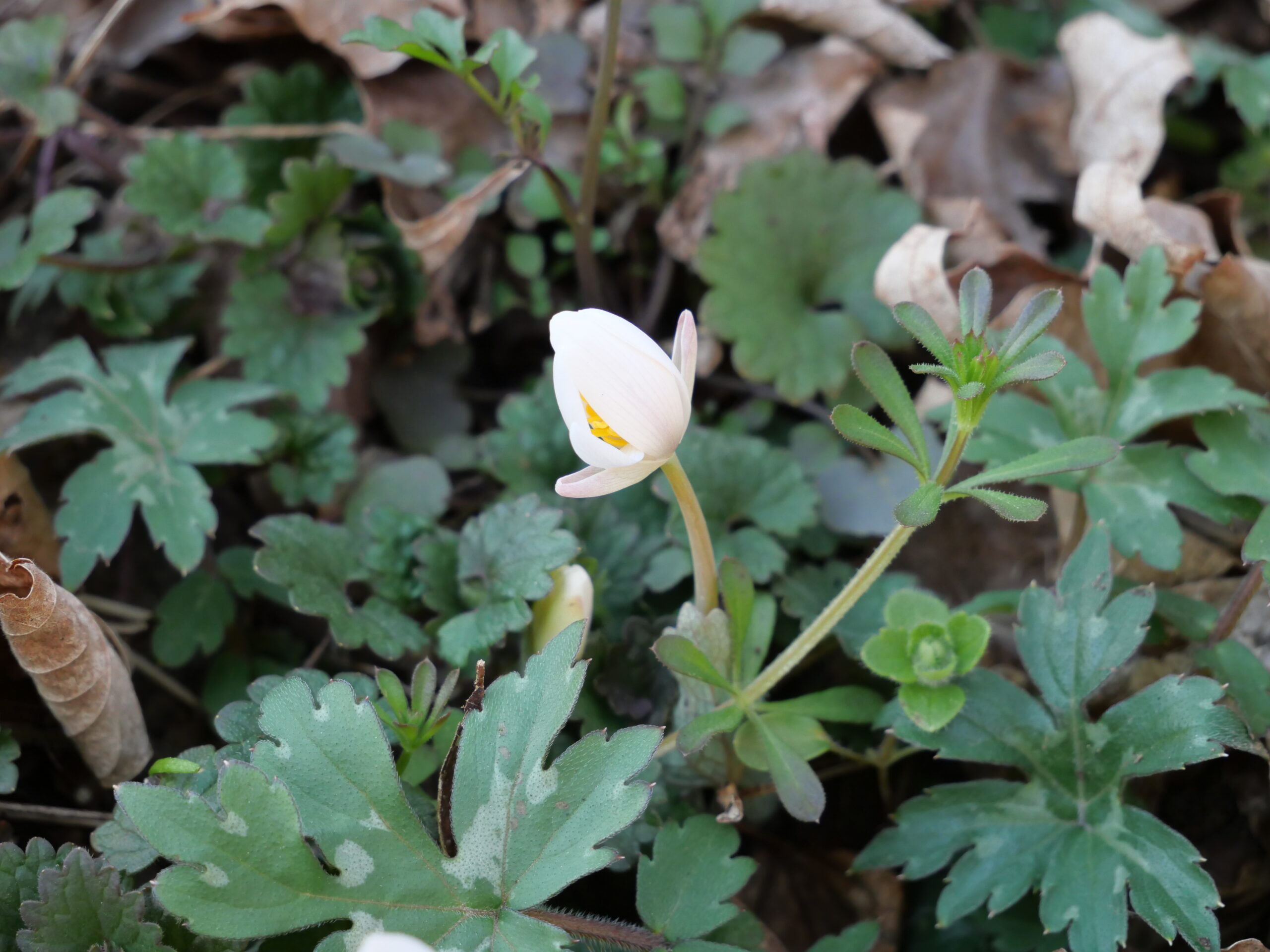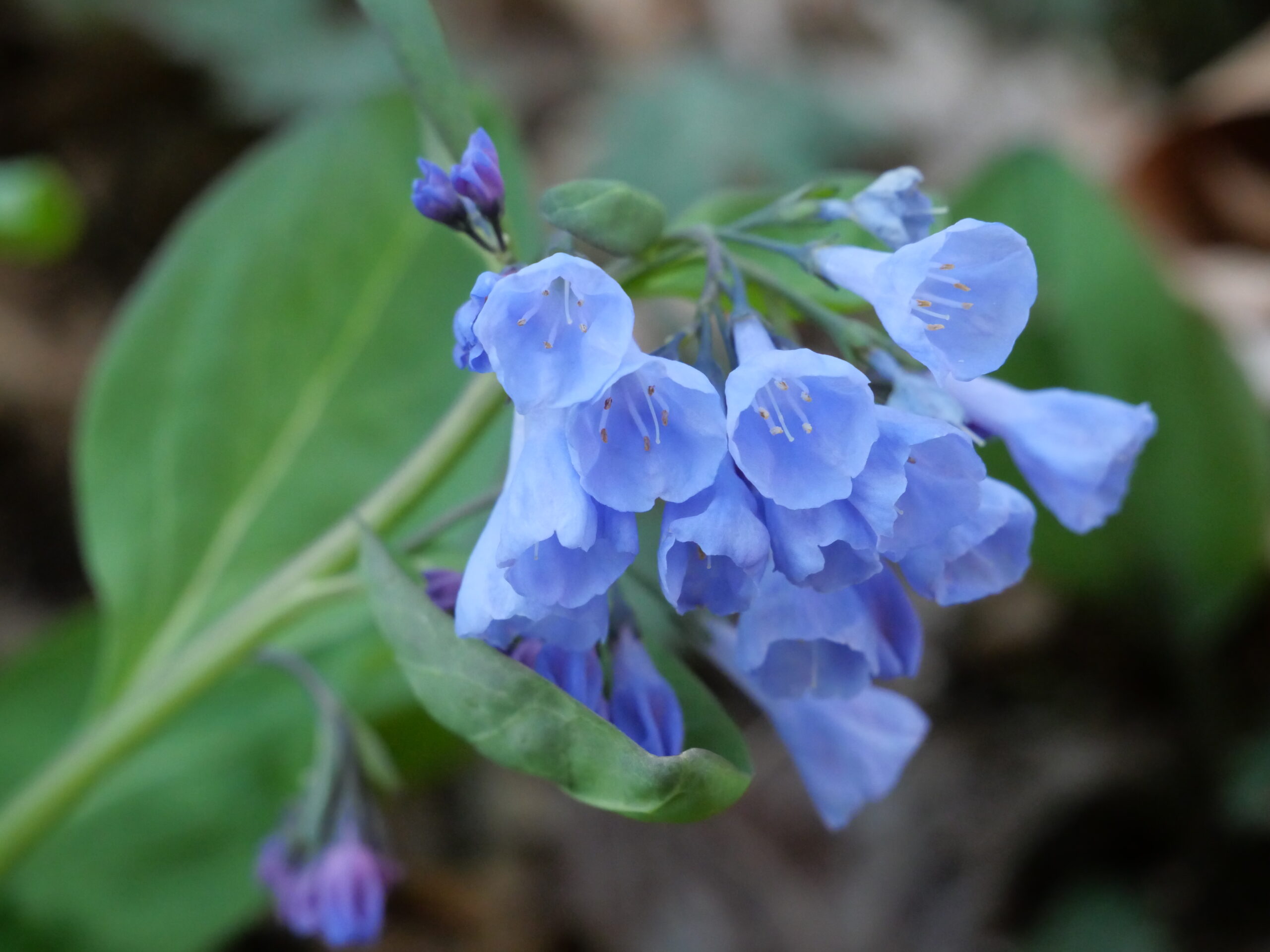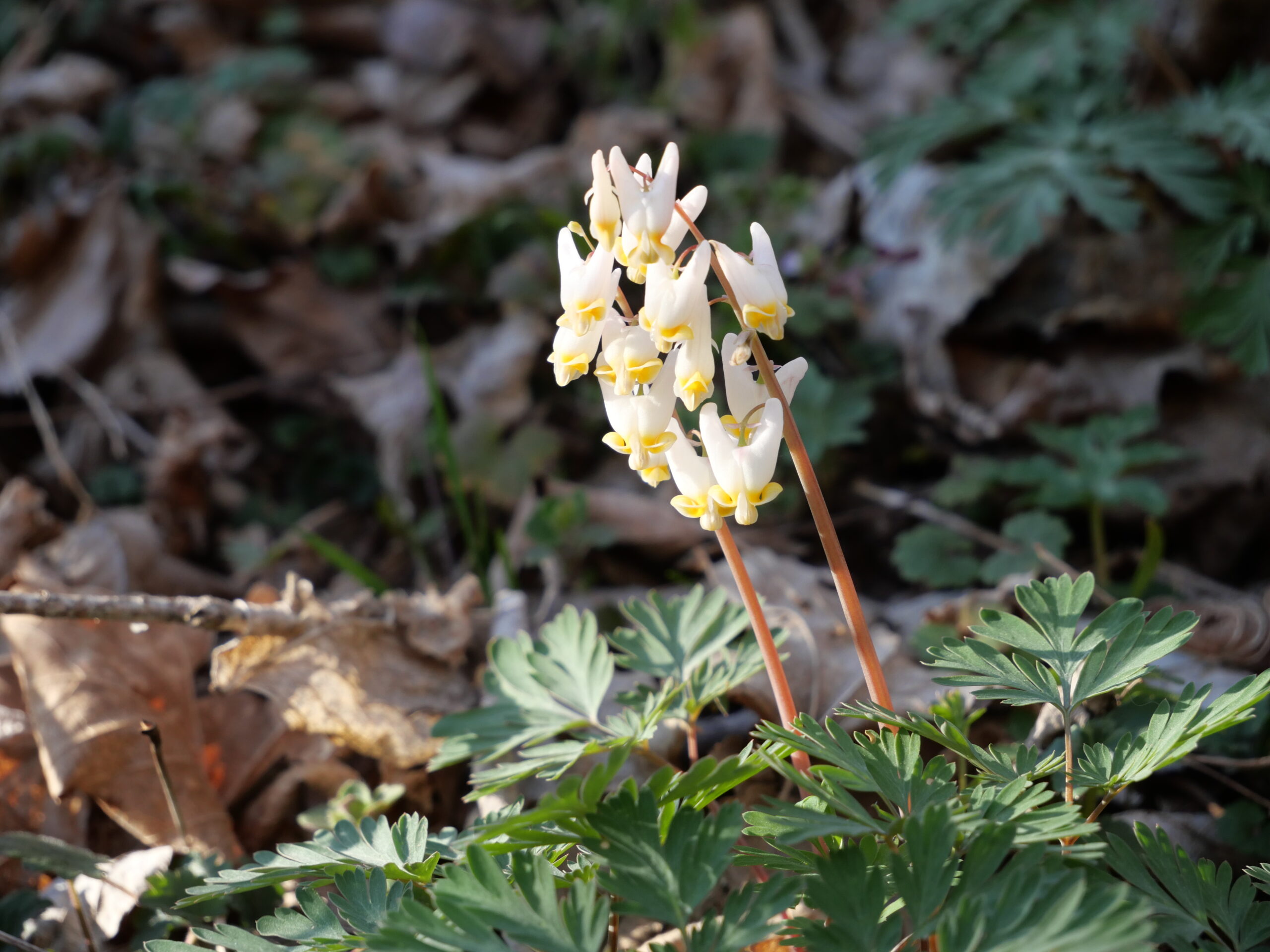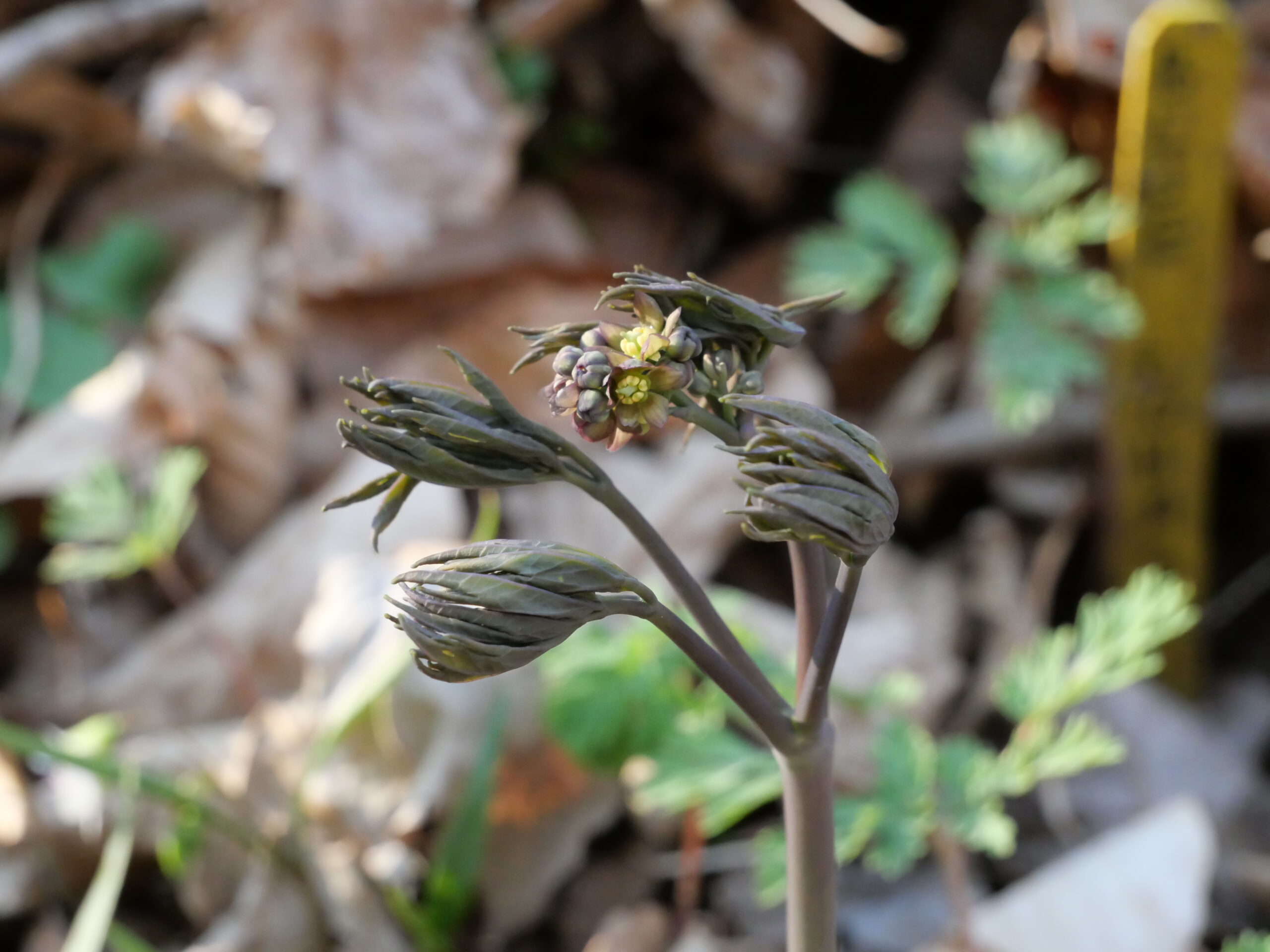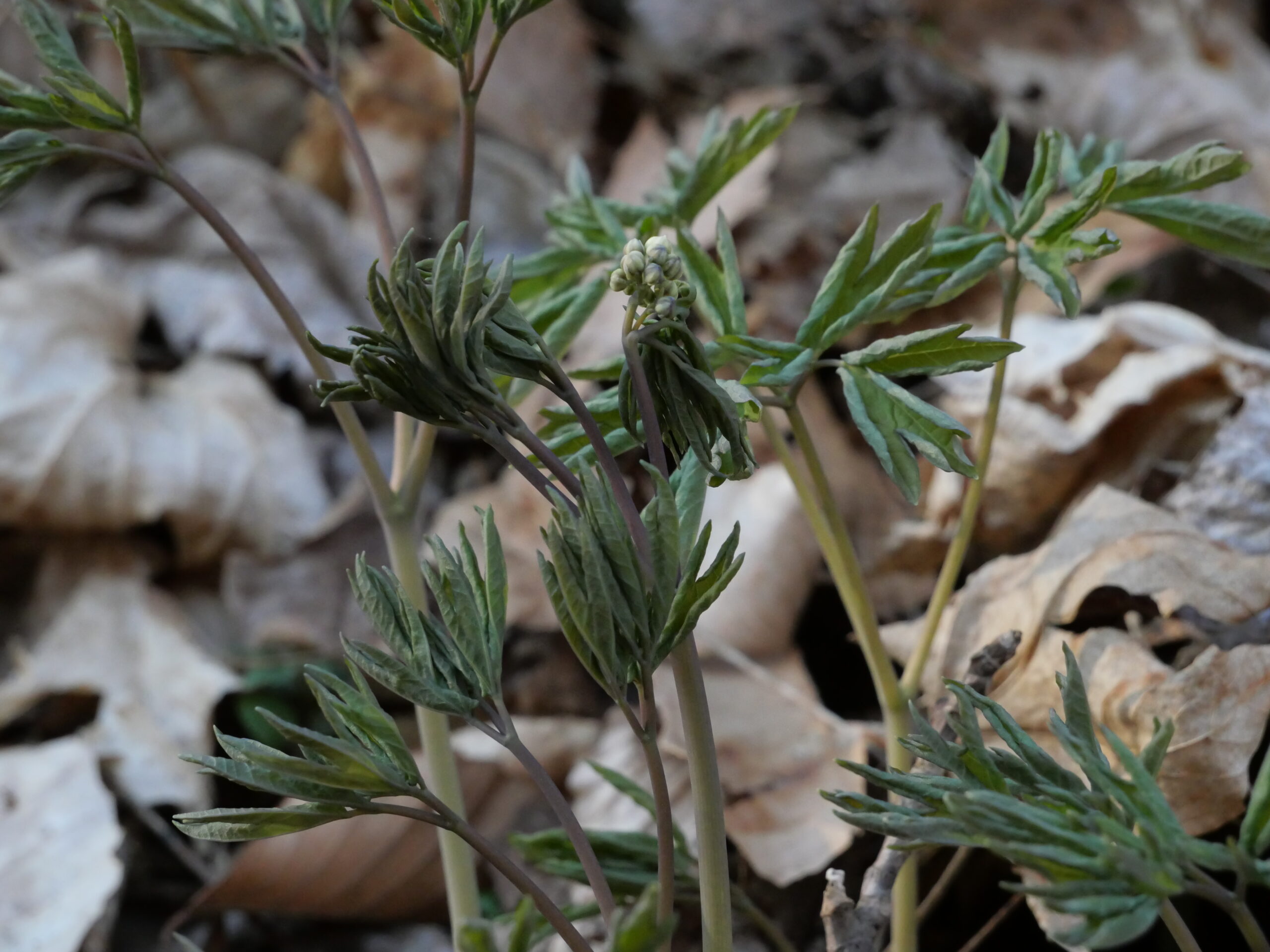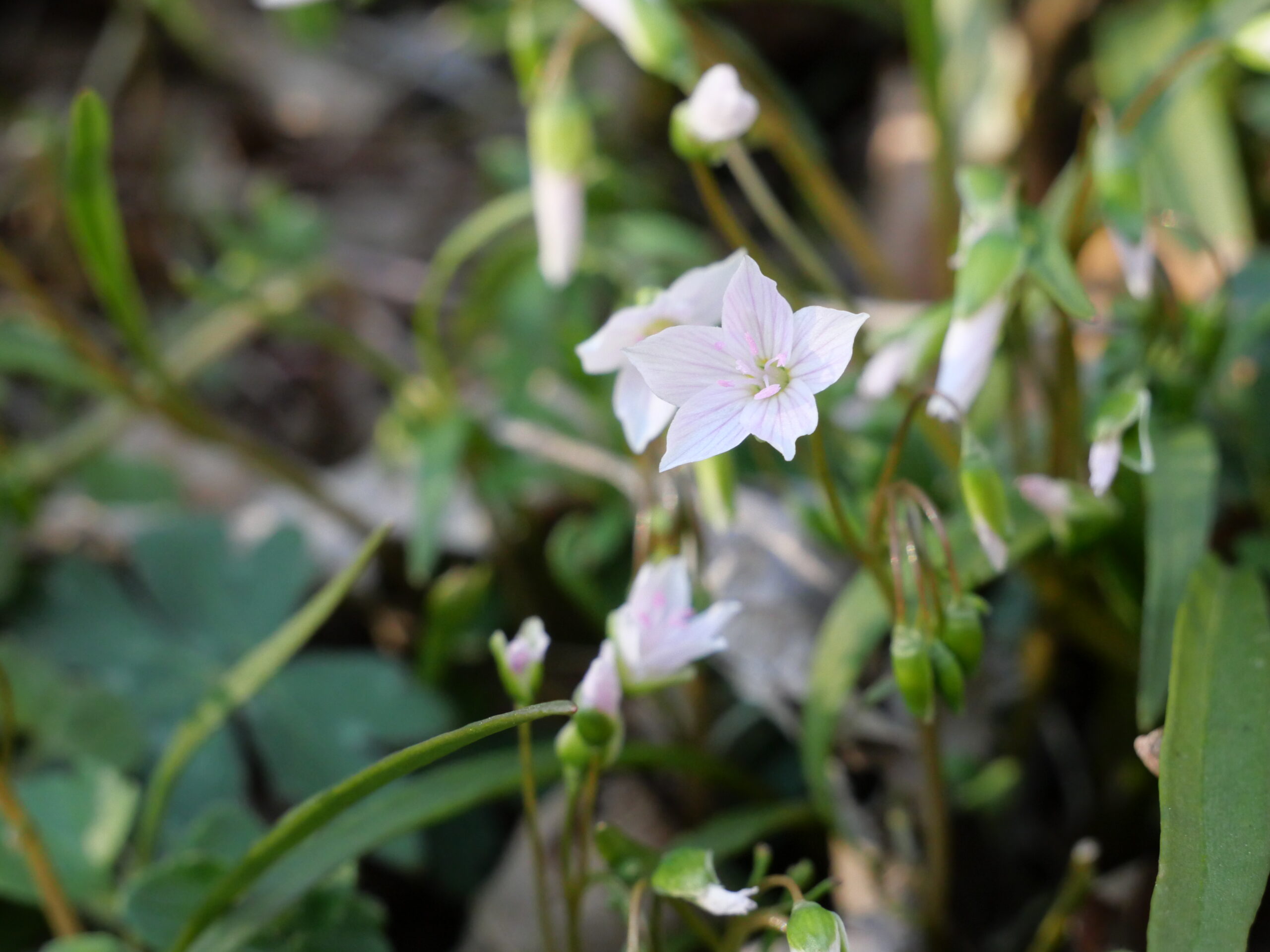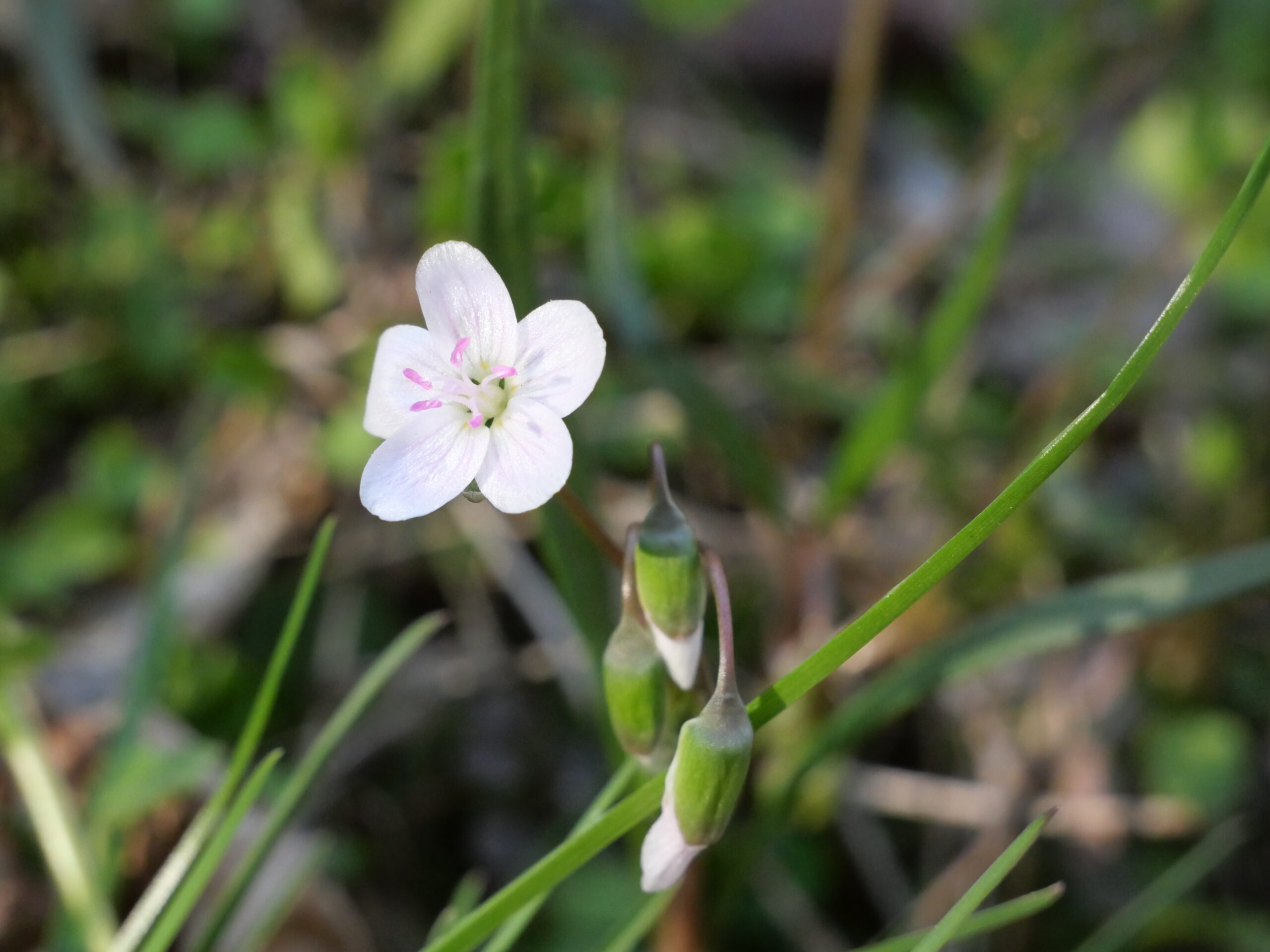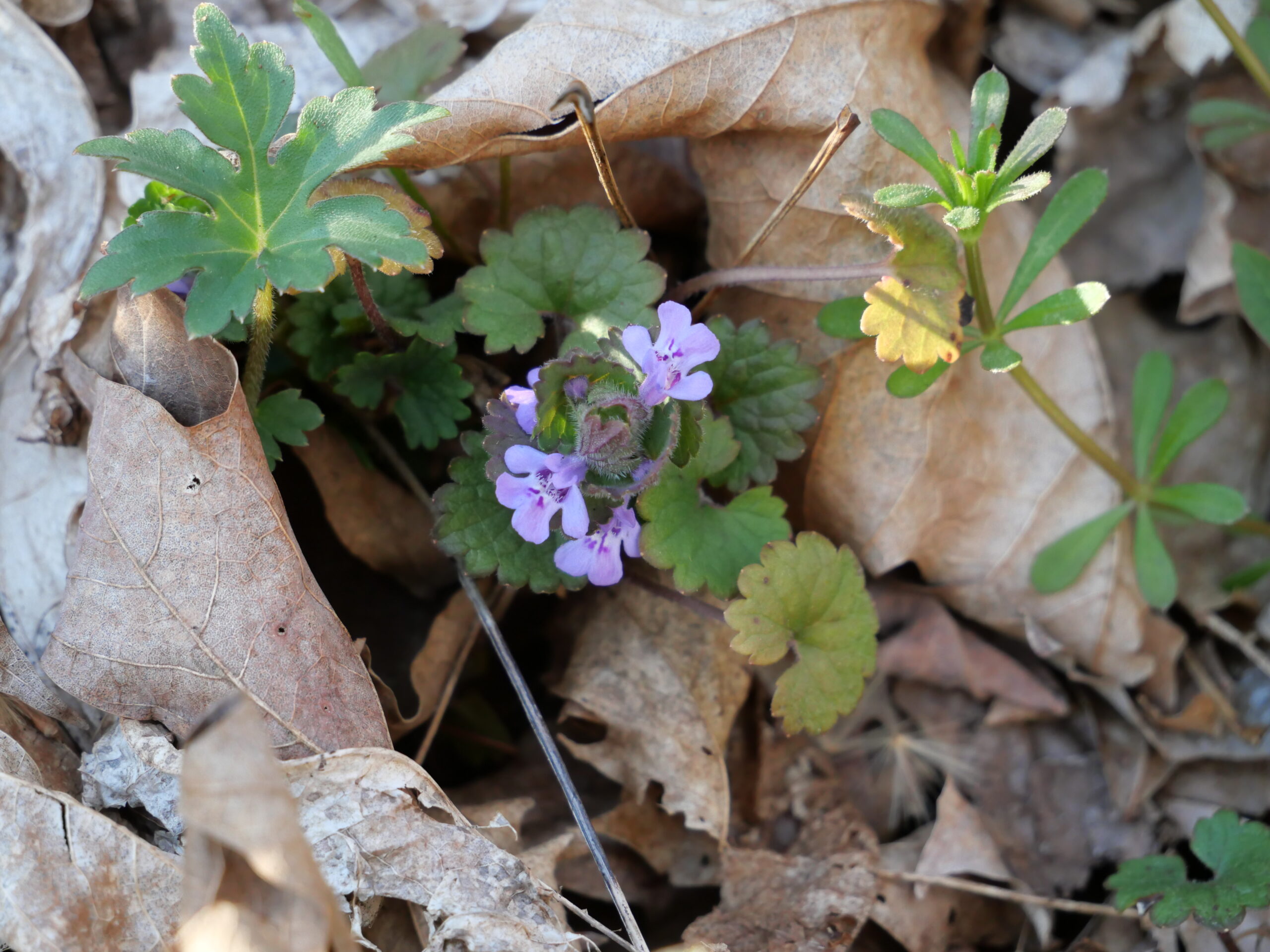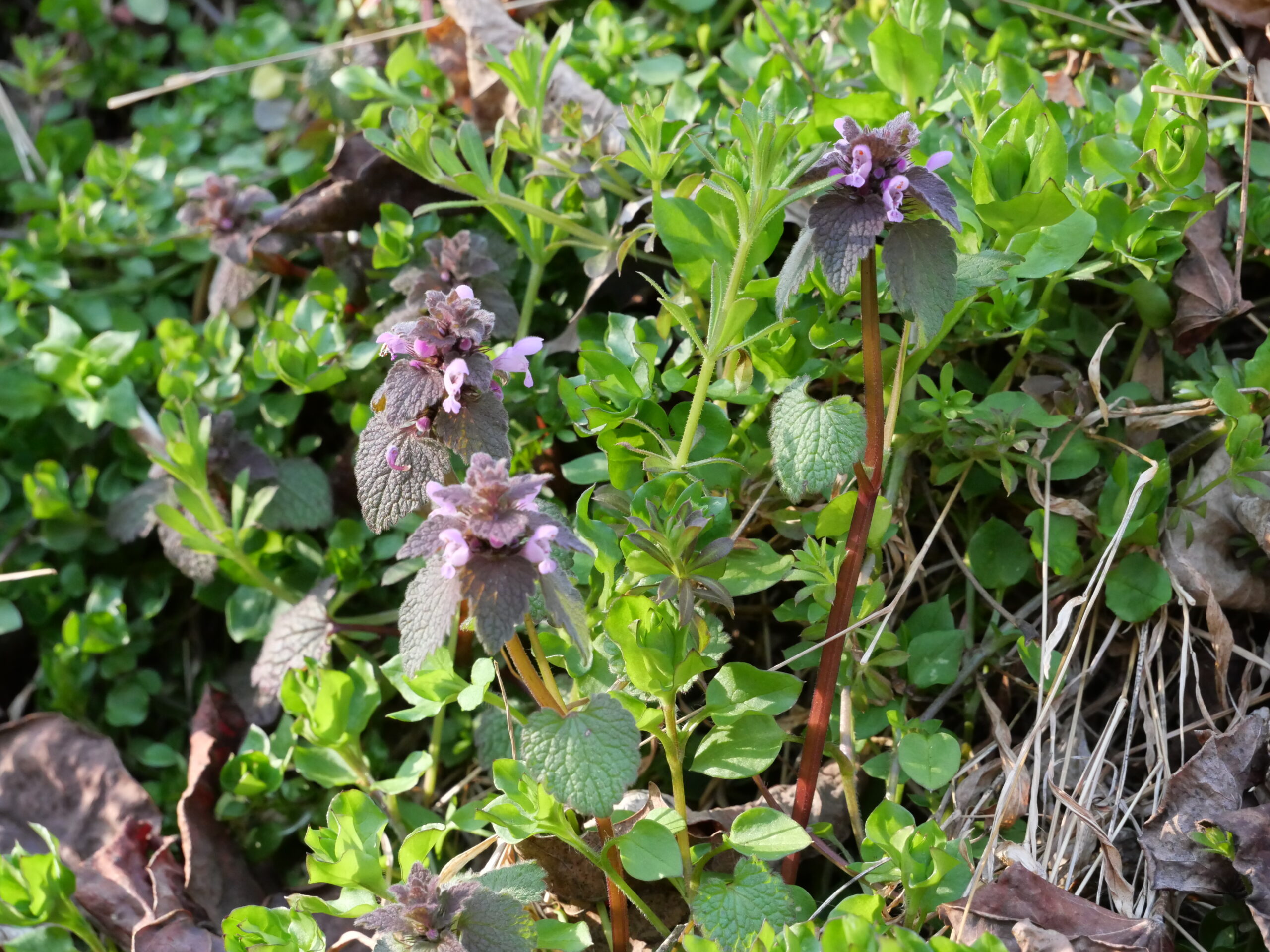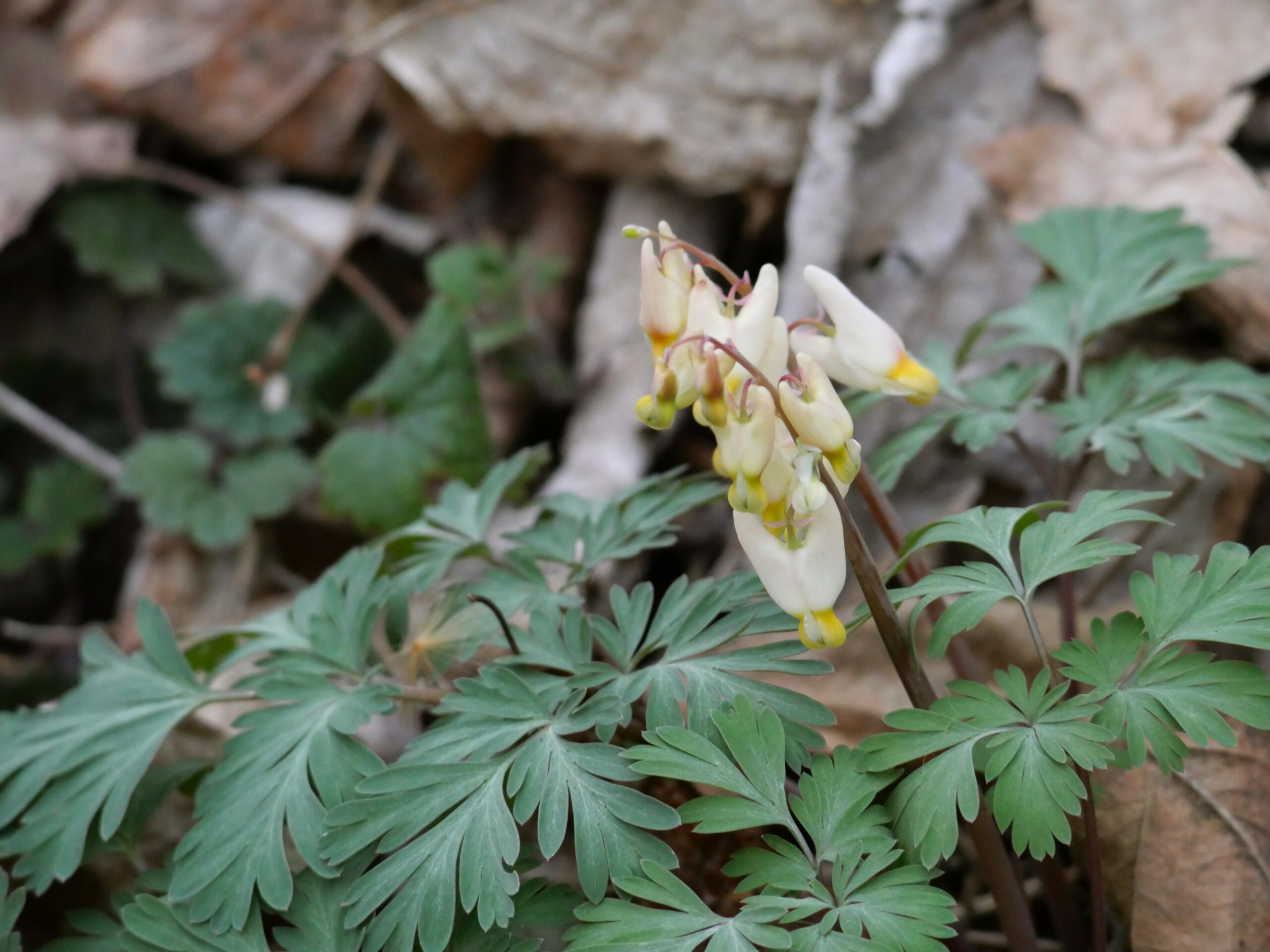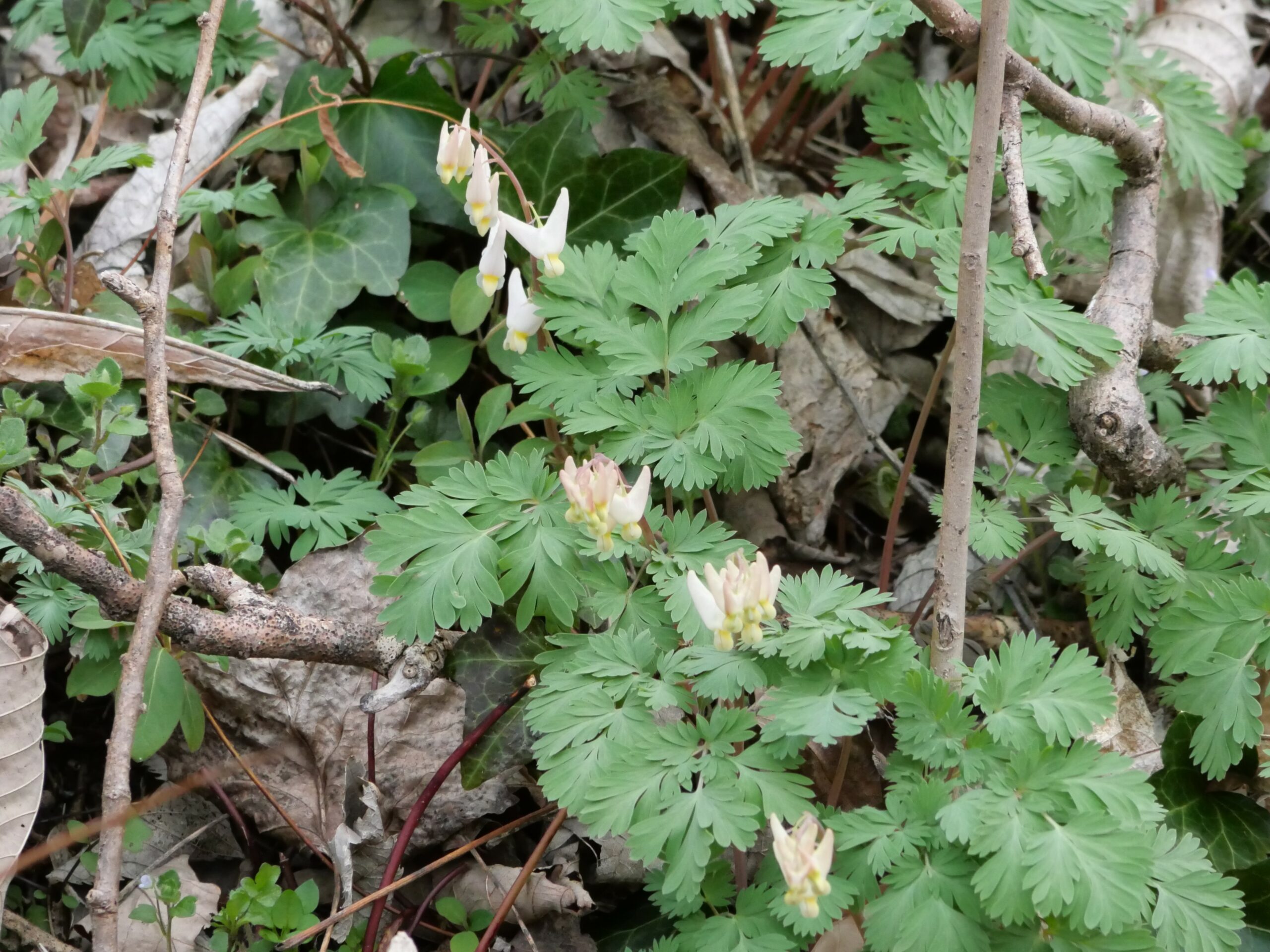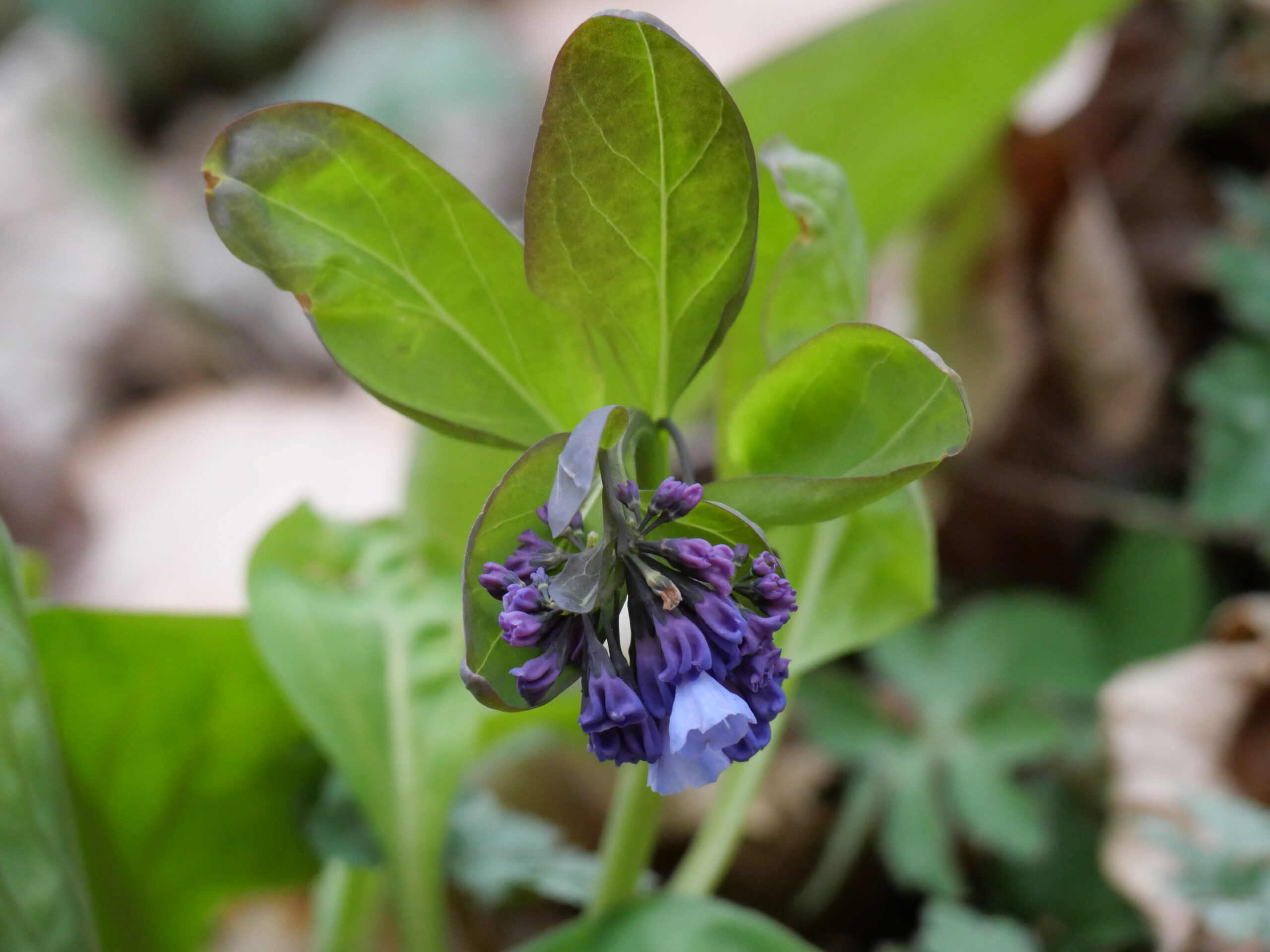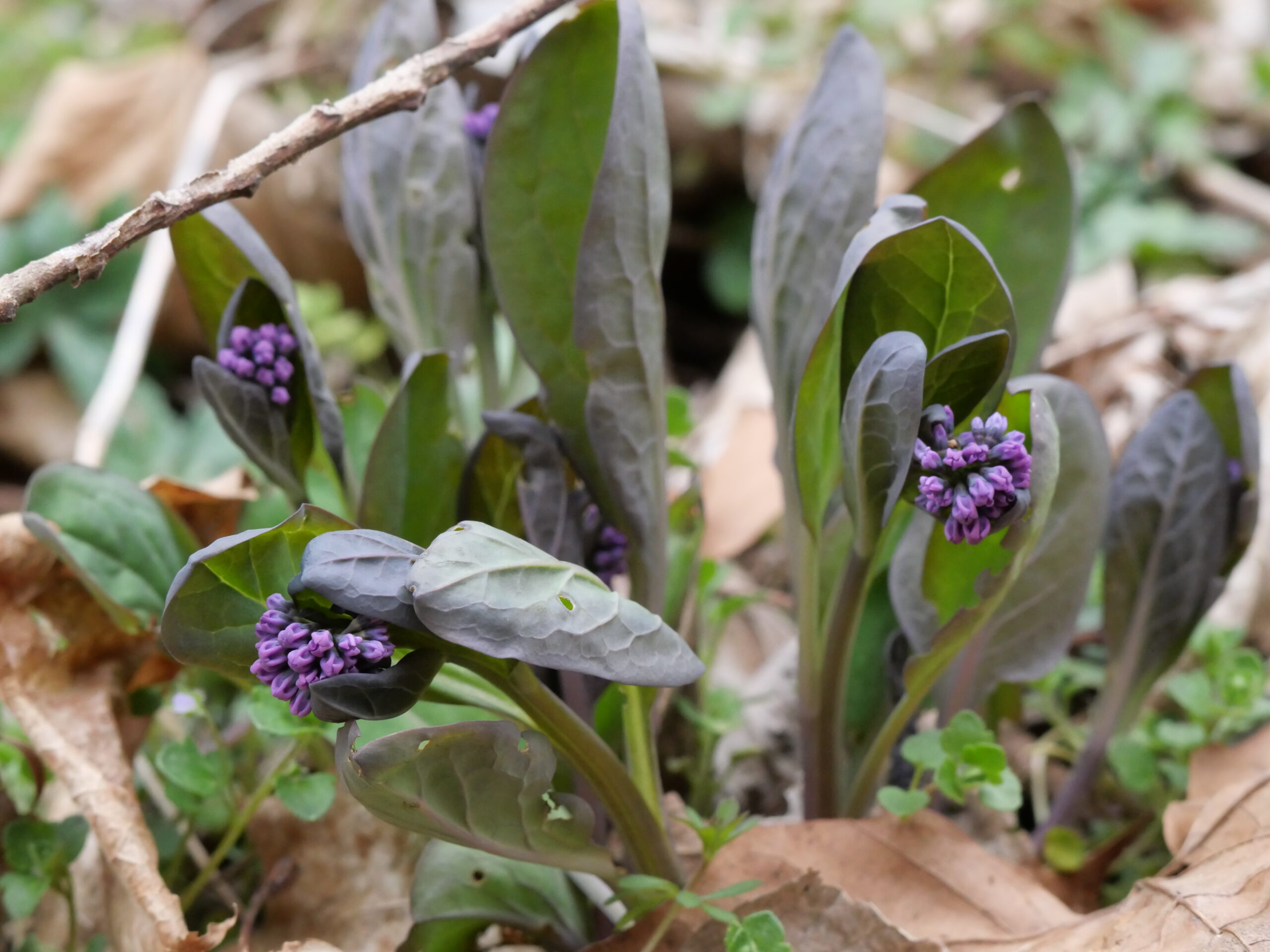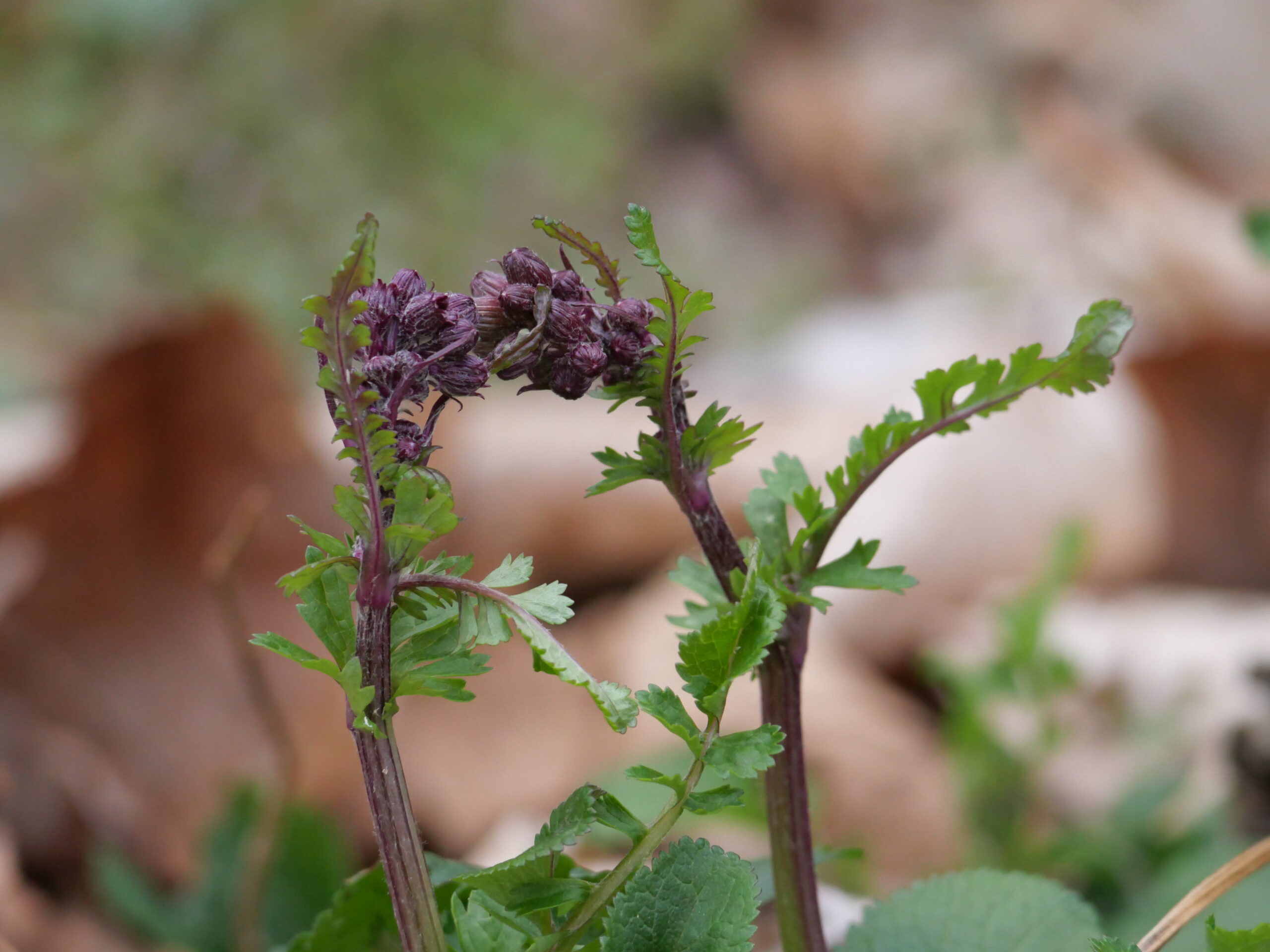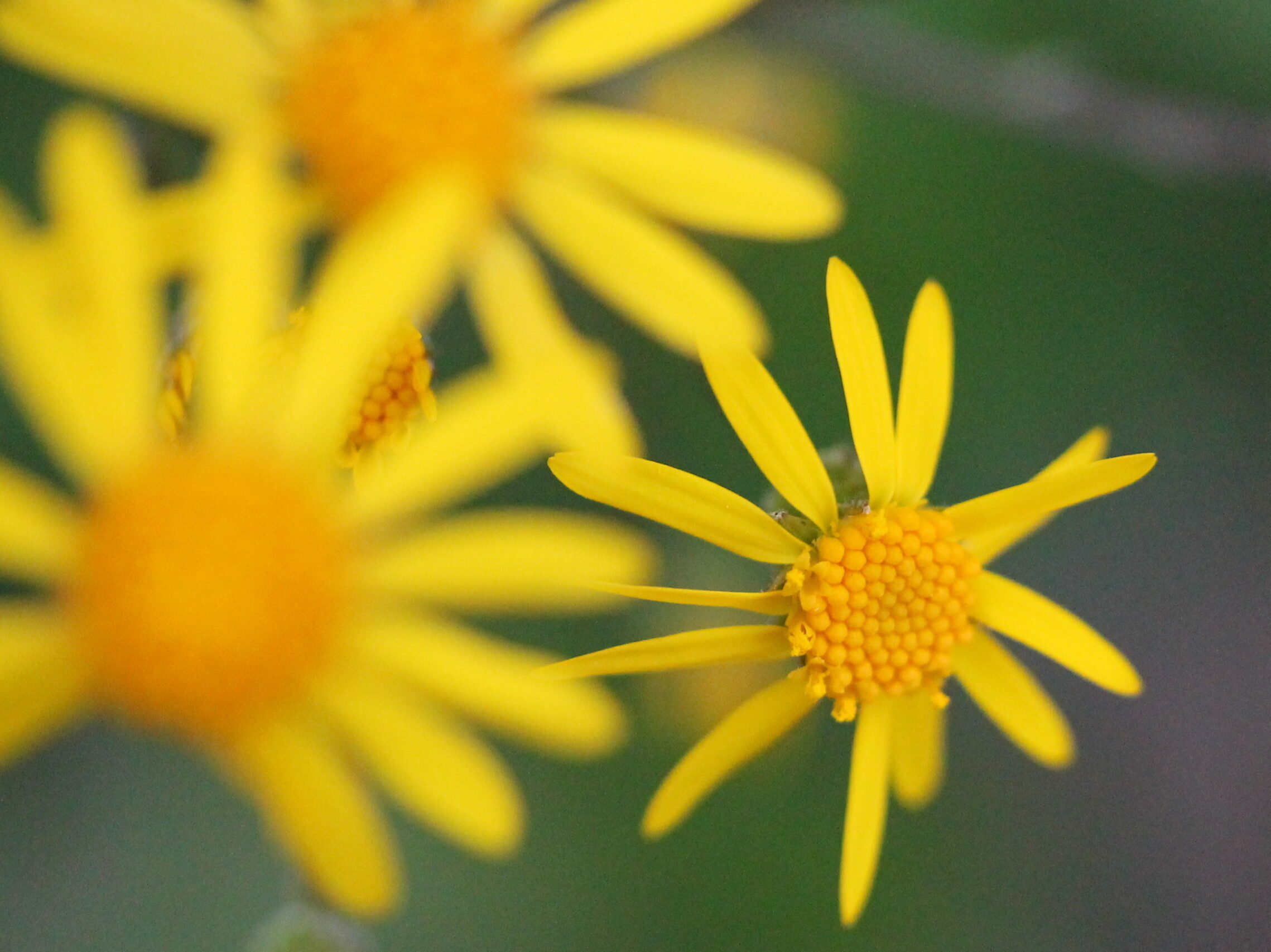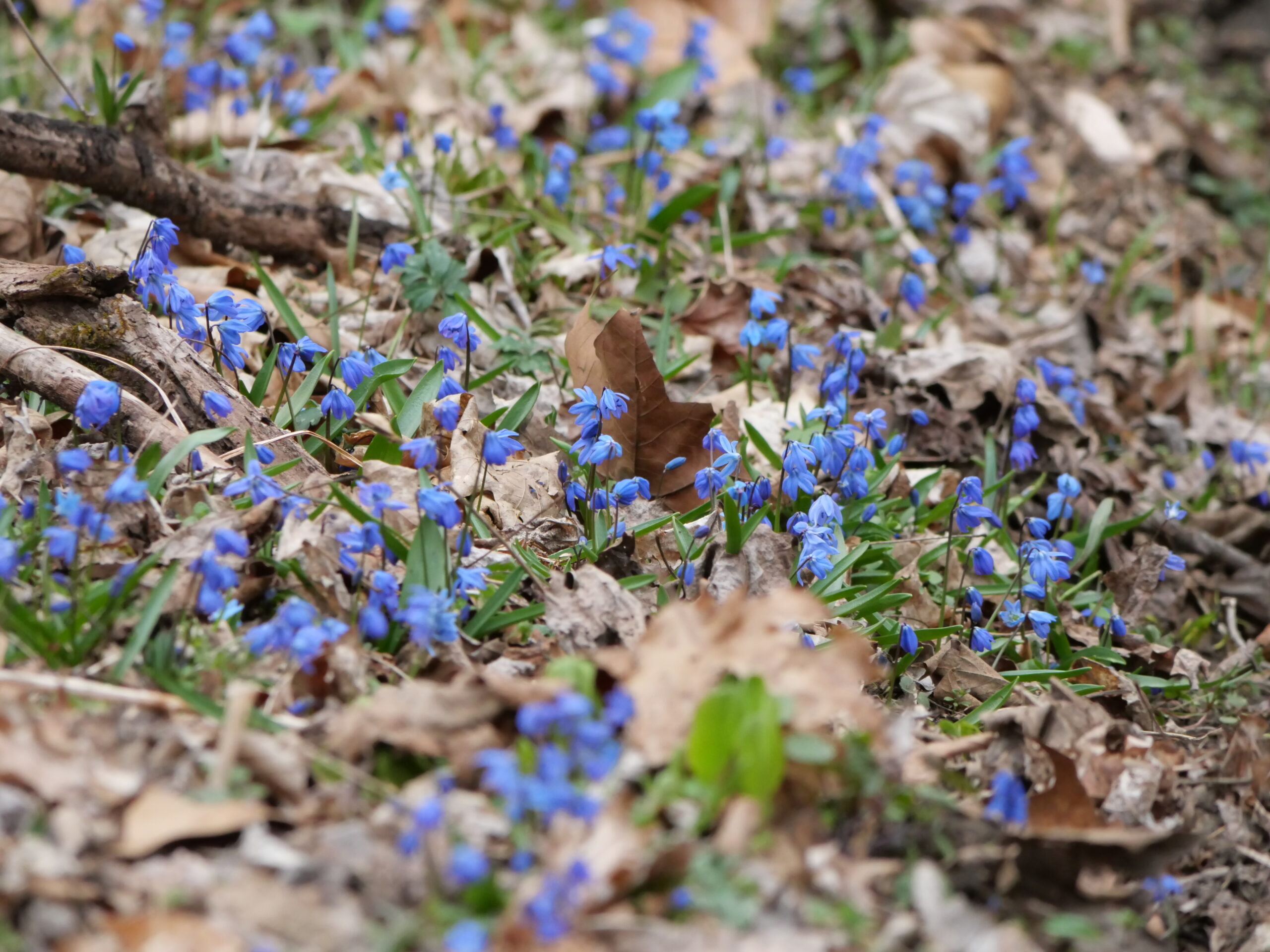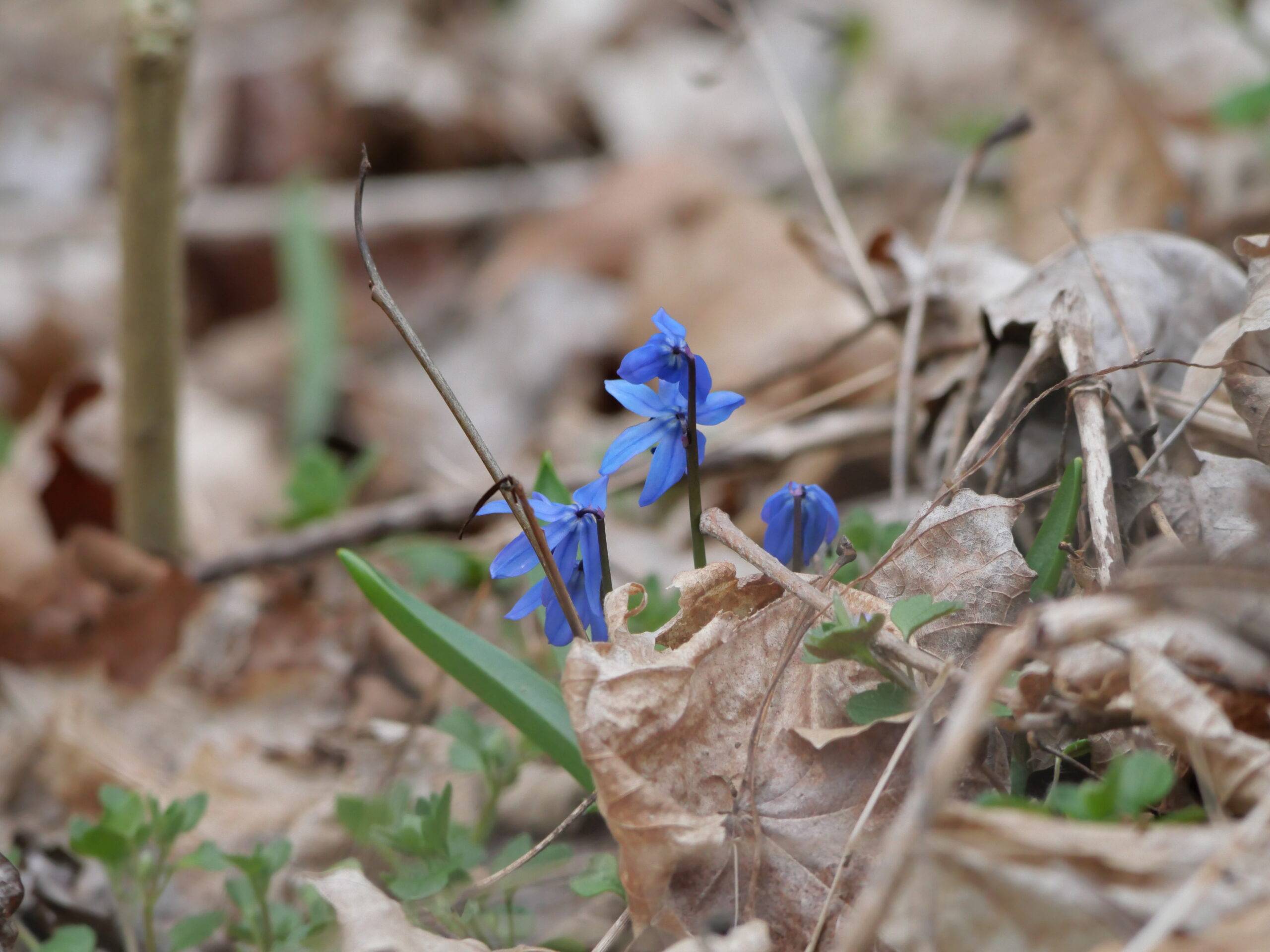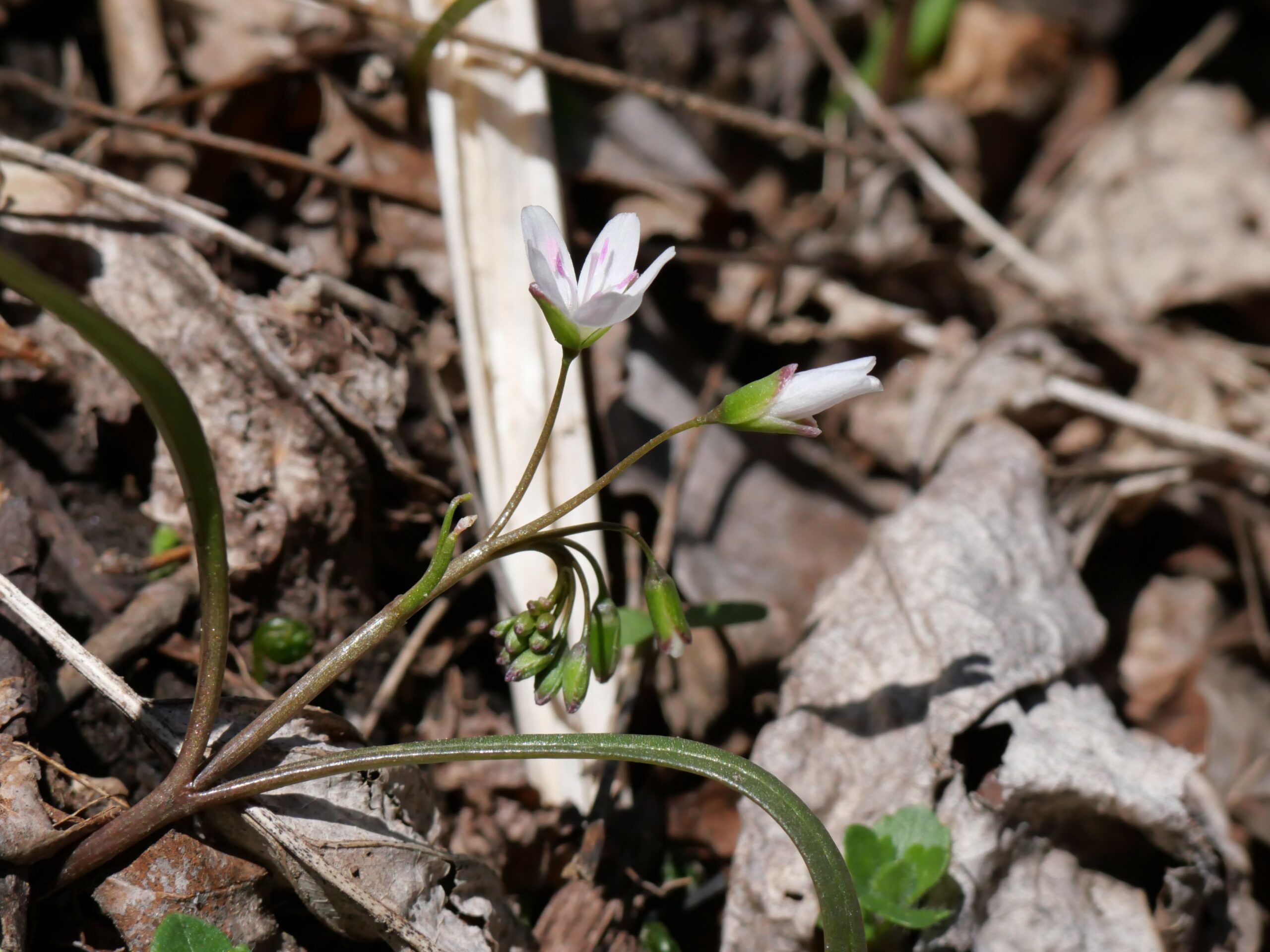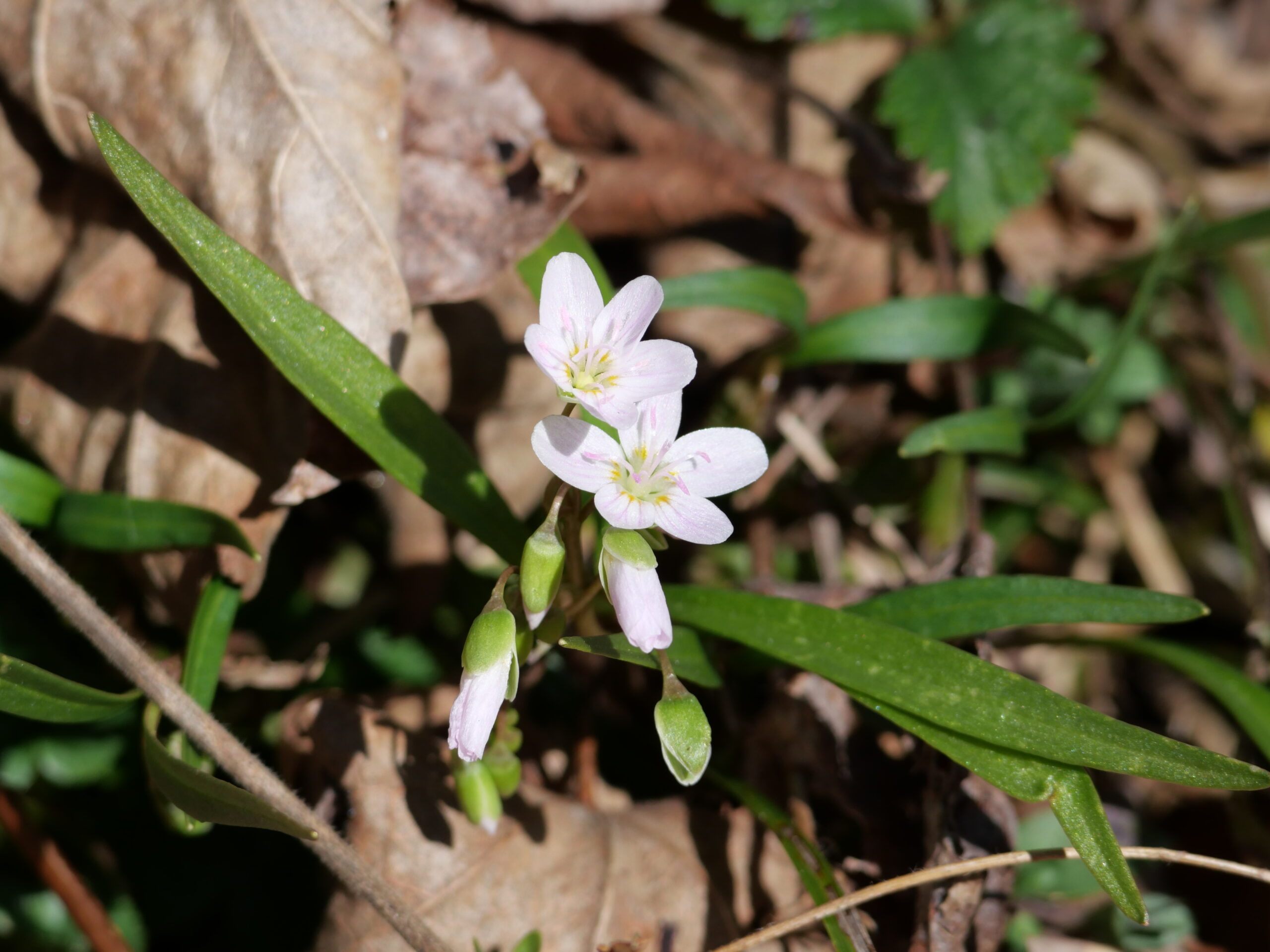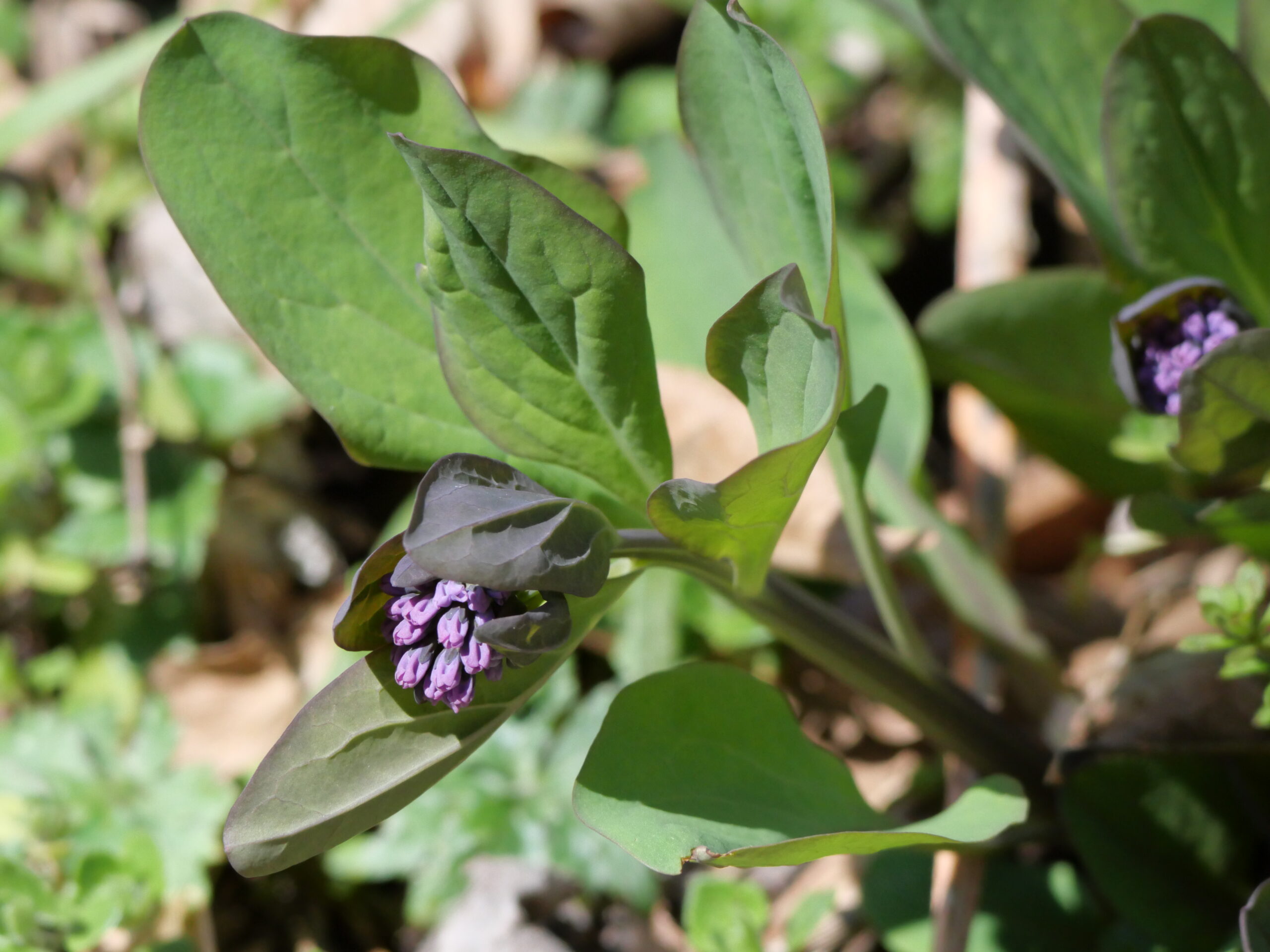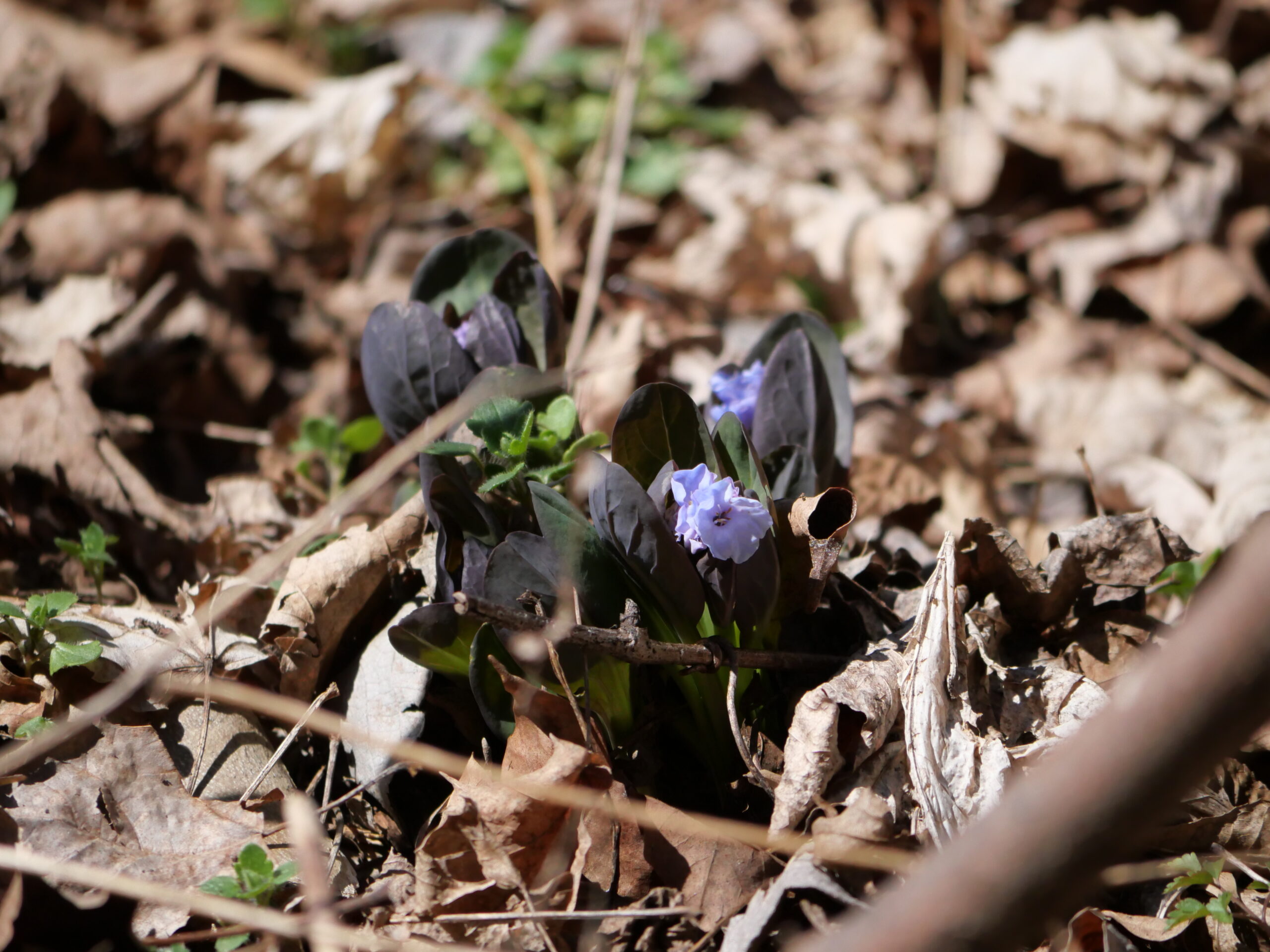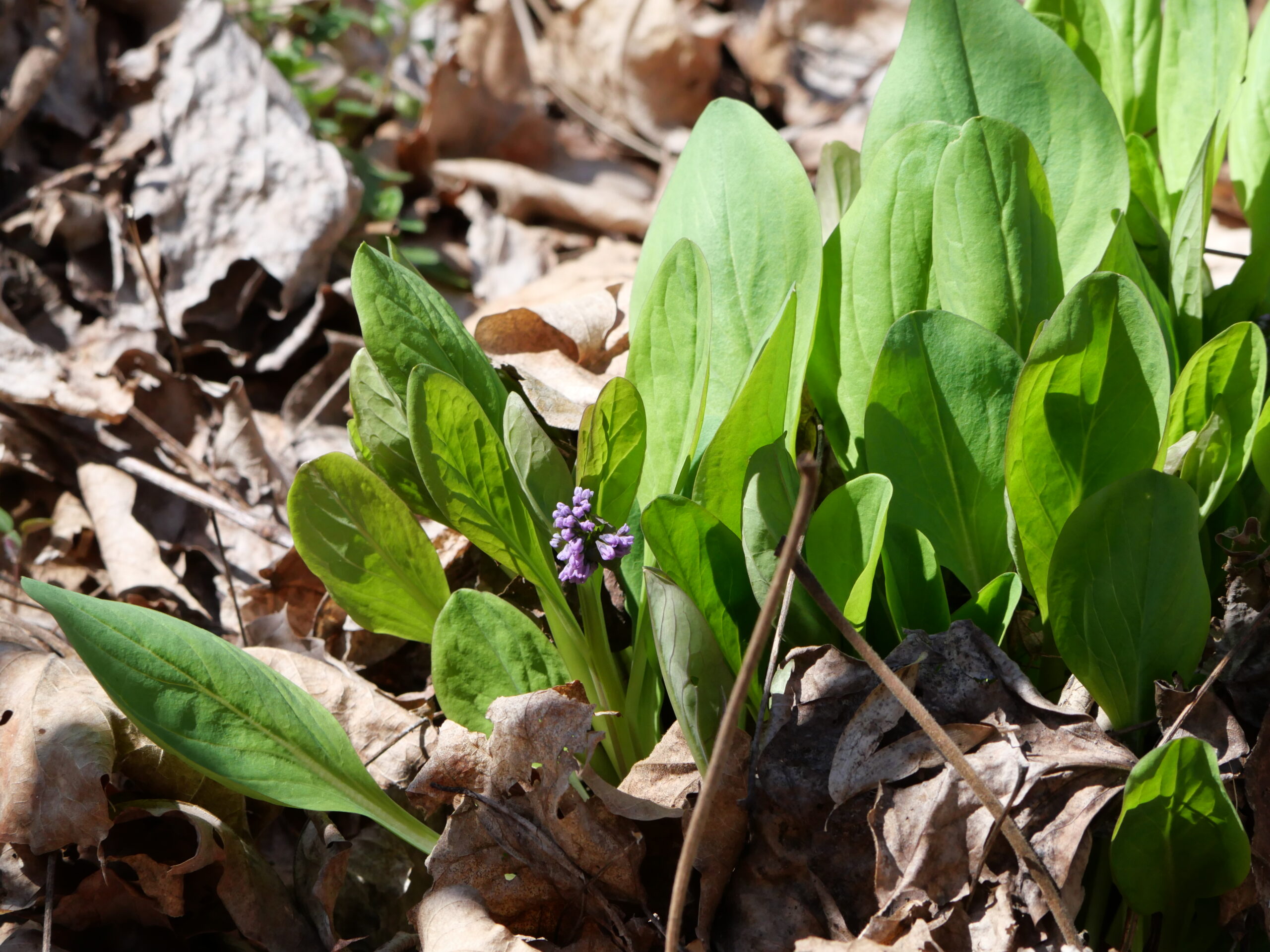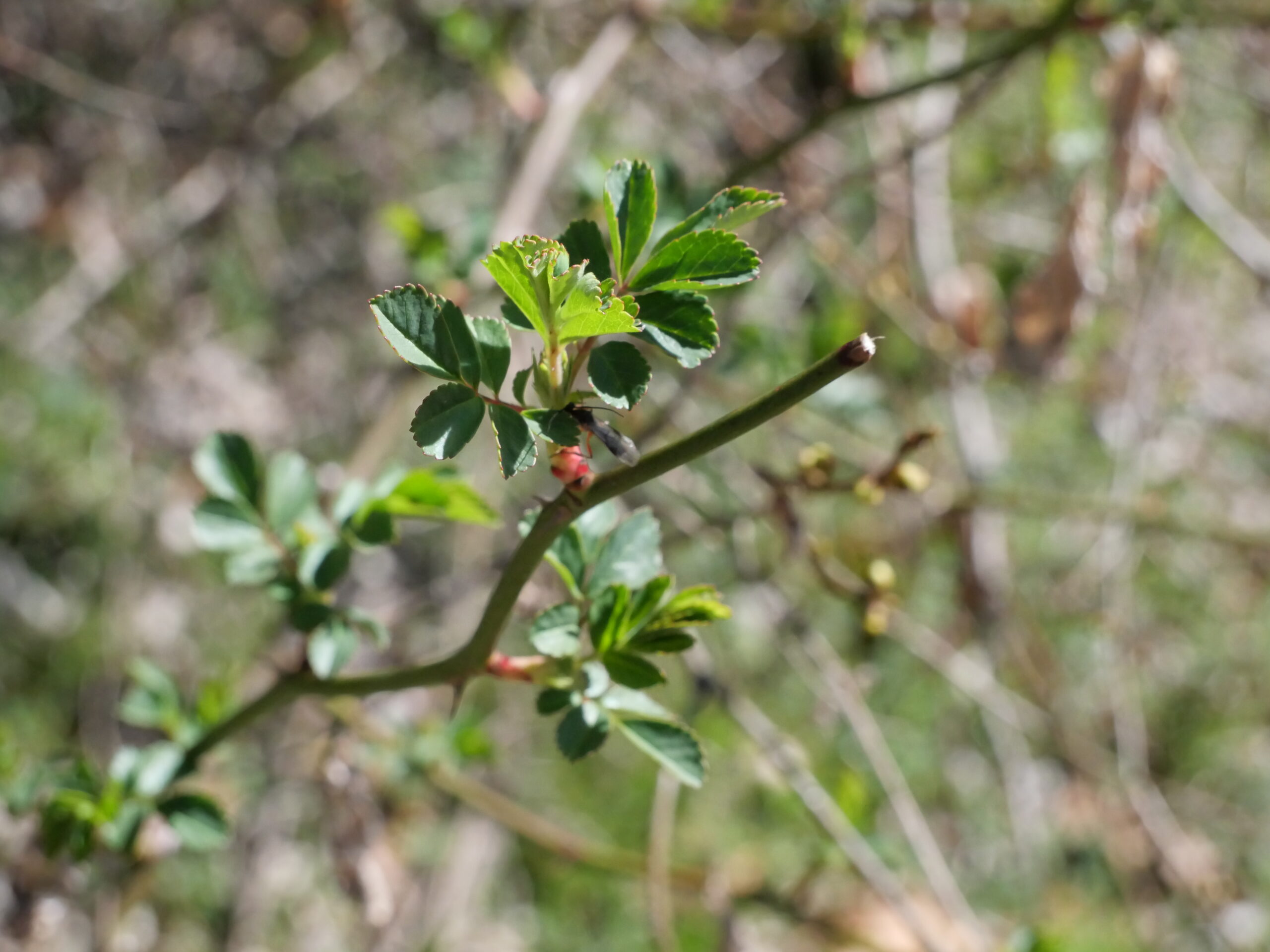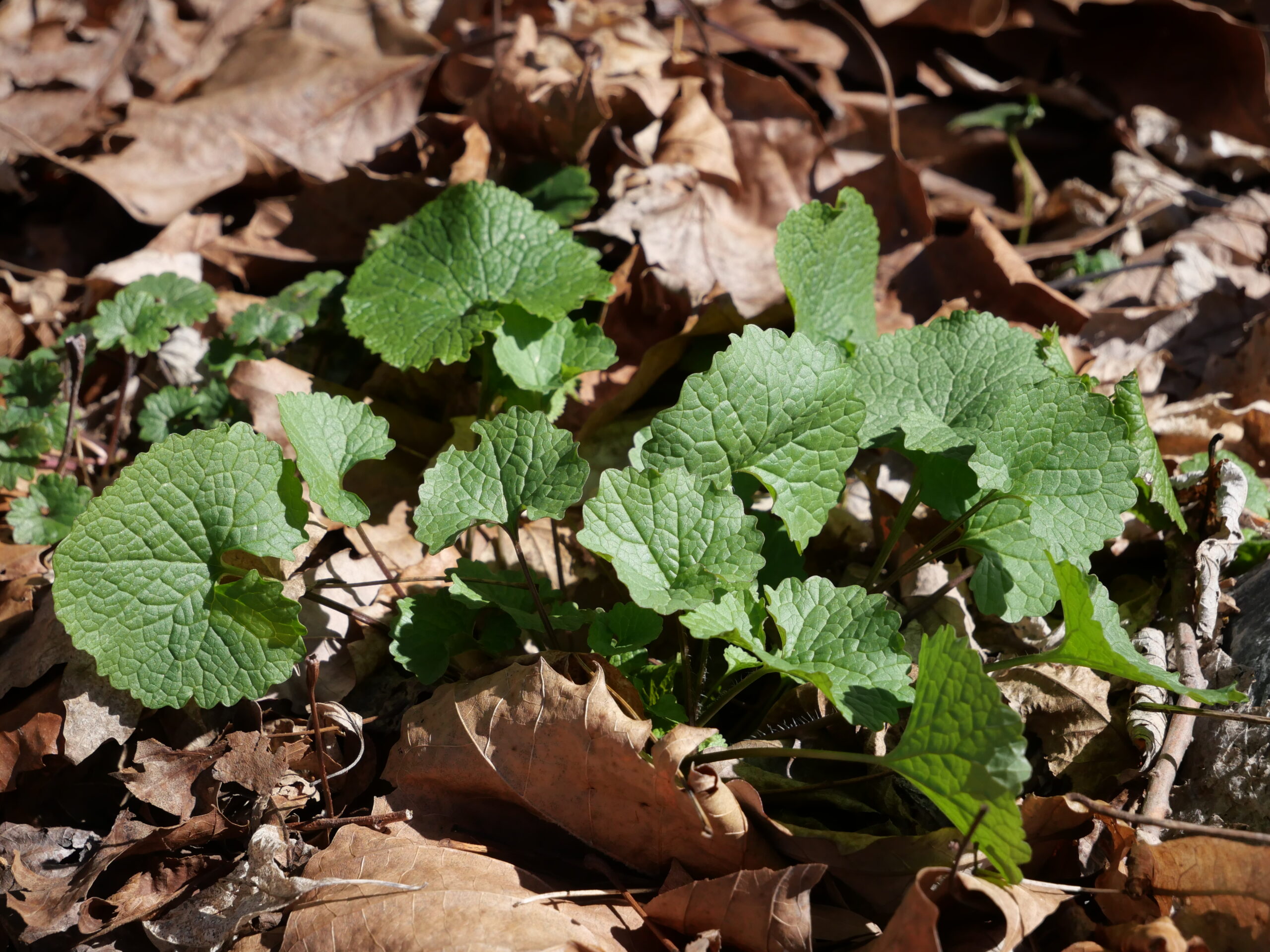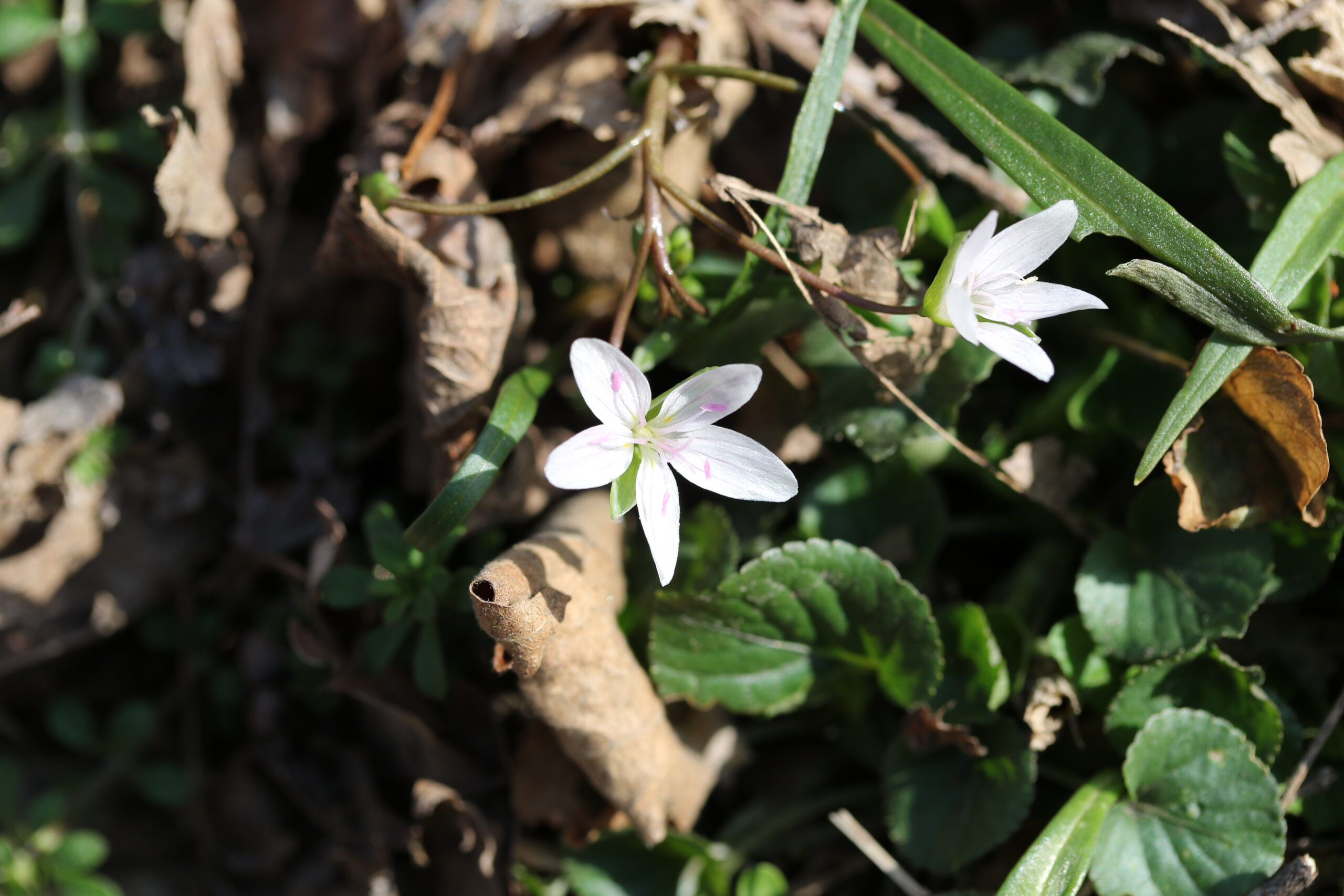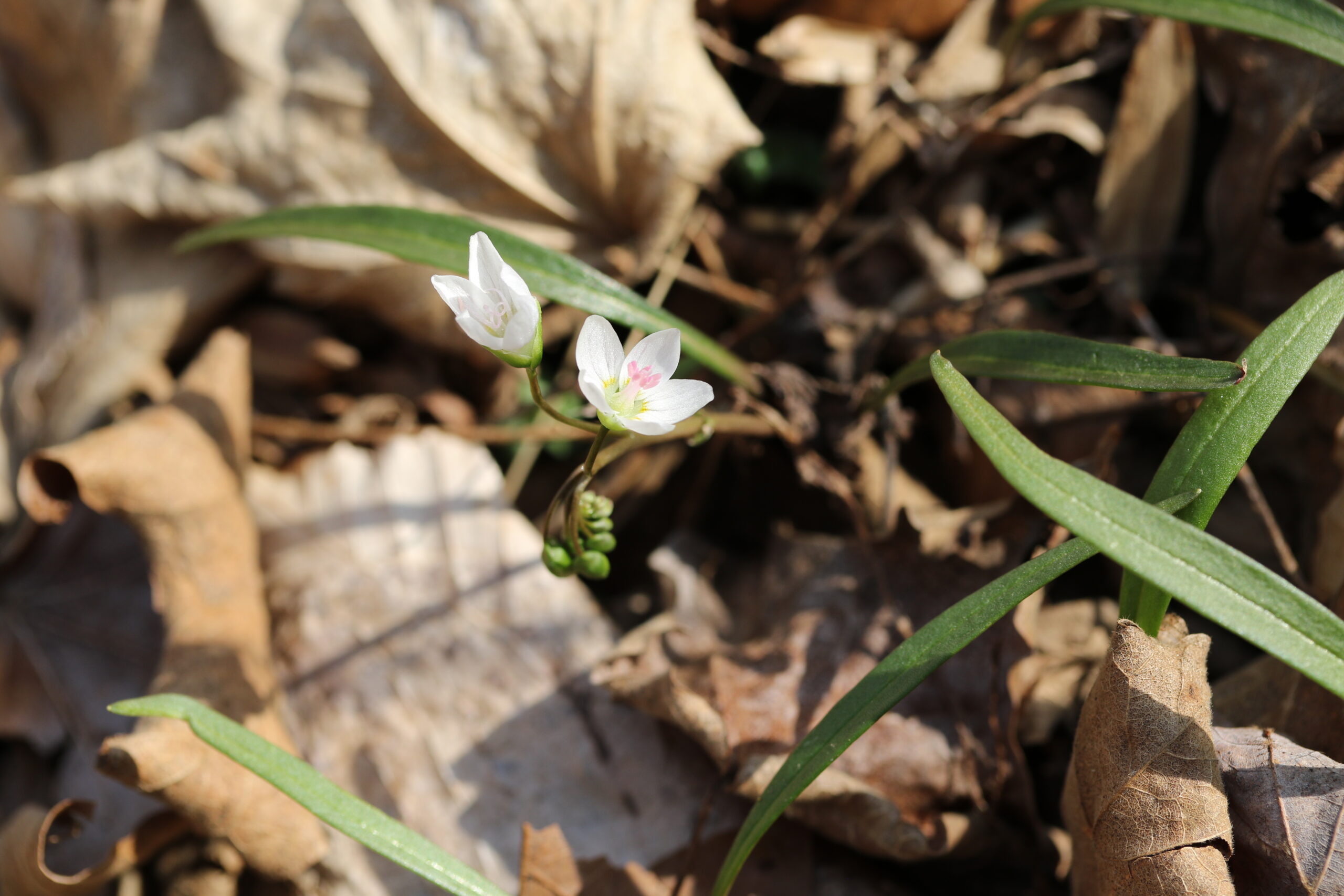By Avery Van Etten, Lancaster Conservancy Marketing & Communications Manager
Shenks Ferry Wildflower Preserve is a favorite for its spring ephemeral flowers. For a brief time when the weather starts to warm up, the wildflowers peek up from the ground and seek out the sunlight. Virginia bluebells, Dutchman’s breeches, Susquehanna trillium, golden ragwort, and around a dozen other spring ephemerals line the Gamber Wildflower Trail at Shenks Ferry, signaling the start of spring.
Here is what’s blooming at Shenks Ferry right now.
April 21, 2023
While Virginia bluebells dominated Shenks Ferry earlier in the spring ephemeral season, now the wildflower preserve is a land of phlox. Some of the mayapple buds are just starting to open up, but the trillium and bluebells, although still lovely, are declining as the trees leaf out and block sunlight from reaching the ephemerals on the ground.
Along the trail at Shenks Ferry, you may also spot some golden ragwort or red columbine. And the native false Solomon’s seal are just starting to show their buds. According to the Pennsylvania Department of Conservation and Natural Resources, false Solomon’s seal flowers grow at the end of a long, leafy stem, while the flowers of Solomon’s seal dangle below their stem. False Solomon’s seal gets clusters of star-shaped white flowers followed by red berries.
This is the final spring ephemerals update for 2023. If you haven’t visited Shenks Ferry Wildflower Preserve yet this season, now is the time! It’s beautiful all year long, but it’s especially spectacular in the early spring when the wildflowers are blooming. I hope you enjoy your visit!
April 14, 2023
Although some of the Virginia bluebells and trillium are past their prime, Shenks Ferry is still a wildflower wonderland! The trails are lined with the purple-blues of bluebells and phlox — and the phlox seem to have really hit their stride this week.
Among the predominantly purple-blue ephemerals, you can also see patches of golden ragwort and red columbine starting to bloom. And the mayapples are taking off, their umbrella-like leaves shading the ground in several places, although their buds haven’t quite opened yet.
Also starting to show up at Shenks Ferry this week are pollinators! Butterflies, bees, and other bugs are flying among the flowers.
New This Week: Red Columbine and Squirrel Corn
This week, for the first time this season, I saw red columbine and squirrel corn blooming.
The red columbine has spurred petals with long tubes that contain nectar, attracting long-tongued insects and animals, like hummingbirds, according to the Lady Bird Johnson Wildflower Center.
Squirrel corn has cream-colored flowers that look similar to Dutchman’s breeches (which I didn’t see many of this week). Despite its food-related name, squirrel corn is poisonous and can cause skin irritation, as noted in this Northcentral Pennsylvania Conservancy post.
April 6, 2023
This weekend is set to be the peak for spring ephemerals at Shenks Ferry Wildflower Preserve, with species like Virginia bluebells, trillium, spring beauties, Dutchman’s breeches, and more all blooming this week!
Phlox
Beautiful purple-blue phlox flowers are newly blooming at Shenks Ferry this week. The flowers of woodland phlox, or Phlox divaricata, attract butterflies, according to the Lady Bird Johnson Wildflower Center, and animals like rabbits eat the plant’s roots.
Trillium
While they were mostly just buds last week, many trillium are now open. There are several different species of trillium that grow at Shenks Ferry. While the stinky flowers attract flies for pollination, trillium seeds are primarily dispersed by ants, which are attracted to the plant’s elaiosomes – packets of fat and protein, explains Lancaster Conservancy Vice President of Engagement & Education Keith Williams.
Star-of-Bethlehem
Although they may look pretty, these Star-of-Bethlehem flowers blooming at Shenks Ferry this week are invasive. The Pennsylvania Department of Conservation and Natural Resources says Star-of-Bethlehem — which is a name used for two separate but similar species — was likely introduced to New England as a horticultural plant. In addition to being invasive, the plant is also poisonous to livestock and people, according to the DCNR.
Bluebells and breeches and beauties — oh my!
This week, Virginia bluebells, Dutchman’s breeches, and spring beauties are ALL OVER Shenks Ferry Wildflower Preserve! Visitors can also see blue cohosh, cutleaf toothwort, mayapple, saxifrage, and yellow trout lilies.
March 31, 2023
Yellow Trout Lilies
This week, some yellow trout lilies started blooming at Shenks Ferry! These spring ephemerals get their name from their speckled leaves, which resemble the side of a trout, explains Keith. Trout lilies are pollinated by queen bumble bees, cabbage butterflies, sulfur butterflies, and early season flies, Keith notes.
Trillium
Several trillium buds also appeared at Shenks Ferry this week. There are a few different varieties of trillium that grow at Shenks Ferry, and we can’t tell exactly which species these plants are until their buds open. Nodding trillium has white flowers, stinking Benjamin trillium has maroon flowers, and Susquehanna trillium has white flowers with a red center, as Keith described in a recent Nature Hour presentation. These flowers may stink to humans’ noses, but their smell helps attract flies for pollination.
Mayapple
Looking like little half-open umbrellas, some mayapple plants have started to show at the wildflower preserve this week, as well. These native ephemerals have just two leaves and grow one white to rose-colored flower where the leaves branch apart, according to the Lady Bird Johnson Wildflower Center.
And More!
There are Dutchman’s breeches everywhere around the preserve this week, their dangling white and yellow flowers lining the paths through Shenks Ferry. The Virginia bluebells are also plentiful, and many are blooming this week, although there are also a lot that haven’t gotten their flowers quite yet. Blue cohosh, golden ragwort, and tons of spring beauties can be seen at Shenks Ferry this week, too. Although there were more last week, I did find one bloodroot bud, as well.
Among the native spring ephemerals on the preserve, some invasive celandine did start flowering this week, as well. According to Penn State Extension, lesser celandine was introduced to North America in the 1800s as an ornamental plant.
March 24, 2023
Bloodroot
A few bloodroot blooms popped up at Shenks Ferry this week. According to the National Park Service, bloodroot flowers usually only last for a couple of days, but they are eye-catching while they are around with their white petals and yellow anthers.
Pollinating insects are attracted to the bloodroot flowers, but the blooms don’t actually have any nectar to give the bugs in return for their role in pollination, the National Park Service explains. Ants help to disperse bloodroot seeds, which contain an oil-rich structure that provides food for the ants, according to the National Park Service.
Virginia Bluebells & Dutchman’s Breeches
Virginia bluebells and Dutchman’s breeches are the most abundant spring ephemerals around Shenks Ferry this week. They’re still mostly in the early stages of producing buds, although some (like the ones pictured below) have more fully grown flowers. More and more of these wildflowers are showing up each week, and it feels like it won’t be long now until they are all in full bloom!
Blue Cohosh
Some blue cohosh also showed up at Shenks Ferry Wildflower Preserve this week. This native spring ephemeral gets purple-brown to yellow-green flowers in the spring, which are then followed by bright blue berries, explains the Lady Bird Johnsen Wildflower Center.
Spring Beauties
Although the first spring beauties started flowering weeks ago, the delicate white-pink flowers can still be spotted growing around the wildflower preserve.
Ground Ivy & Dead Nettle
Ground ivy, or creeping Charlie, and dead nettle are two non-native species that started flowering at Shenks Ferry this week. According to Penn State Extension, ground ivy spreads via stolons, or above-ground runners, that can be around 7 feet long! Dead nettle spreads quickly and forms patches when the weather is cooler in early to mid-spring, Penn State Extension explains.
(Learn more about the difference between non-native and invasive species in last week’s update below.)
March 17, 2023
Dutchman’s Breeches
A few Dutchman’s breeches have started to appear at Shenks Ferry this week! The white and yellow blooms of this spring ephemeral look like little pairs of pants hanging on a line, giving this plant its name.
Dutchman’s breeches have a special relationship with queen bumblebees. The queen is the only member of her colony to survive the winter after being mated in the fall, and she emerges hungry when the weather warms up, explains Keith Williams. The queen bumblebee uses her long proboscis to get nectar and pollen from the Dutchman’s breeches, at the same time helping to pollinate the flower. The plant provides her with the fuel she needs to create her new nest.
Virginia Bluebells
The recent cold weather seems to have slowed down the growth at Shenks Ferry. Soon there will be Virginia bluebell flowers all over the preserve, but this week they are still mostly buds in shades of purple, blue, and pink peeking out from patches of leaves.
Golden Ragwort
Although Keith notes that it isn’t a spring ephemeral, golden ragwort (Packera aurea) is a native plant, and I spotted some of it starting to grow at Shenks Ferry this week. Eventually it will have yellow flowers that attract pollinators like butterflies, but right now it has clusters of purple buds.
Scilla
If you walk the Gamber Wildflower Trail at Shenks Ferry around this time, you’ll probably notice a large patch of purple-blue flowers. Those are non-native scilla.
Keith explained his recent Nature Hour presentation, “Spring in Bloom — A Guide to Our Native Ephemeral Wildflowers,” that non-native plants are not necessarily invasive — sometimes they become naturalized into an environment and can co-exist with the native species there without doing harm. Non-native species become invasive when they start outcompeting native ones, often leading to a reduction in biodiversity. Keith says that scilla is starting to become so abundant on some Conservancy nature preserves that he worries that it may be outcompeting native species.
Spring beauties are still blooming at Shenks Ferry this week, too. And Keith noticed some bloodroot, which gets white flowers with yellow centers, starting to grow there, as well.
March 10, 2023
Spring Beauties
The spring beauties are still growing around Shenks Ferry Wildflower Preserve this week, their delicate light pink and white flowers poking up from the browns of fallen leaves and dirt. This native spring ephemeral has been one of the first to appear at the preserve this year.
Virginia Bluebells
While their purple-blue flowers aren’t quite fully open yet, native Virginia bluebells are making themselves known around the wildflower preserve, as well. Patches of their leaves are apparent all over, and some buds are starting to show.
According to Keith, Virginia bluebells’ nectar is stored at the base of a long tube, so insects trying to get the nectar end up having to pick up and spread the plants’ pollen (unless they eat through the flower at its base to steal the nectar that way).
Non-Native and Invasive Species
Unfortunately, while Shenks Ferry is home to many species of native spring ephemeral flowers, non-native and invasive species also grow there. The Lancaster Conservancy is constantly working to manage invasive species like garlic mustard and multiflora rose, but we must be very careful that in removing invasive species, we aren’t harming the native plants that we want to thrive.
For example, Conservancy staff and volunteers carefully pull garlic mustard from Shenks Ferry Wildflower Preserve, meticulously placing their feet to avoid stepping on any spring ephemerals. The garlic mustard grows around the same time as the ephemerals, so removing it is a very precise task.
The spring ephemerals are an exciting early sign of spring. But sadly many of the plants we see getting green first after winter are non-native or invasive. Penn State researchers found that “the longer period with leaves gives invasive plants an advantage in acquiring more energy from sunlight and their leaves create shade in early spring and late fall that may limit growth of native species, such as forest ephemeral wildflowers.”
You can help support the Conservancy’s work to manage these invasive species and give Pennsylvania’s native wildlife the opportunity to flourish.
March 2, 2023
Spring Beauties
Spring beauties were already popping up at Shenks Ferry at the end of February after (or technically, I guess, during) a generally warm winter. They have small blooms with pink and white stripes and typically grow about 4 to 6 inches tall, according to Penn State Extension. The flower can bloom for up to three weeks, according to Penn State Extension, and it is a nectar and pollen source for native bees.
On a walk last weekend, Keith also saw some Virginia bluebells starting to bud. Soon bluebells will seem to cover entire hillsides around Shenks Ferry Wildflower Preserve!
Watch
Learn more about spring ephemeral wildflowers, from biology to identification, in this Nature Hour presented by Keith Williams, Lancaster Conservancy Vice President Of Community Engagement.
What to Know Before You Visit
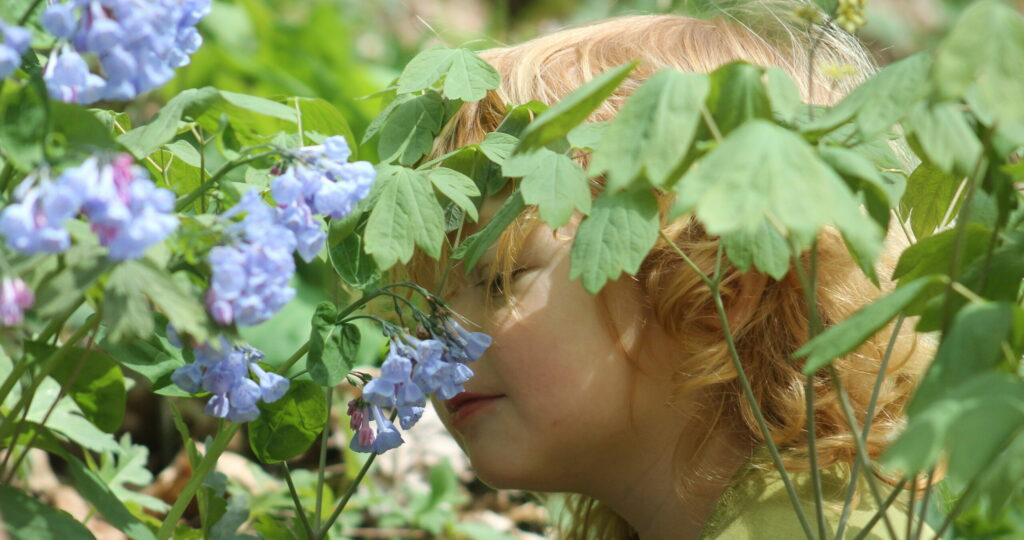
Photo by Michelle Johnsen
If you’re visiting Shenks Ferry Wildflower Preserve, there are a few things you should know to make sure you — and the wildflowers — have the best experience possible.
1. Visit during the week
Shenks Ferry is very busy during spring weekends, so visiting on a weekday can mean fewer people and more space to enjoy the flowers.
2. Leave No Trace
When you visit Shenks Ferry, take nothing but pictures and leave nothing but footprints! Please stay on the trail so you don’t trample any flowers, and make sure you remove any waste you bring onto the preserve. Learn more about Leave No Trace principles here.
3. Know what you’re looking at
Want to identify the flowers you’re seeing? Download the Shenks Ferry Wildflower Preserve brochure! It details some of the most common spring ephemerals found at Shenks Ferry. You can also use an app like Seek by iNaturalist to help identify plants you see around the preserve.
4. Where to park
Please enter the preserve via Shenks Ferry Road, which will take you to the improved parking area and access trail. Green Hill Road south of the preserve is closed, which may not be reflected on GPS programs like Google Maps.
5. Support the stewardship of Shenks Ferry
Caring for this special wildflower sanctuary is an ongoing effort. Your support of Lancaster Conservancy allows for the continued careful stewardship of Shenks Ferry for the benefit of both nature and our community. Thank you for considering making a donation to ensure this special place is here for generations to come.
Thank you to our generous sponsor Brookhills Investment Group for making educational programming about Shenks Ferry Wildflower Preserve and the native plants it protects possible.
